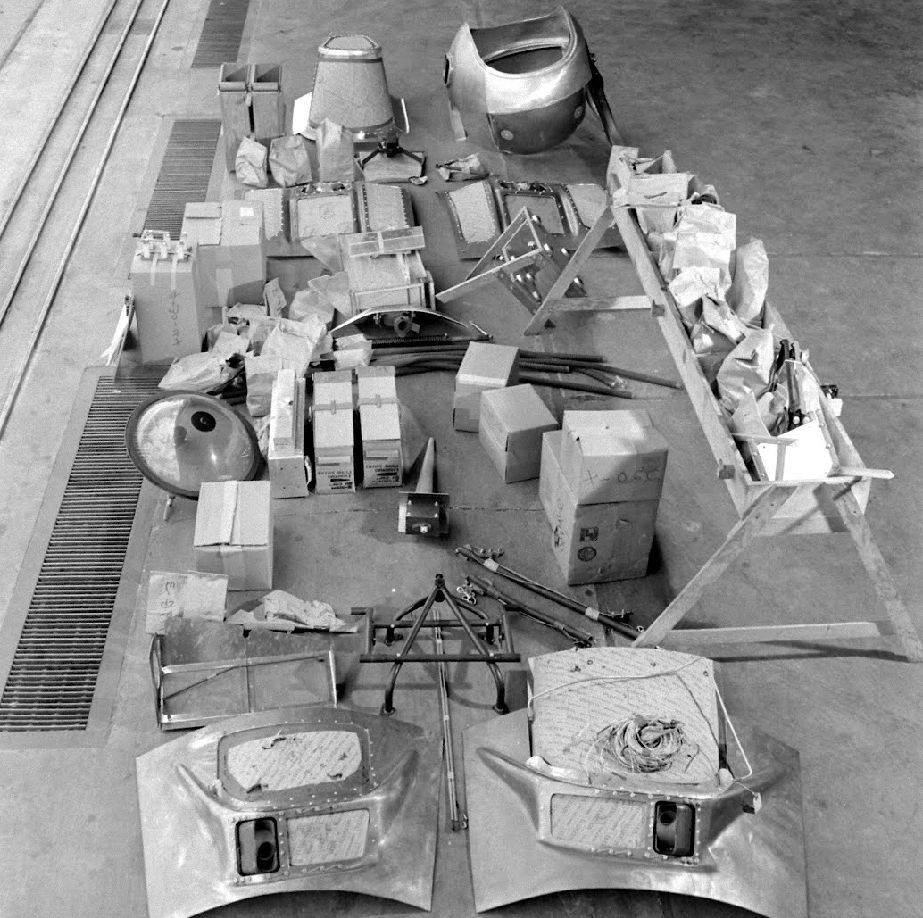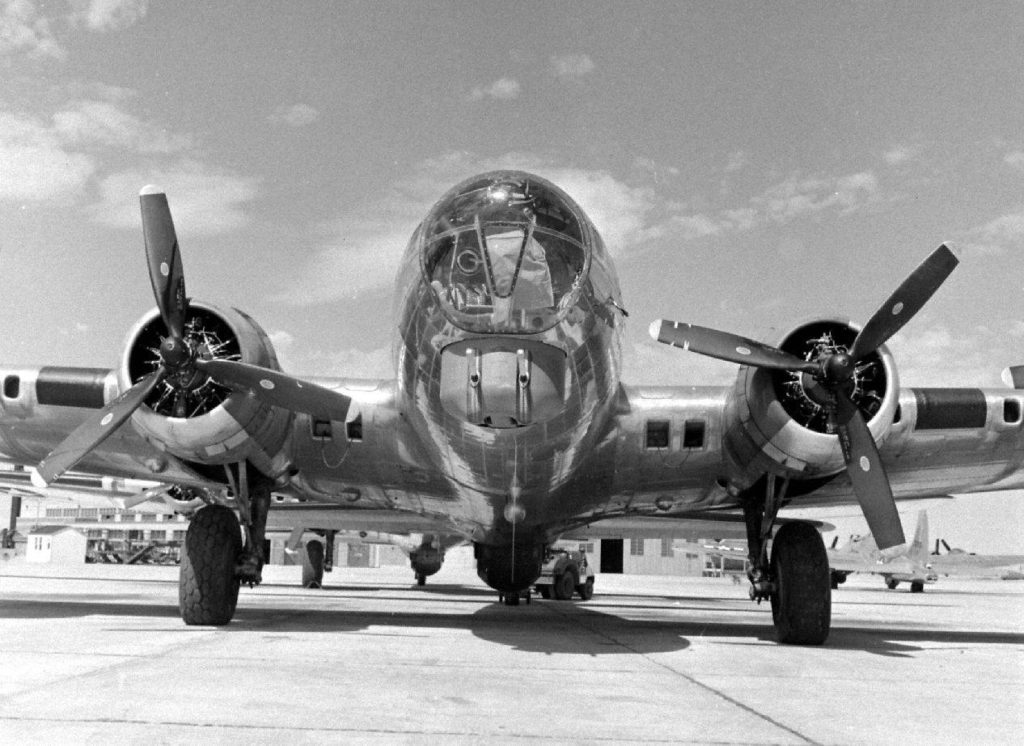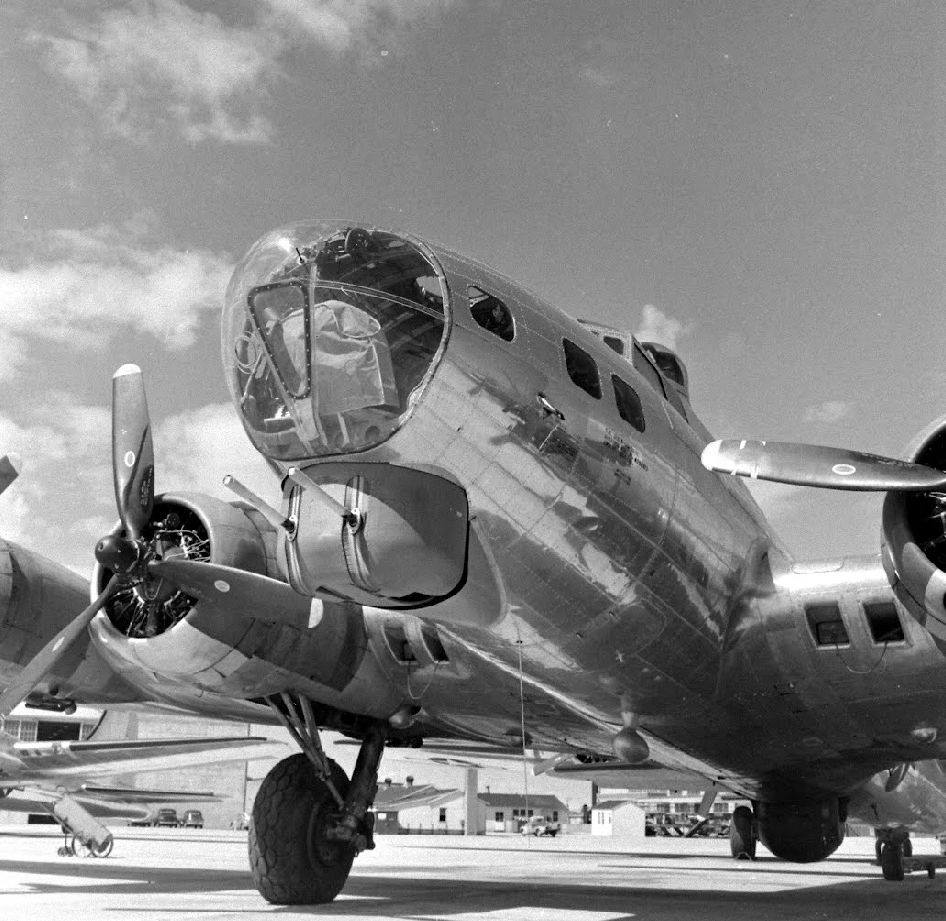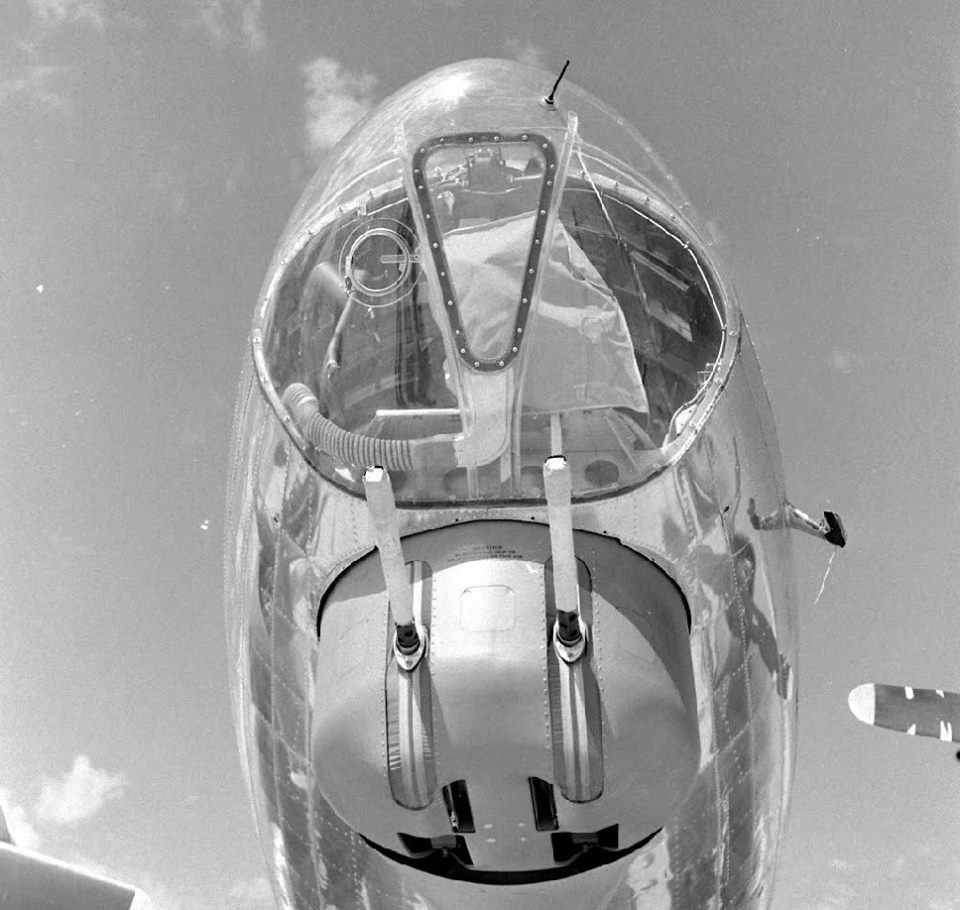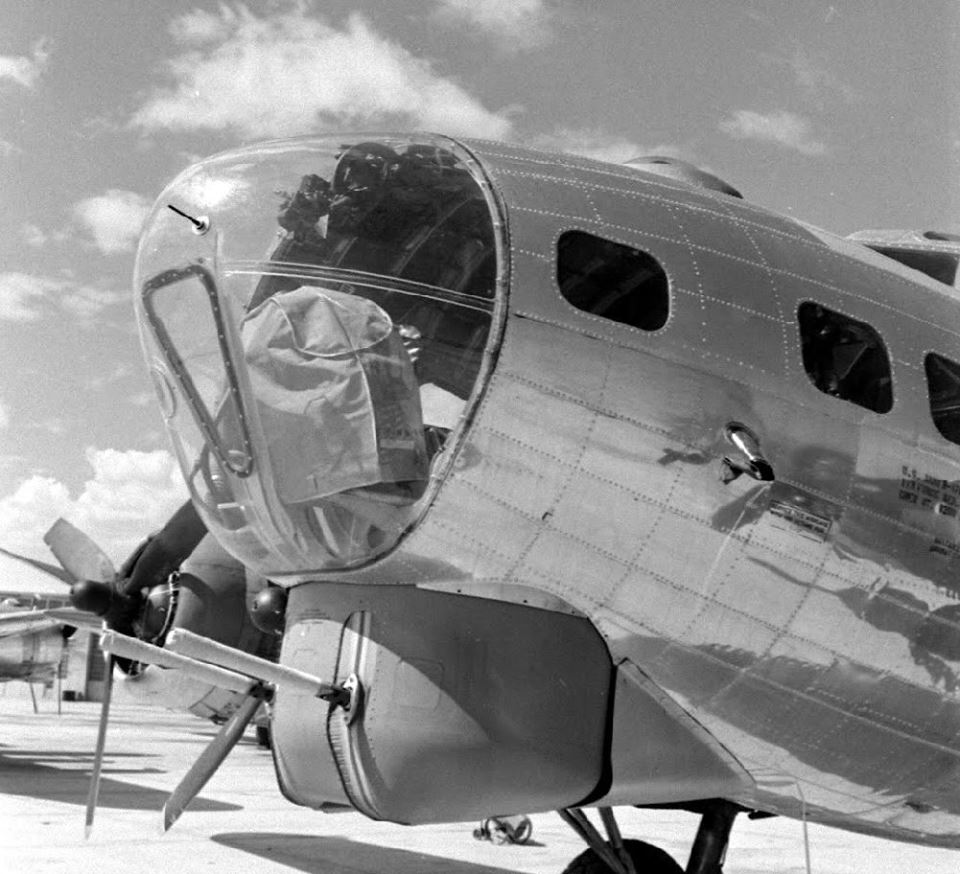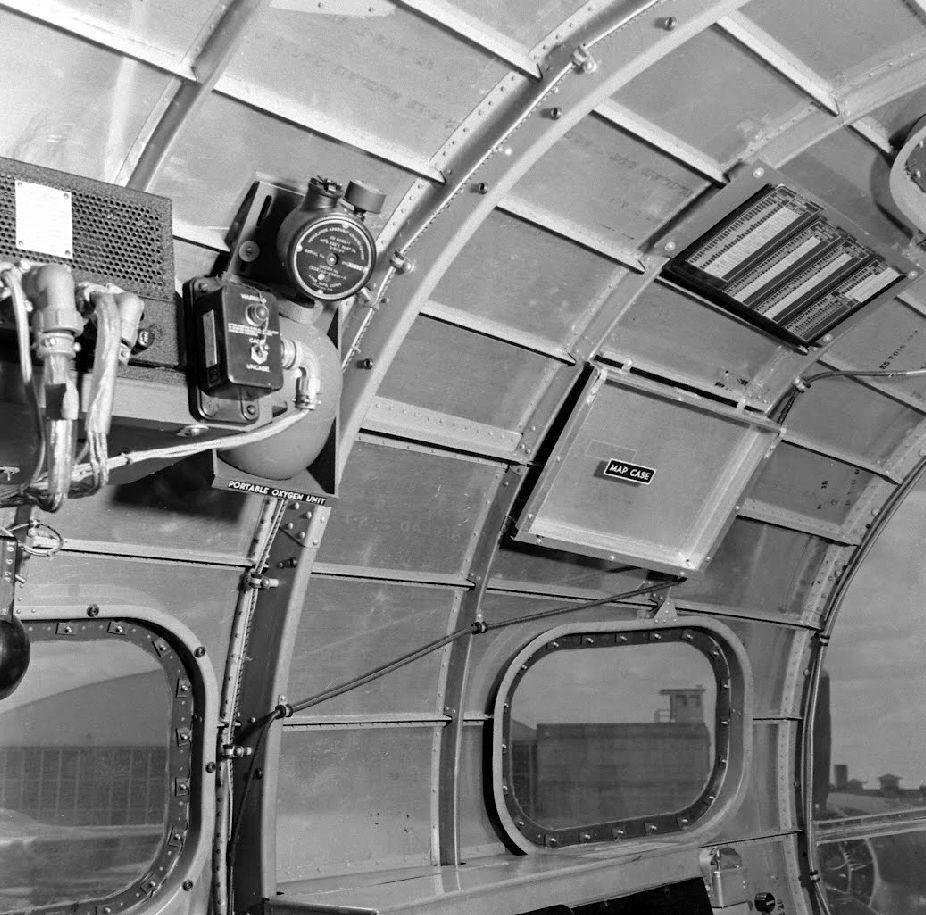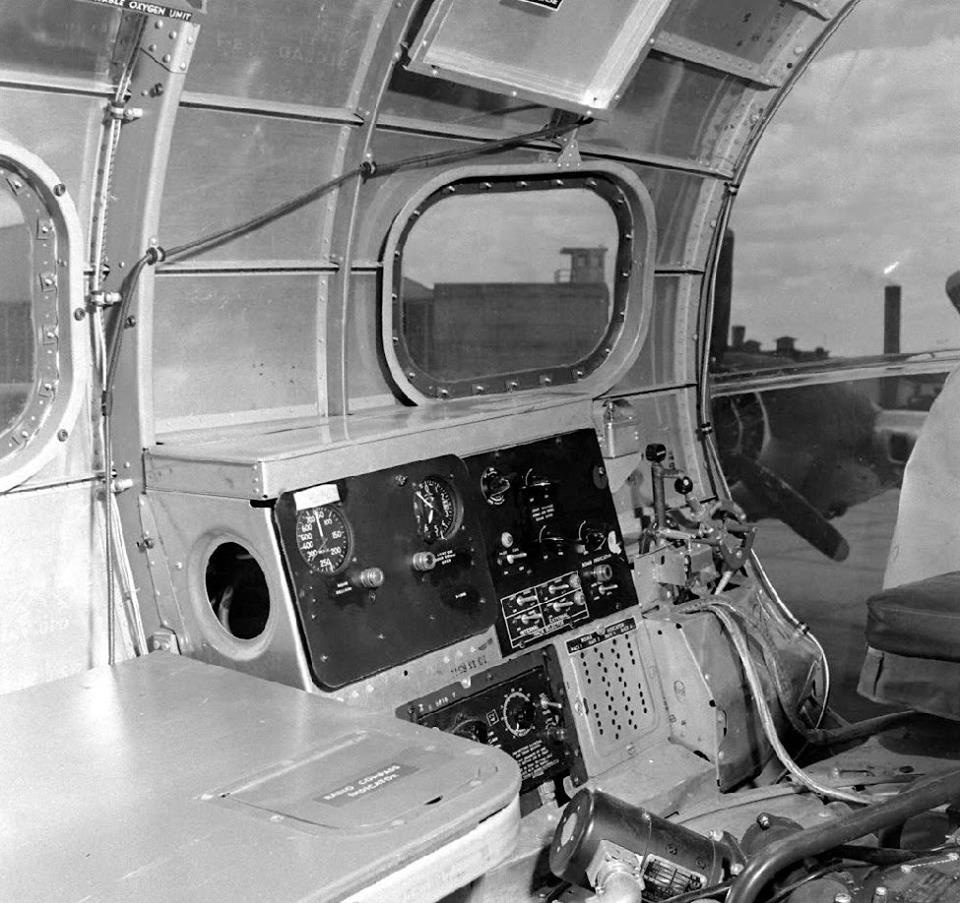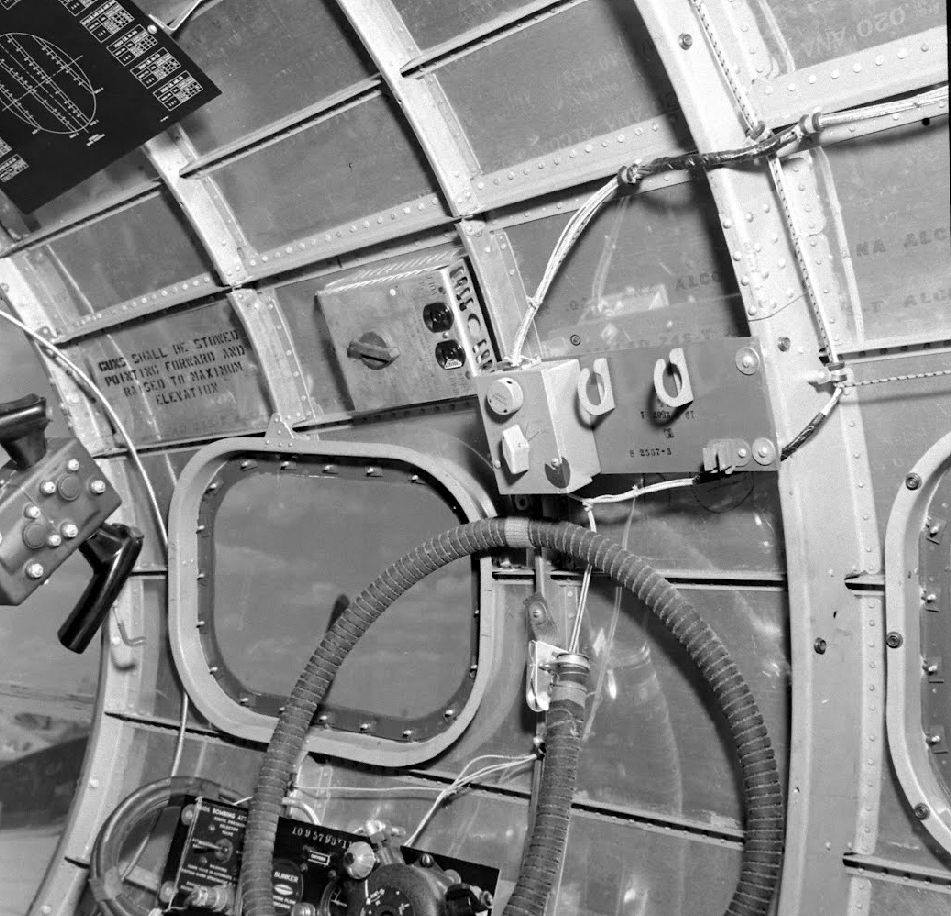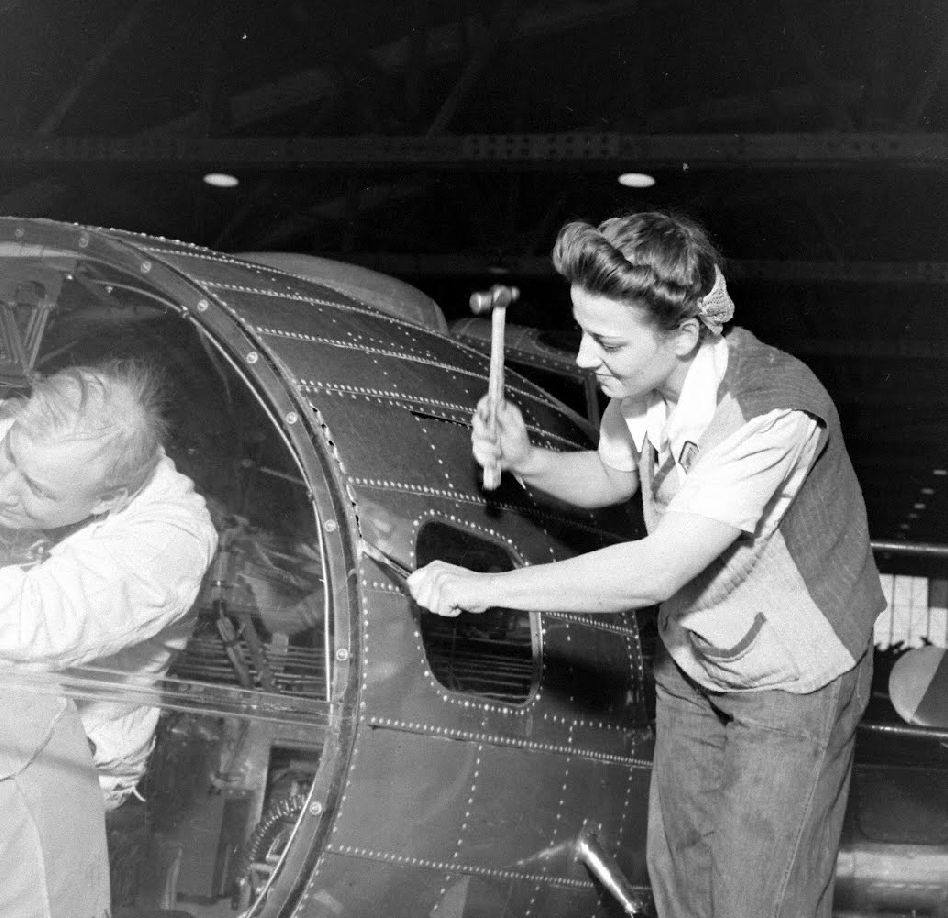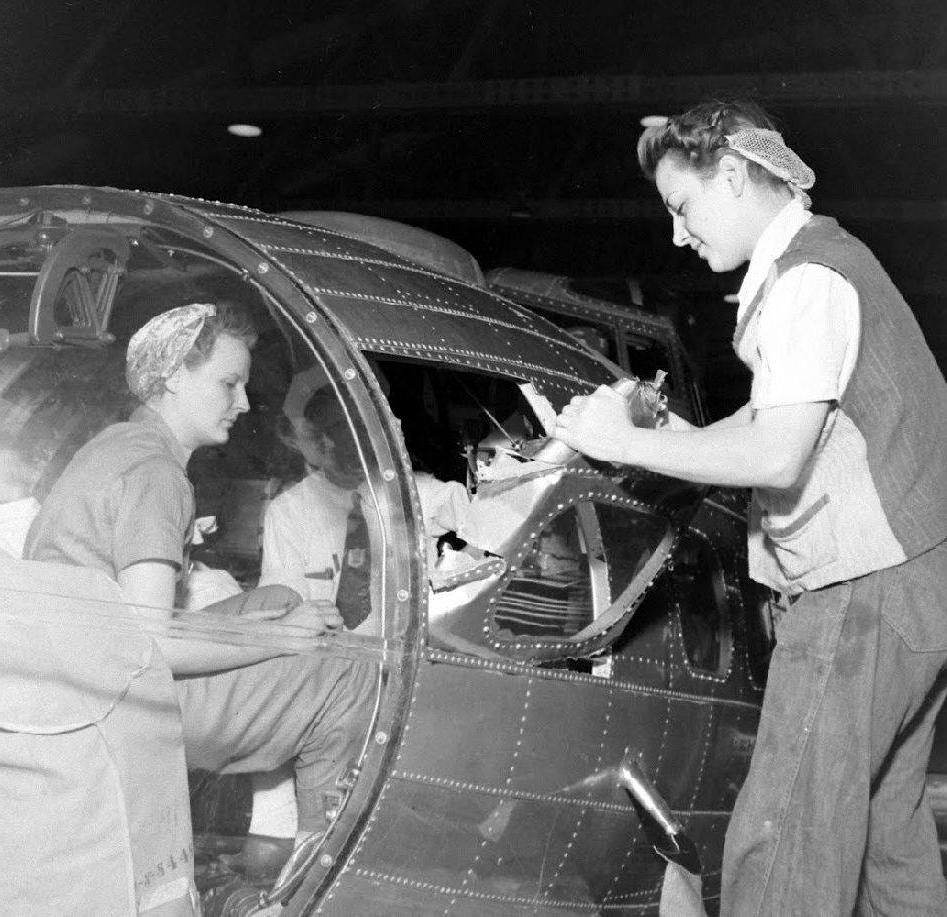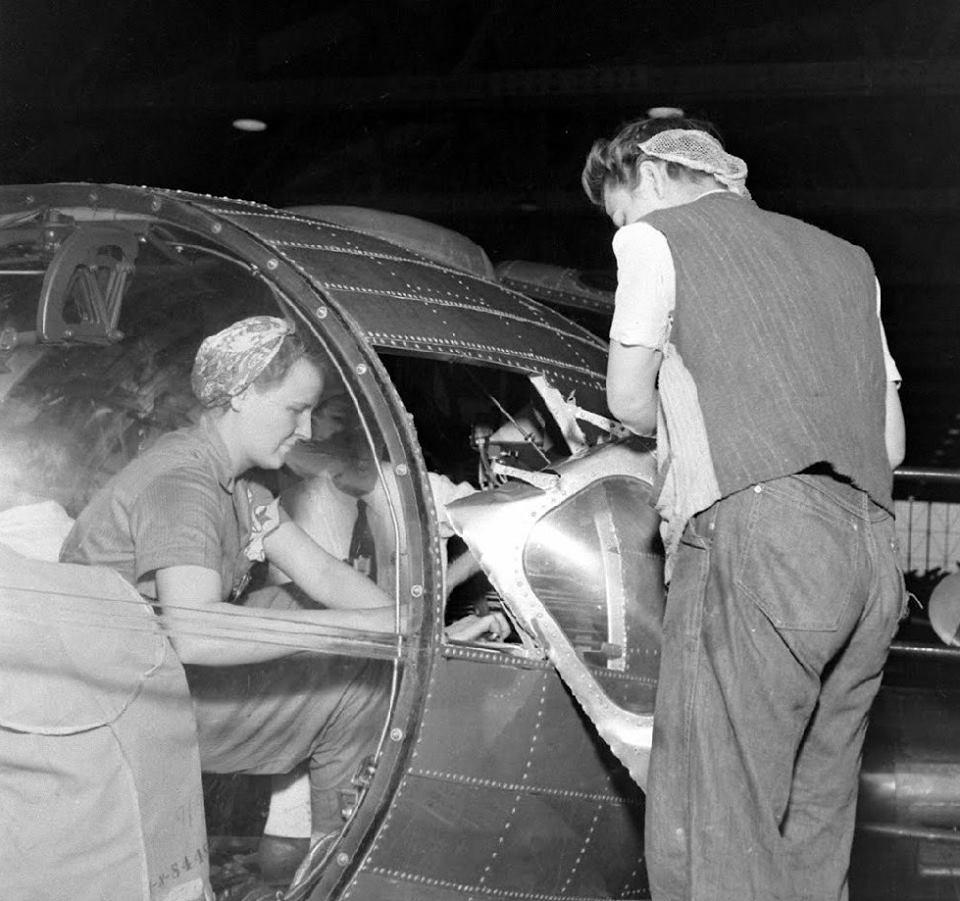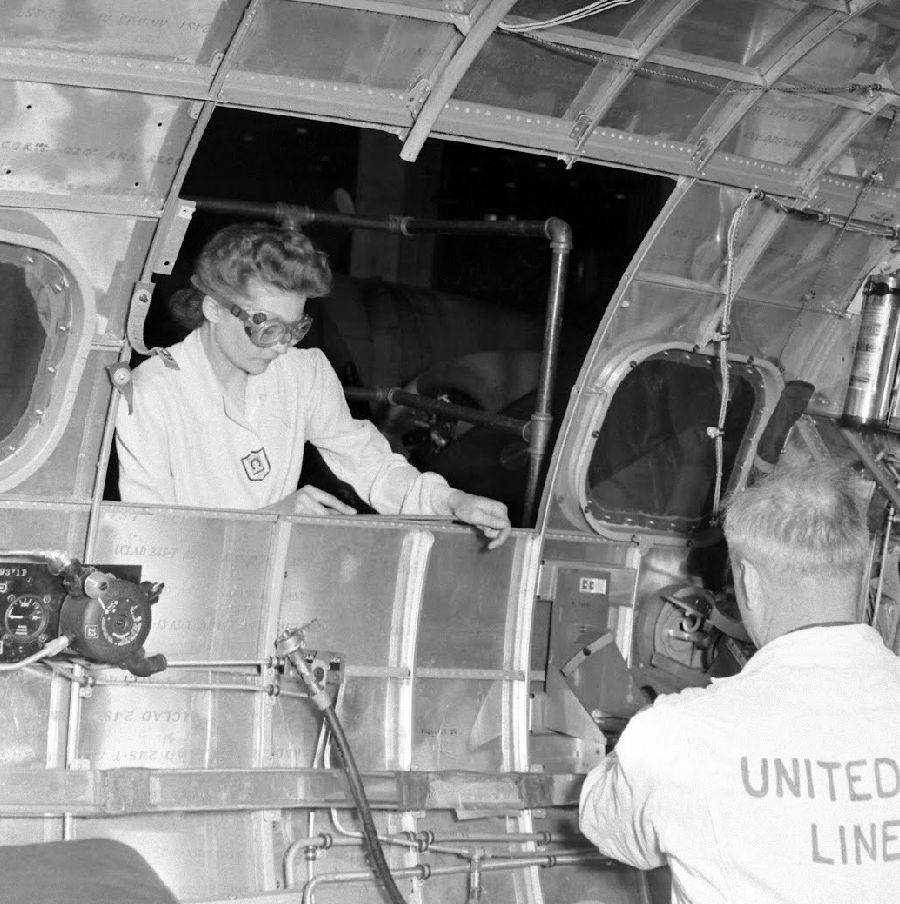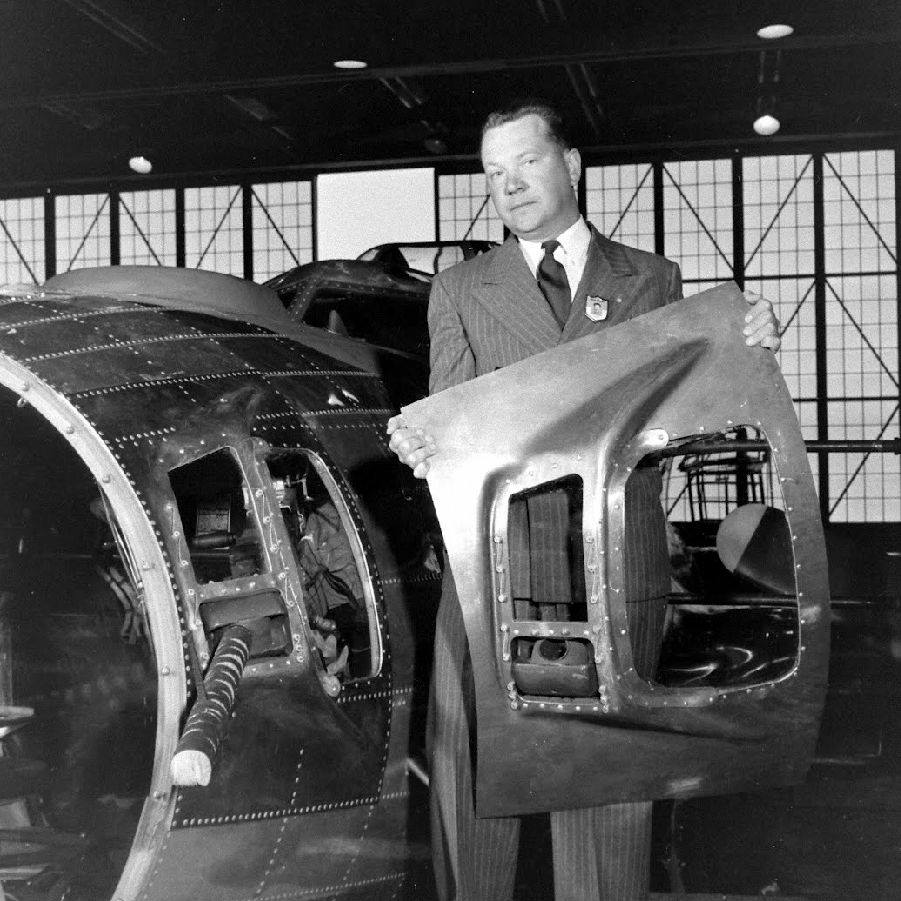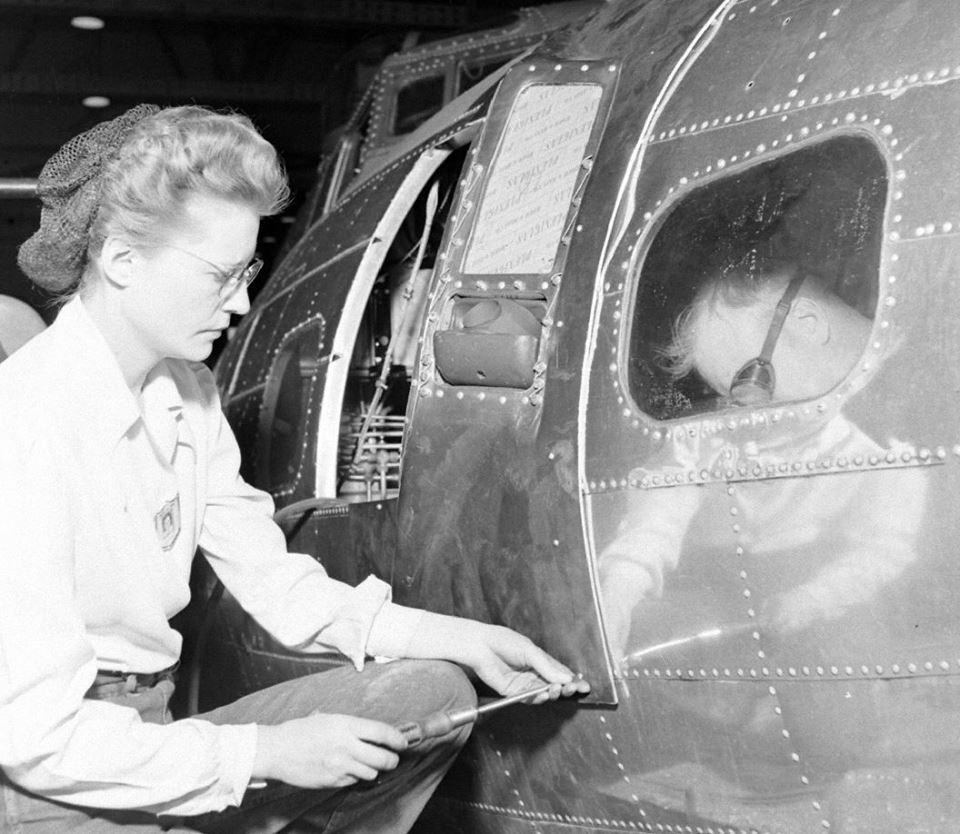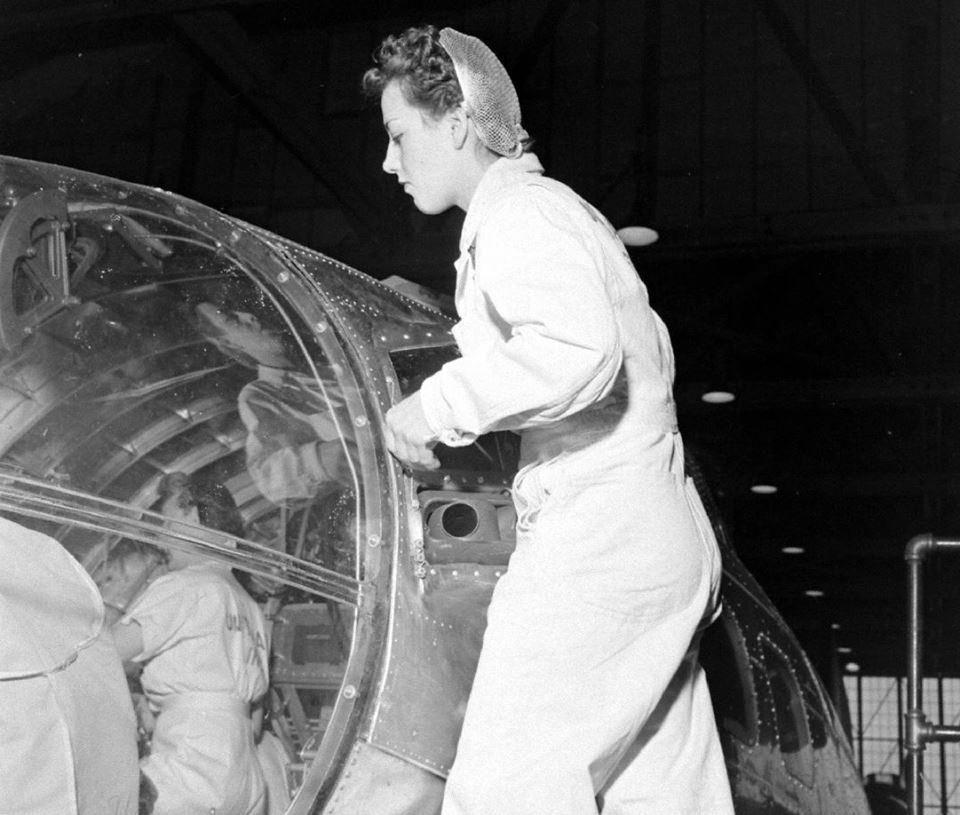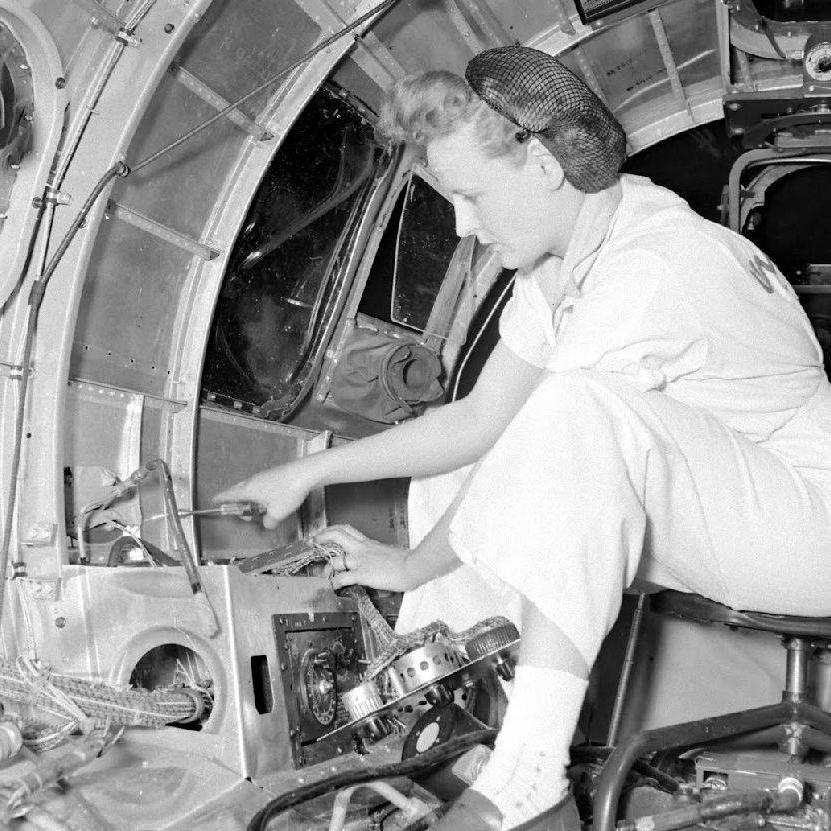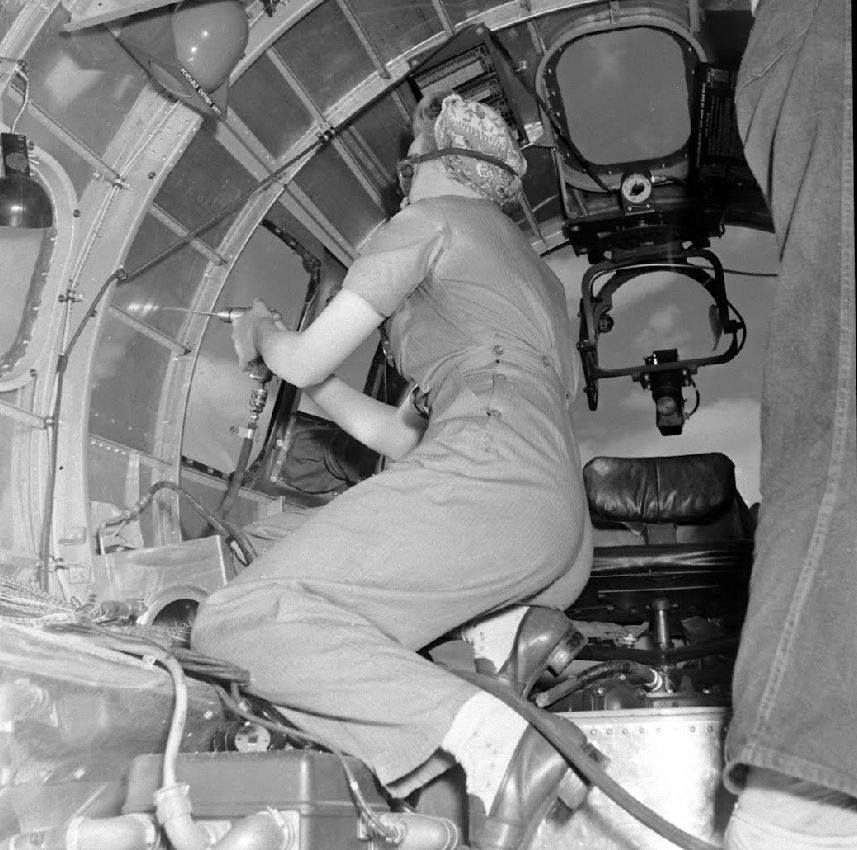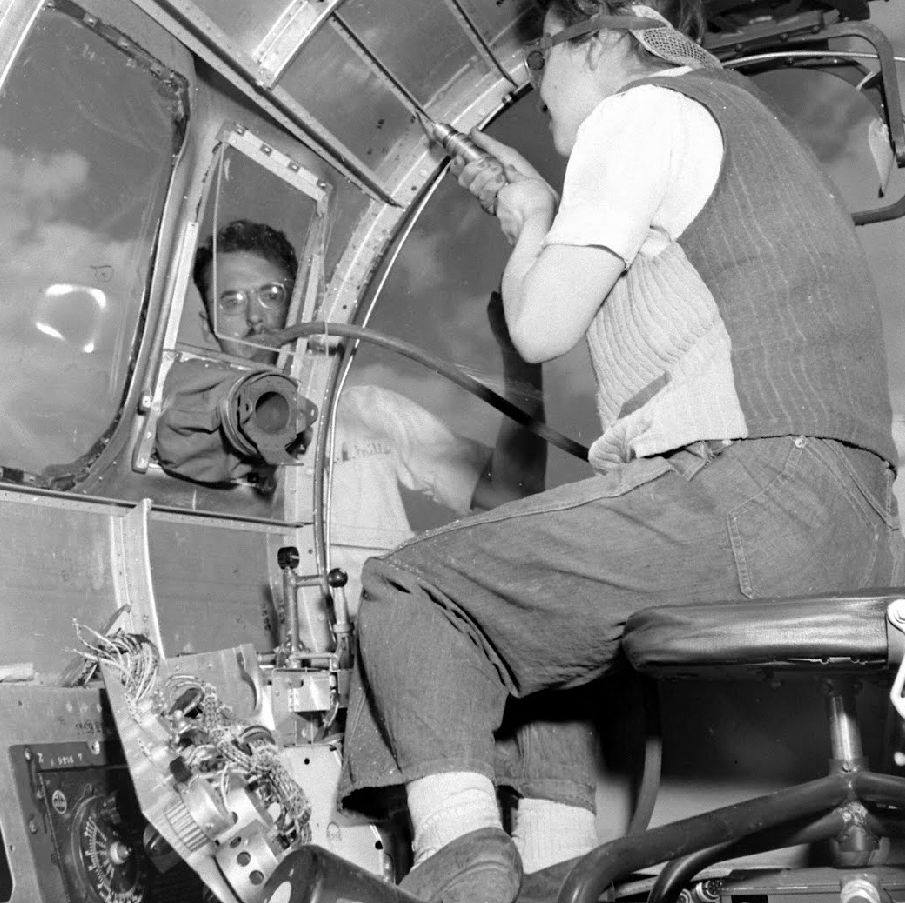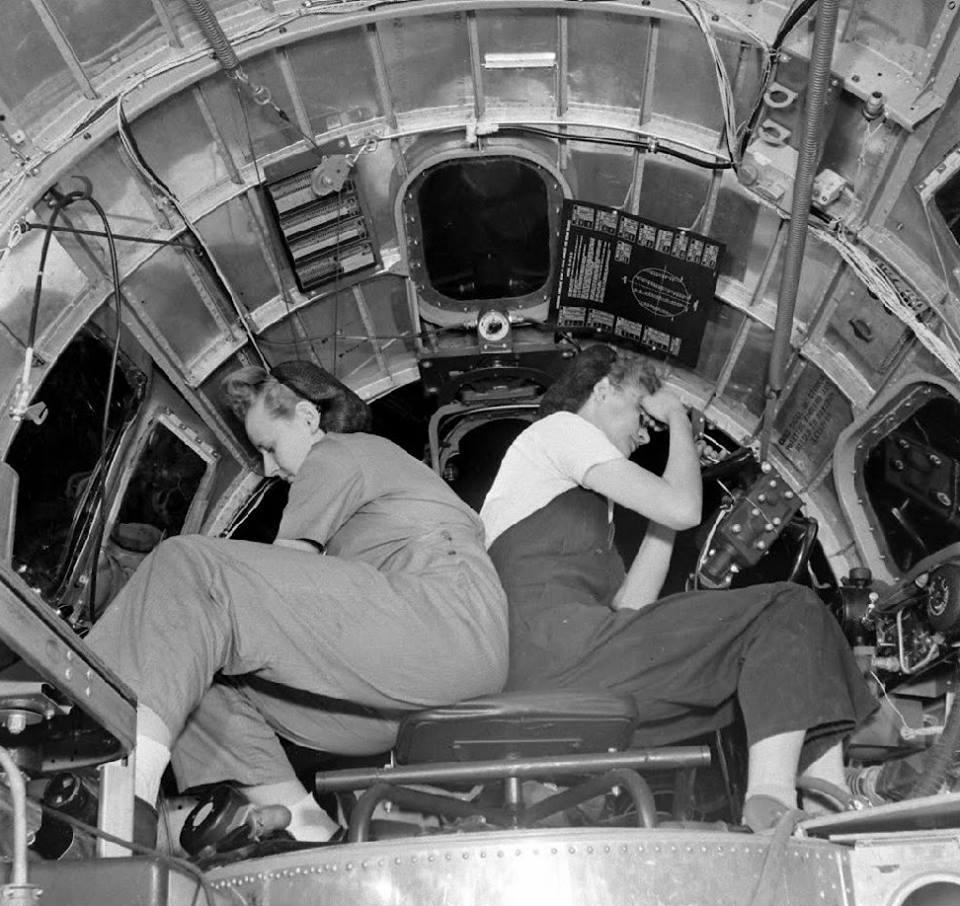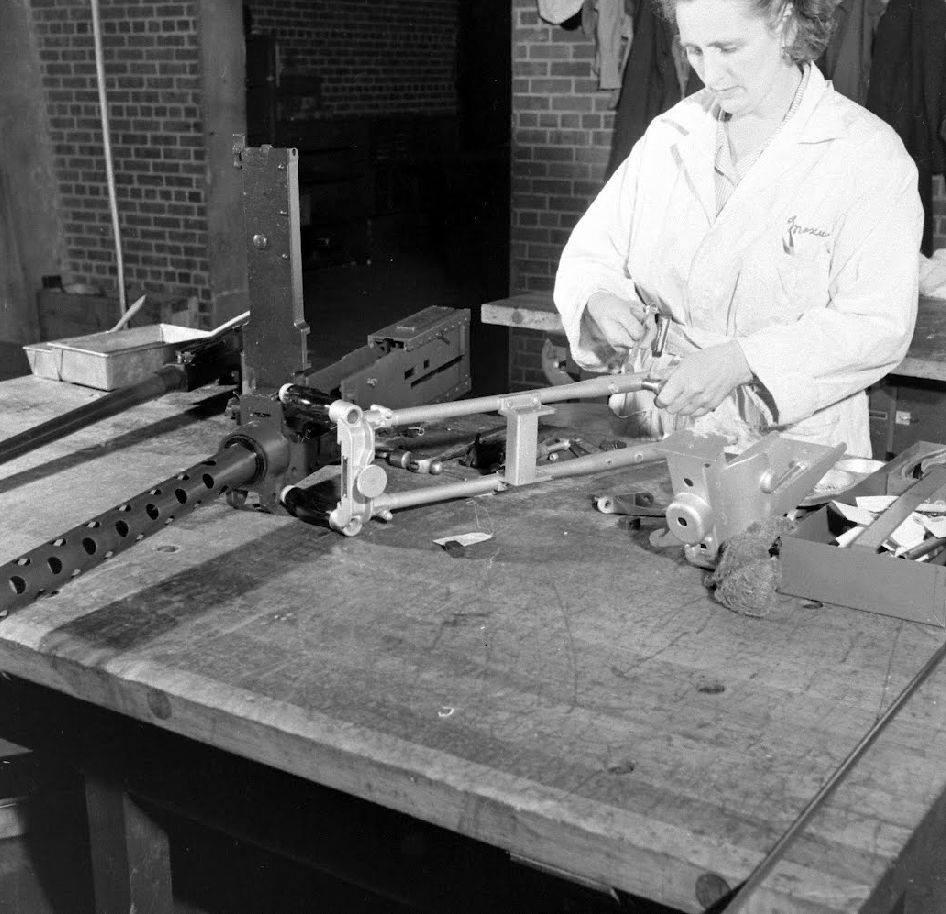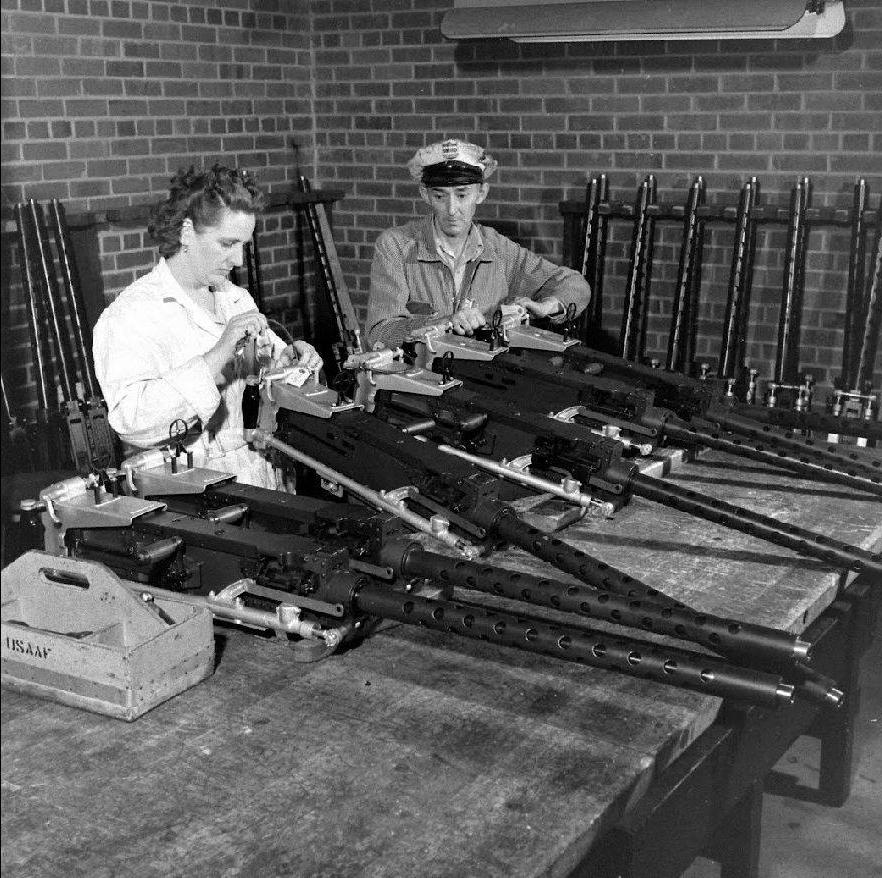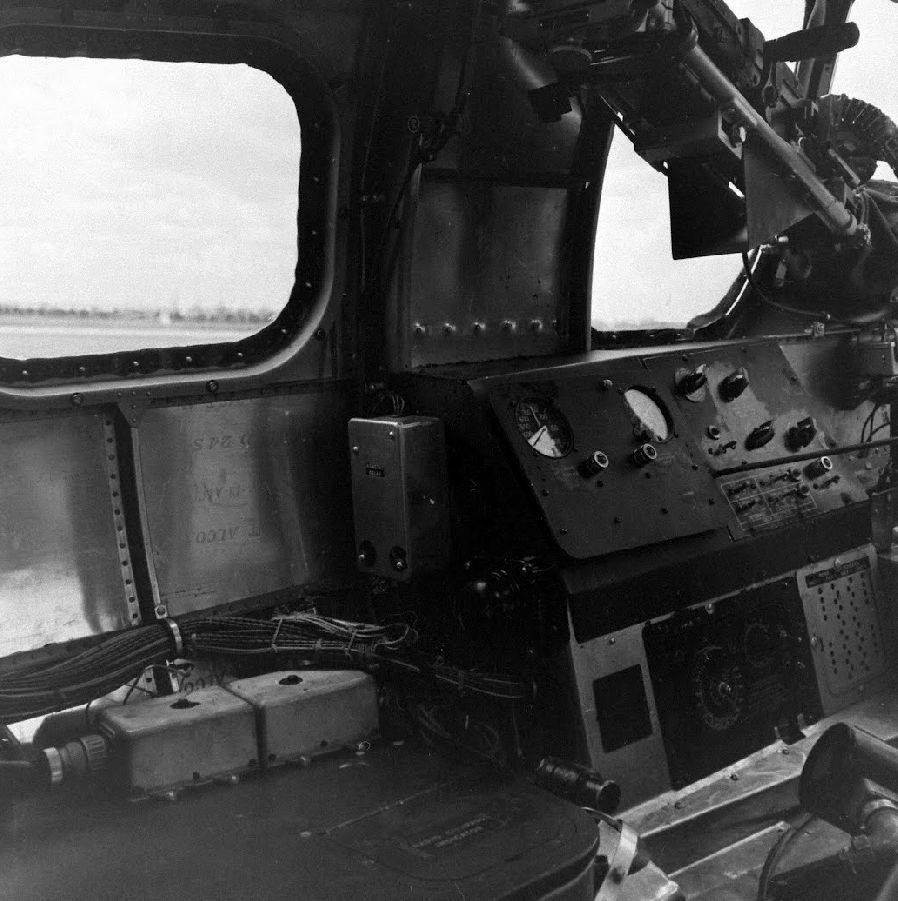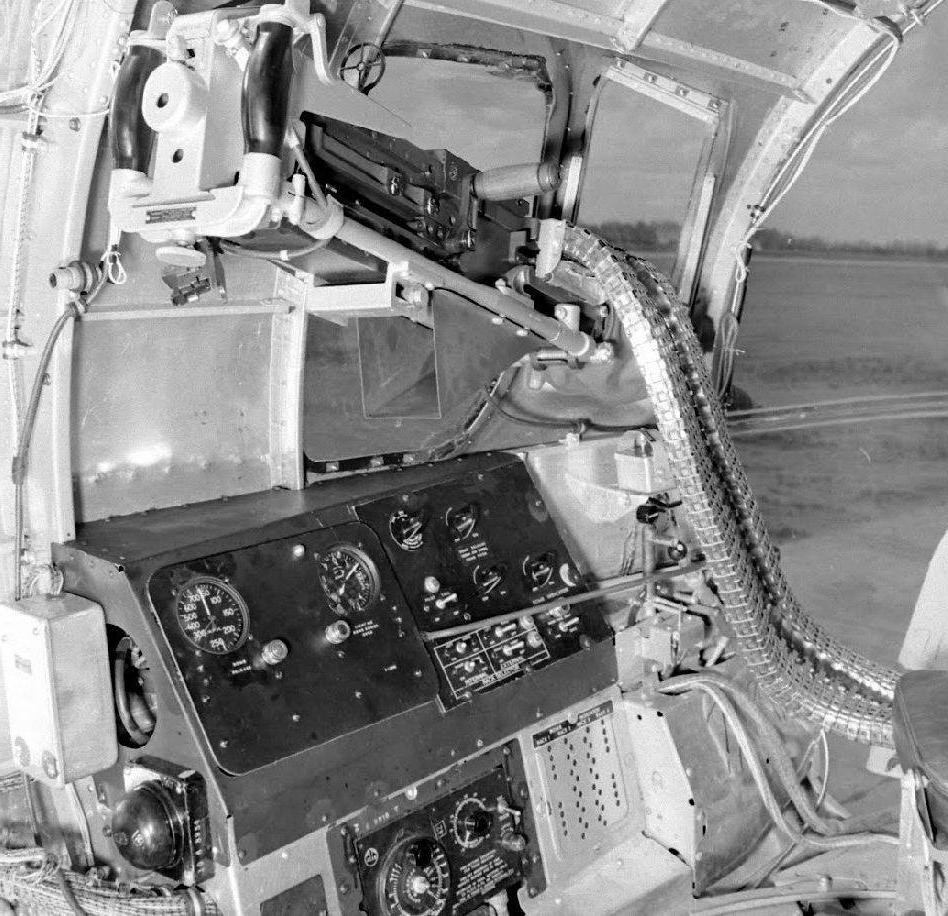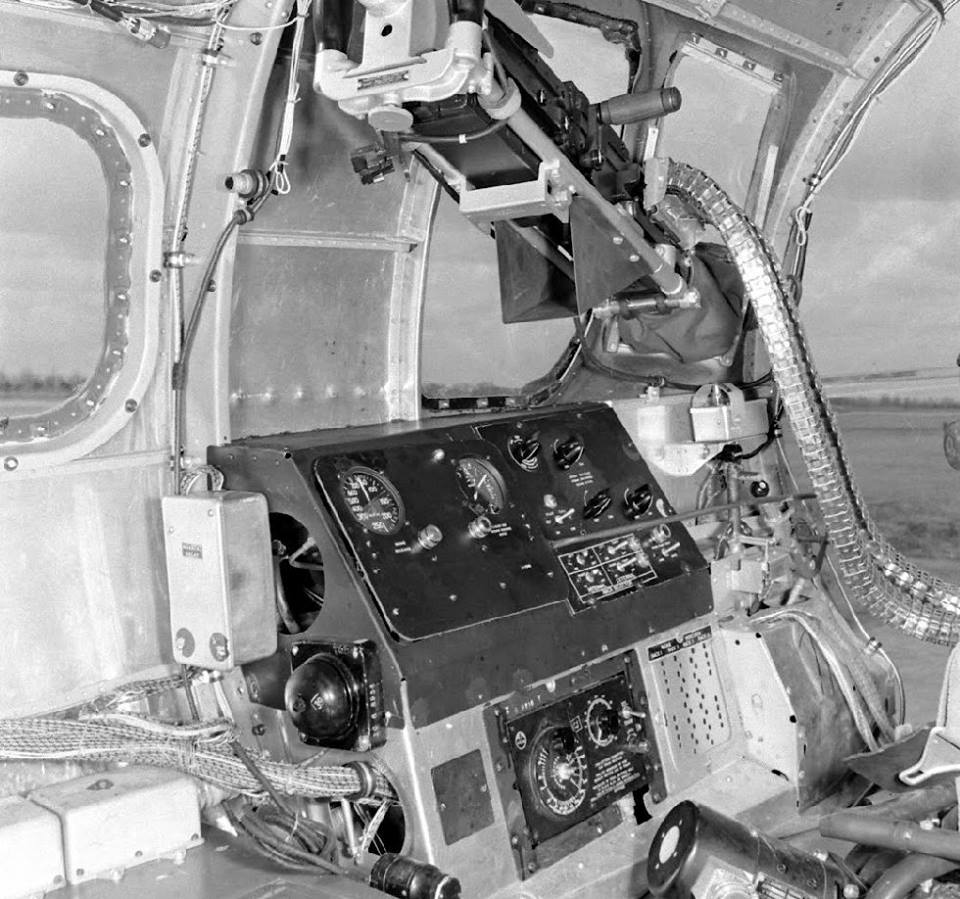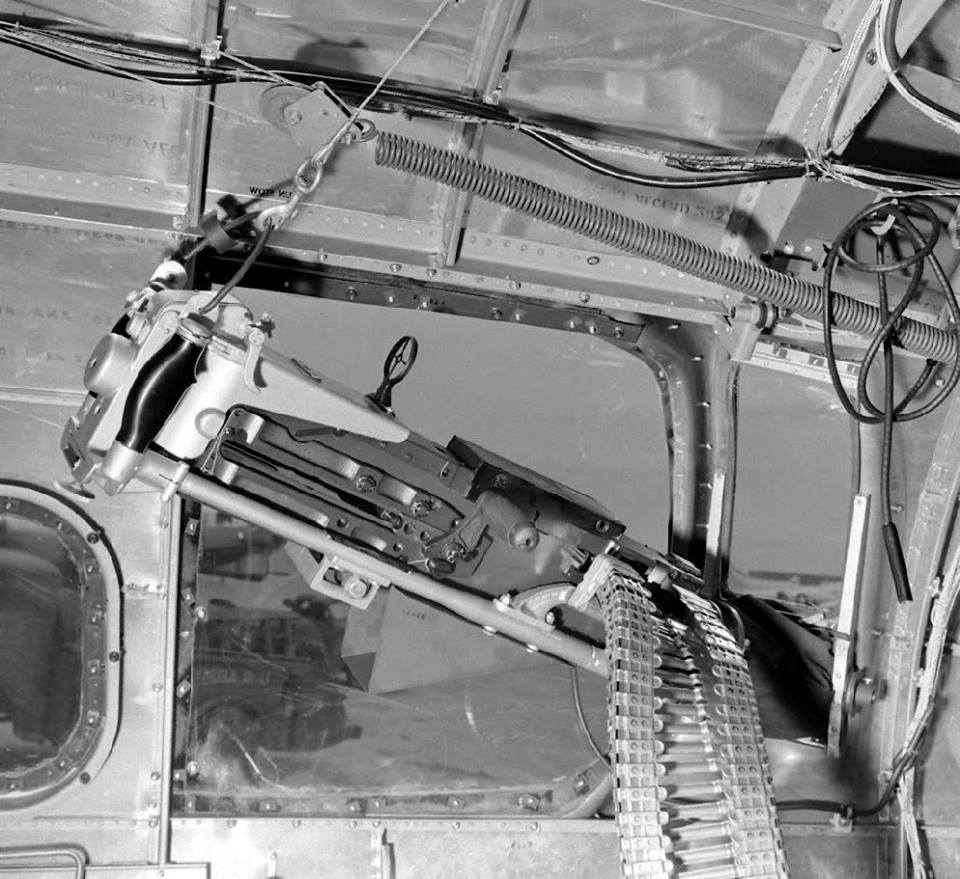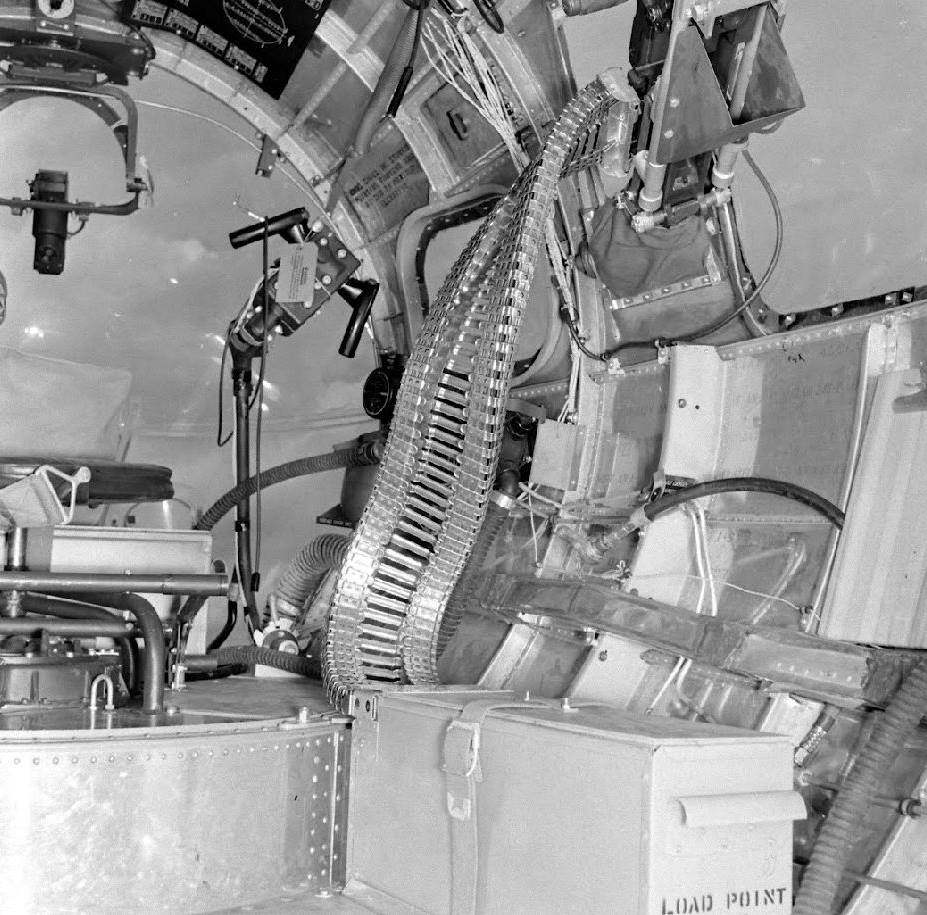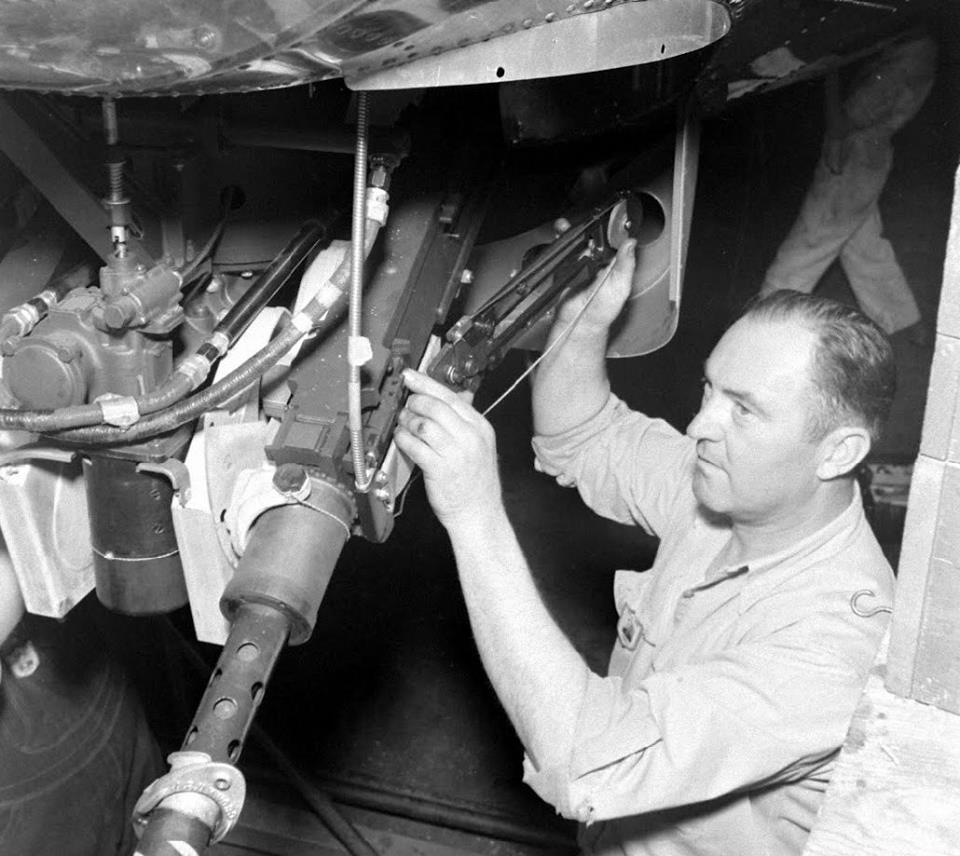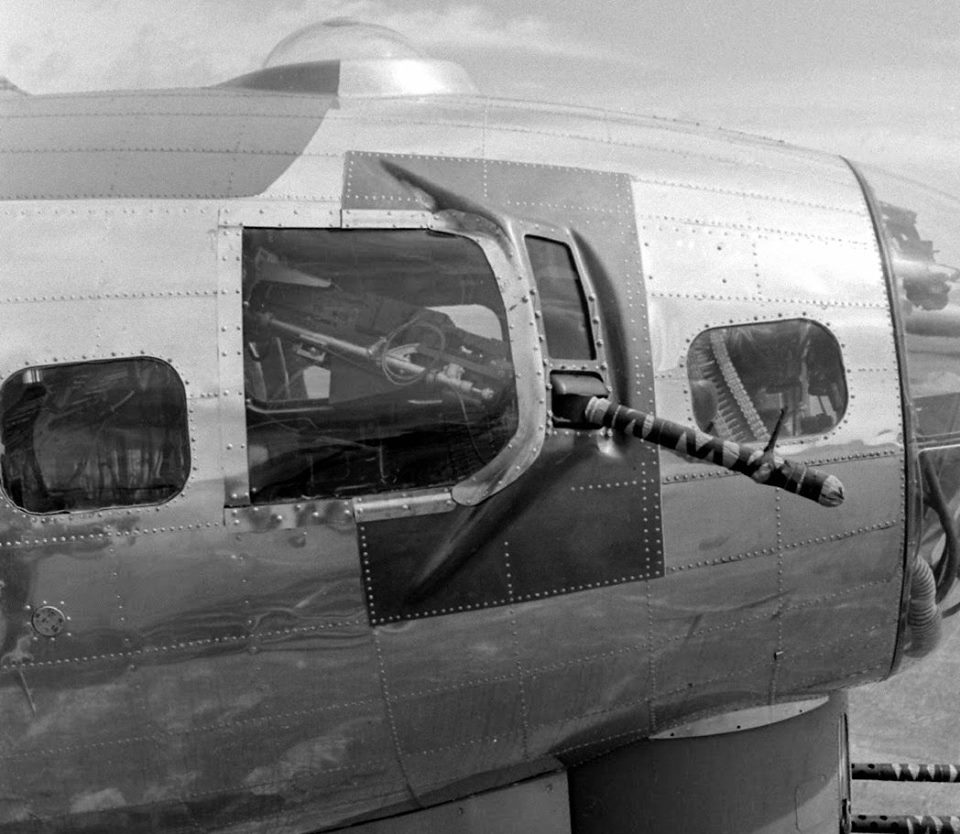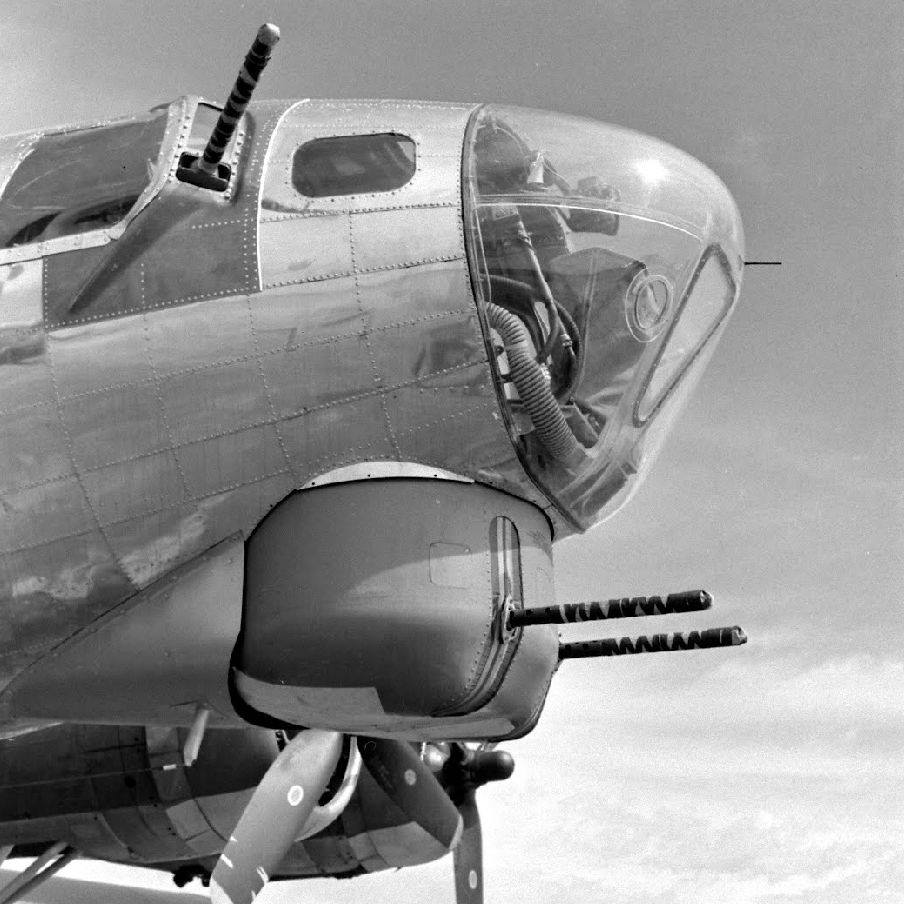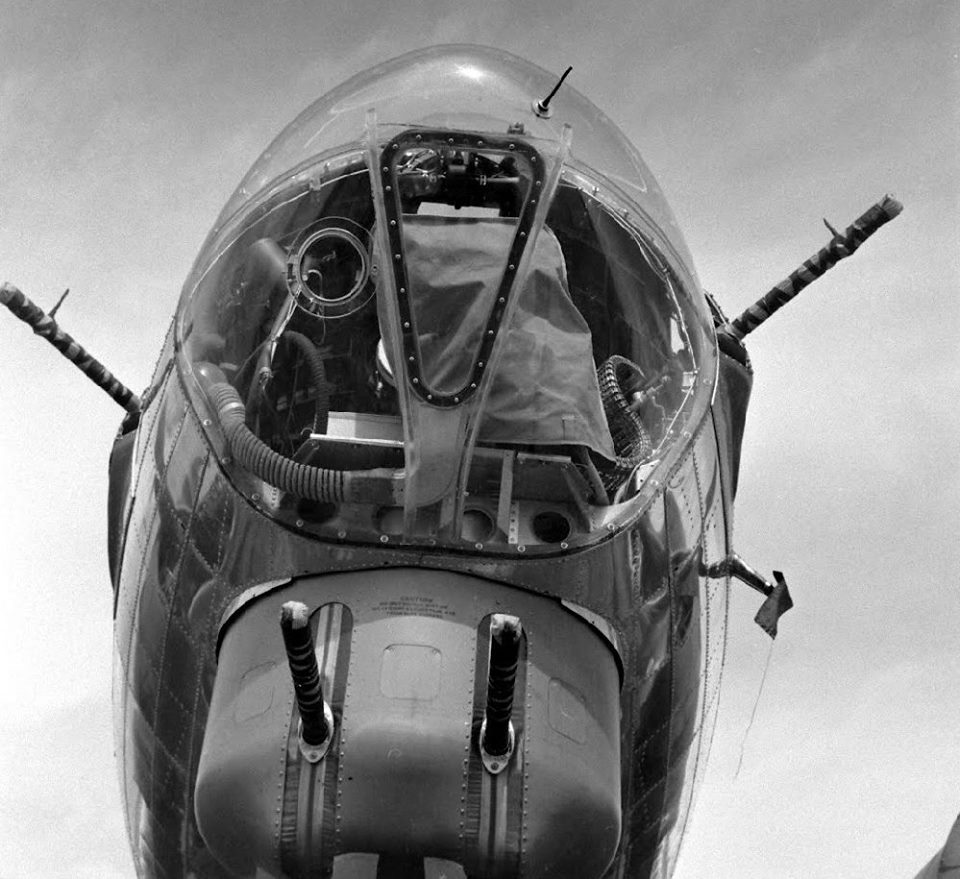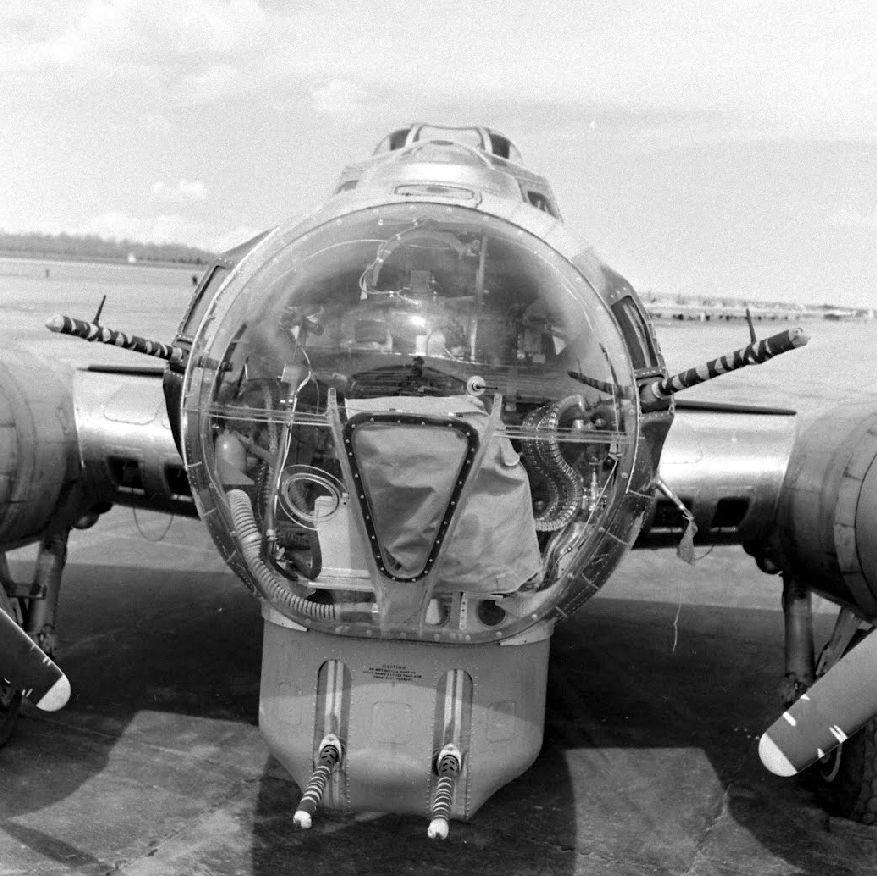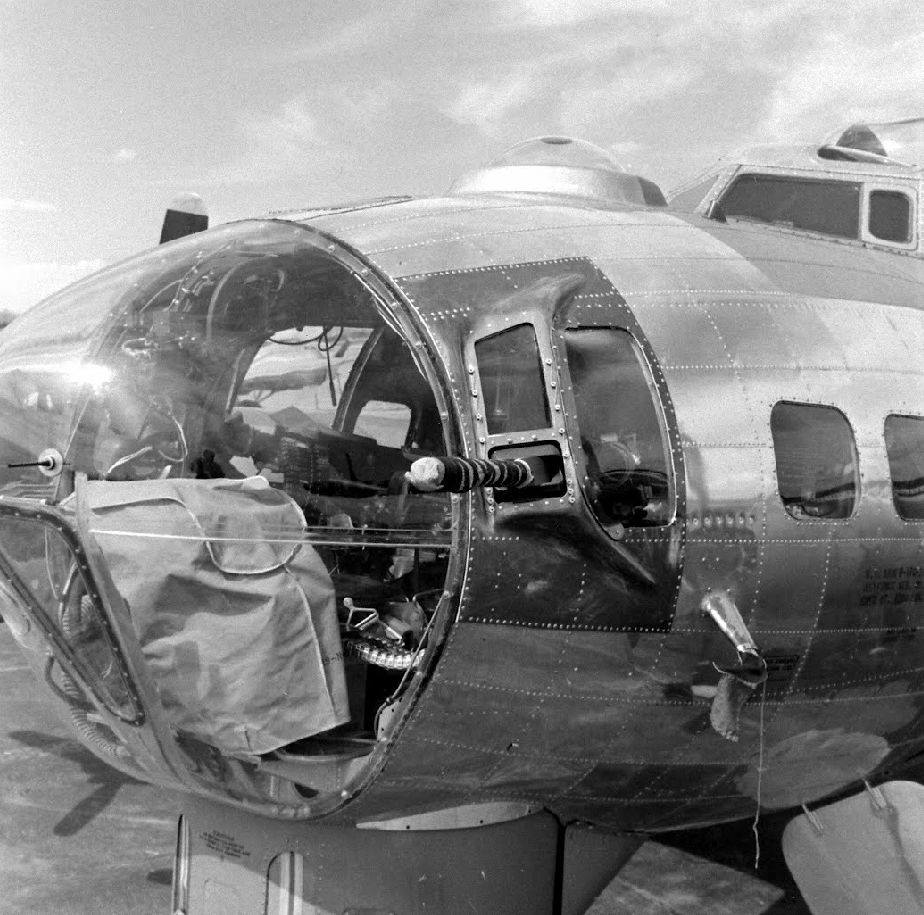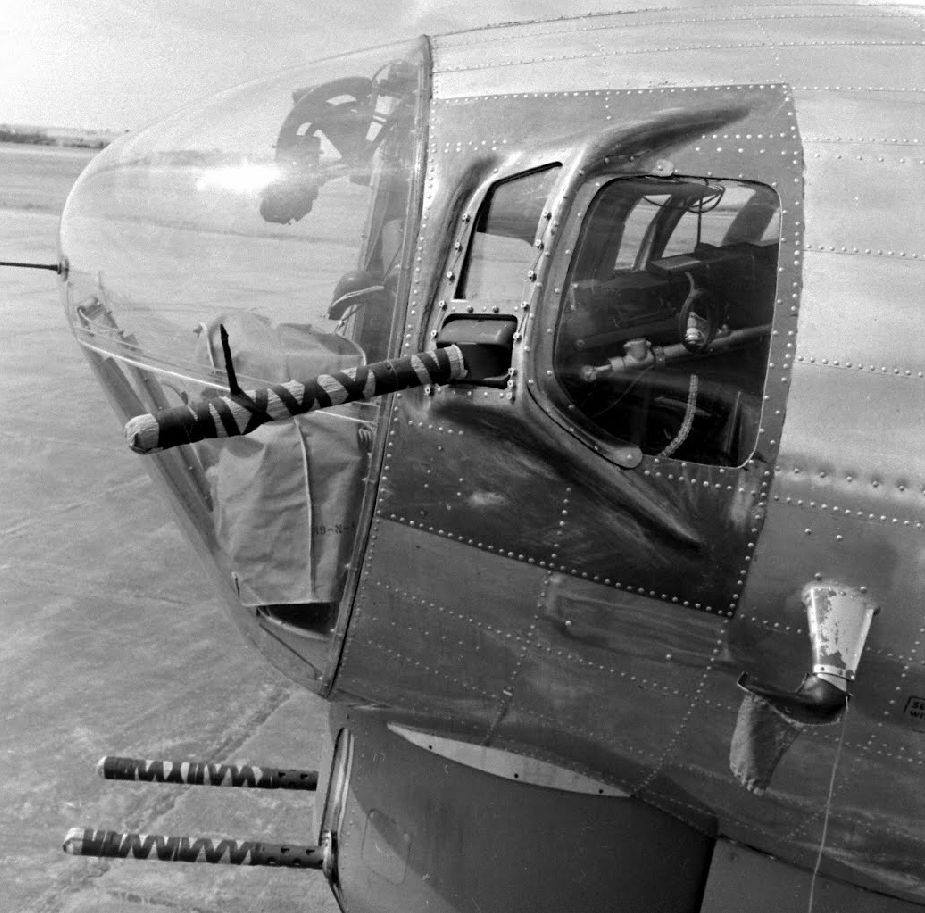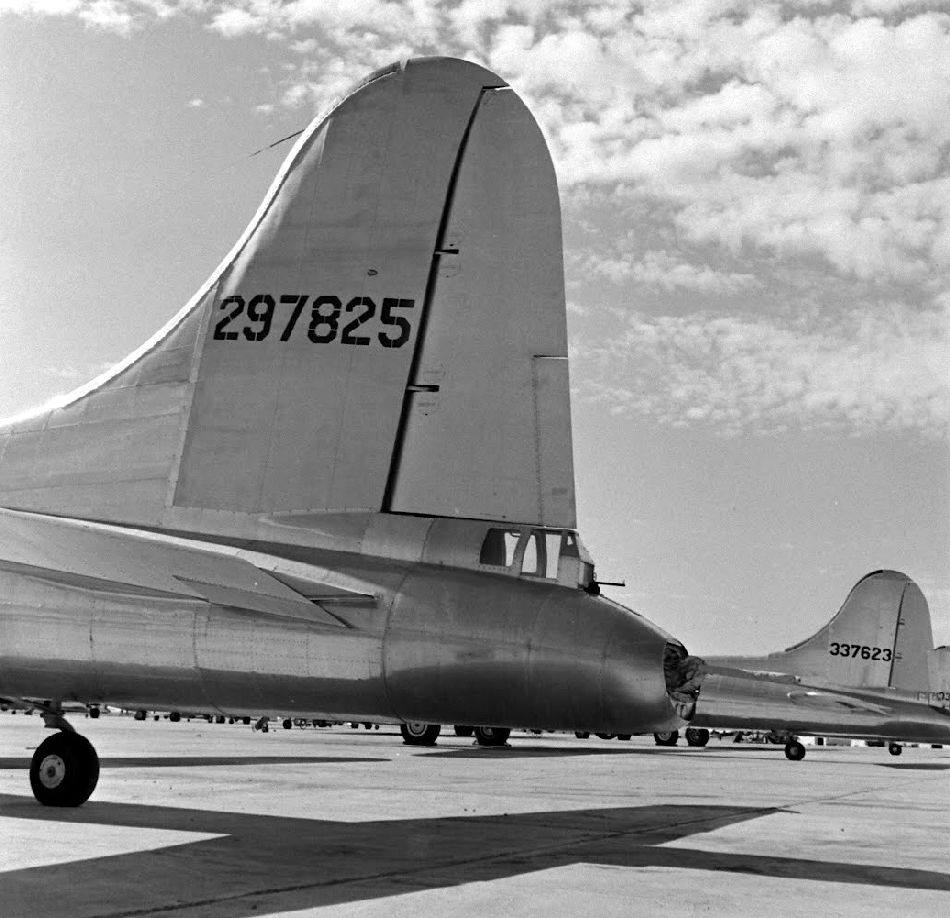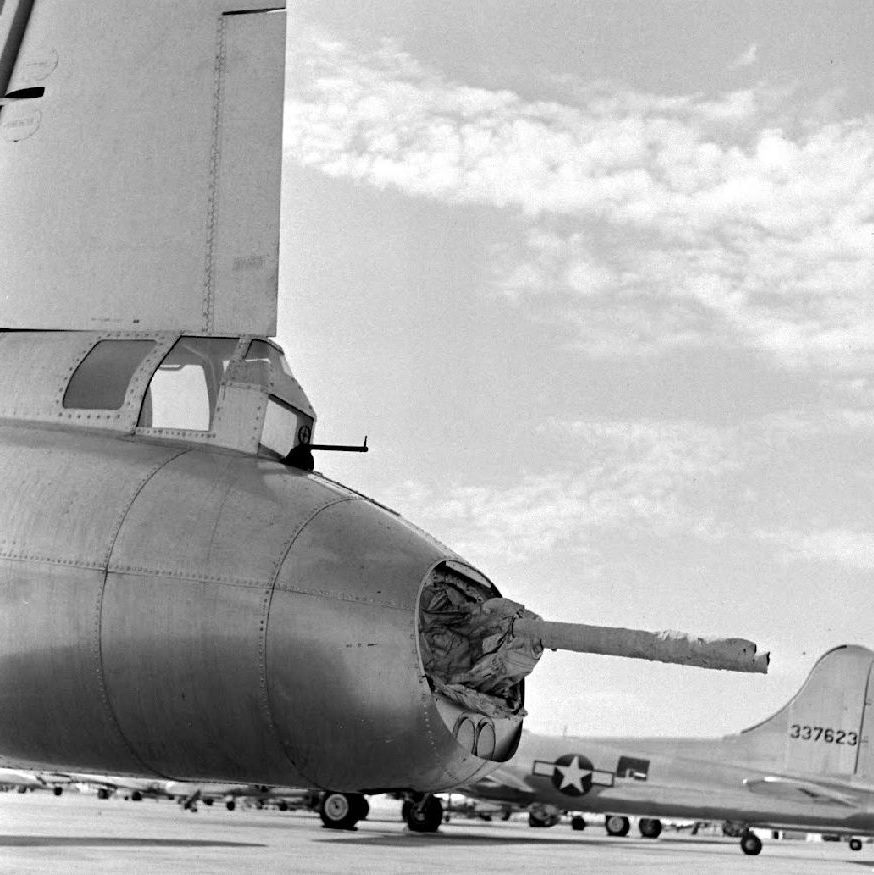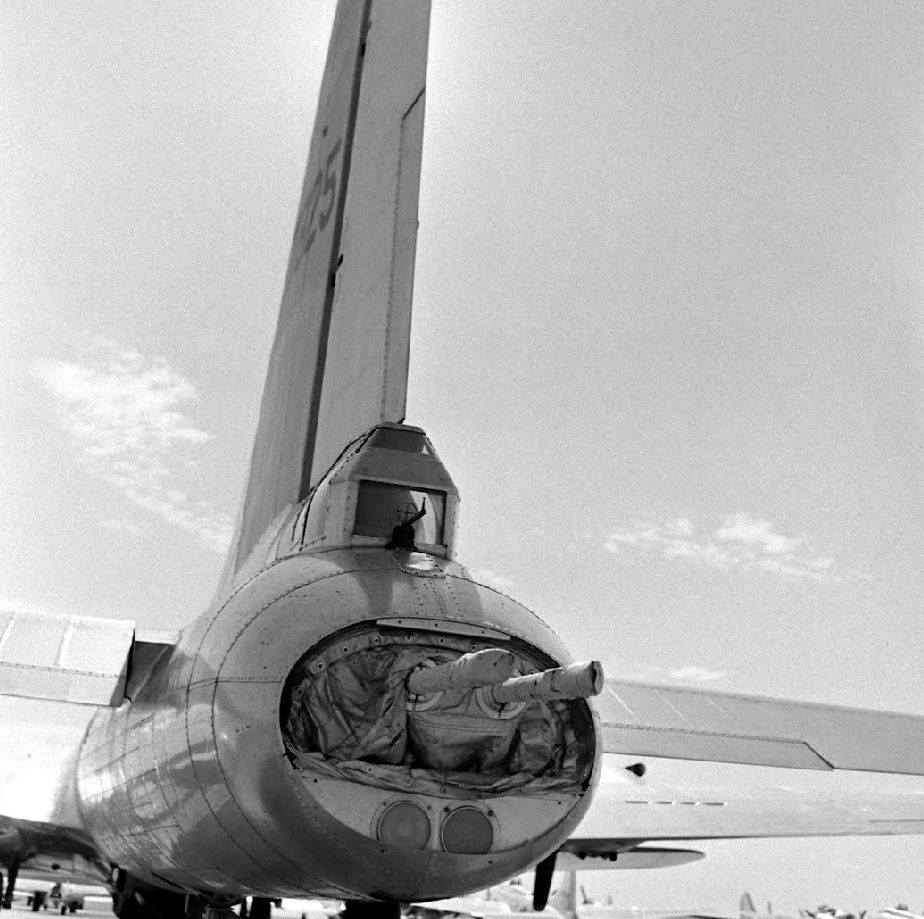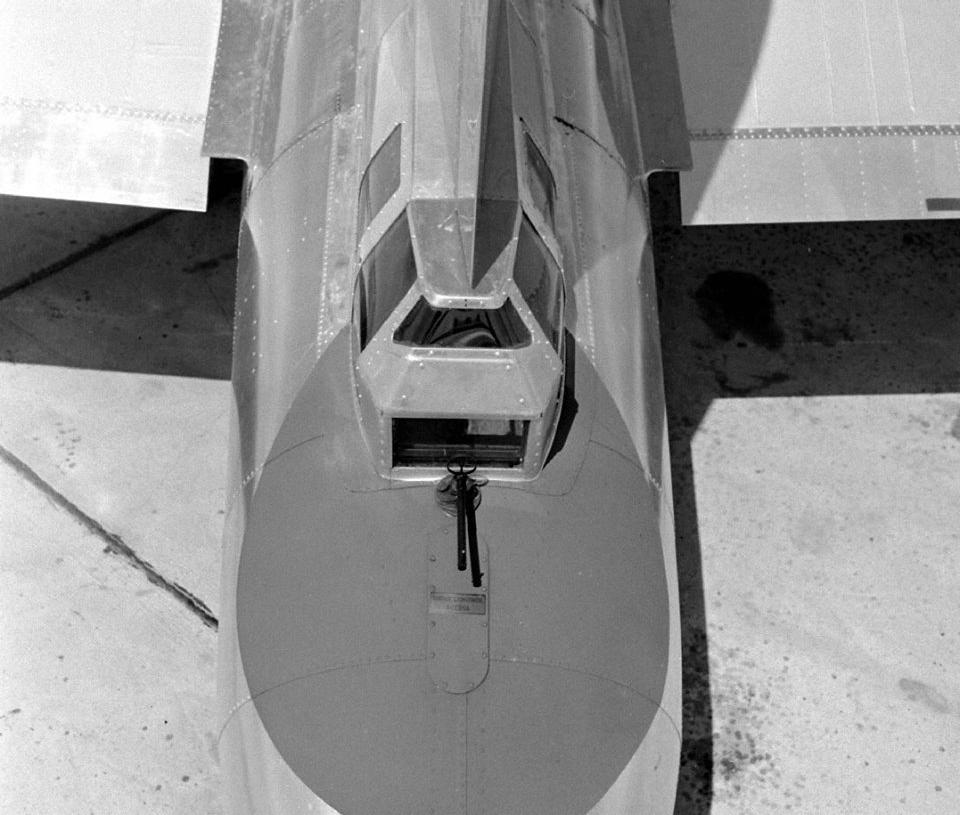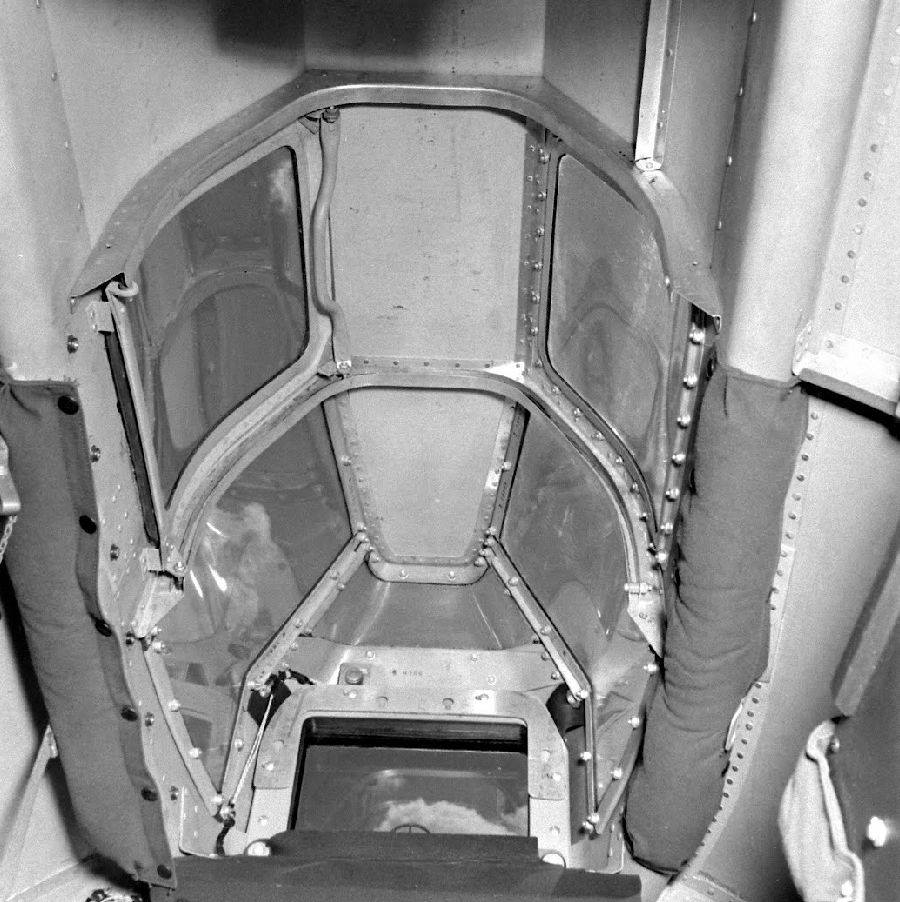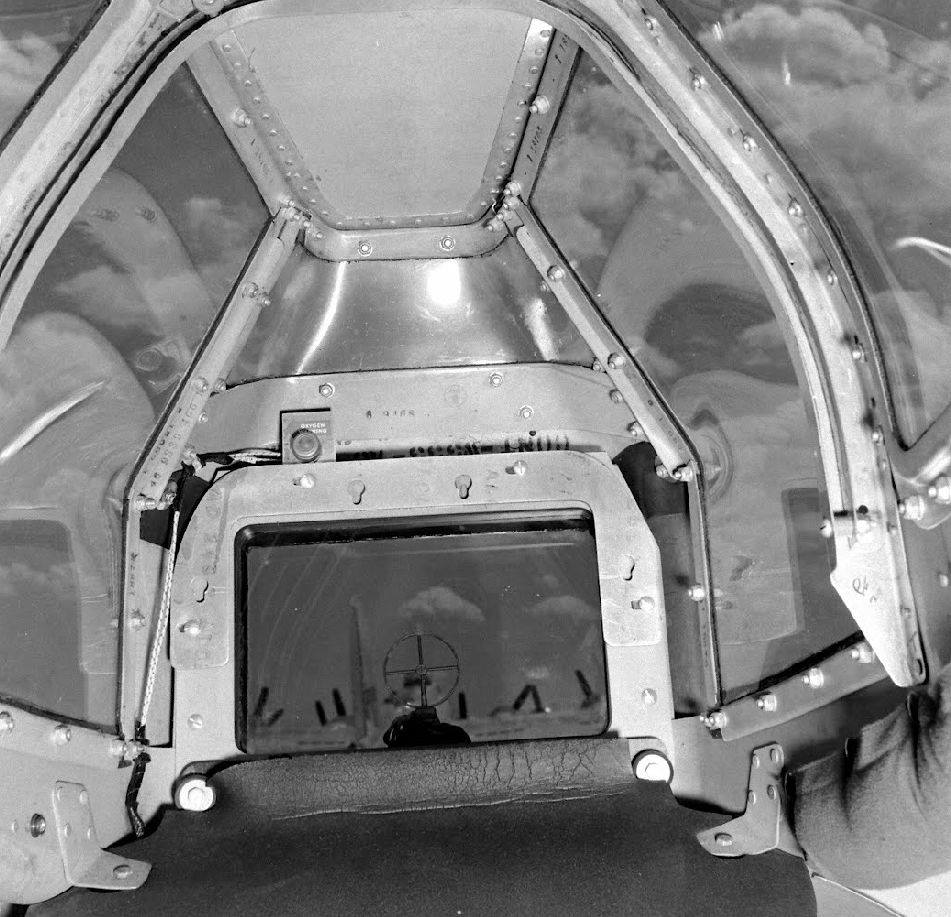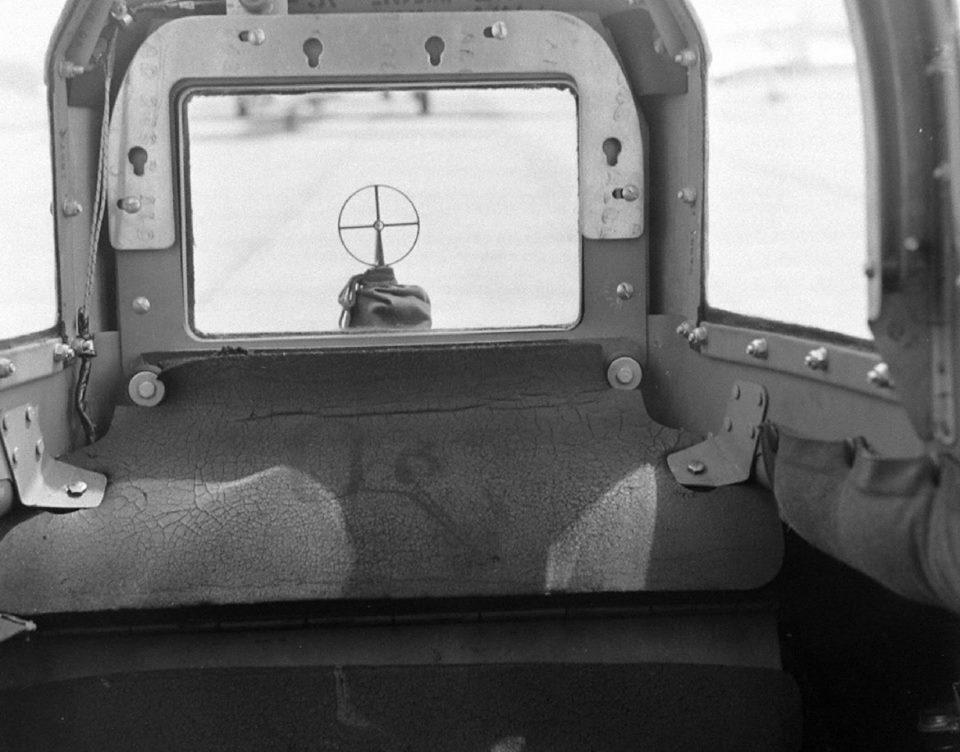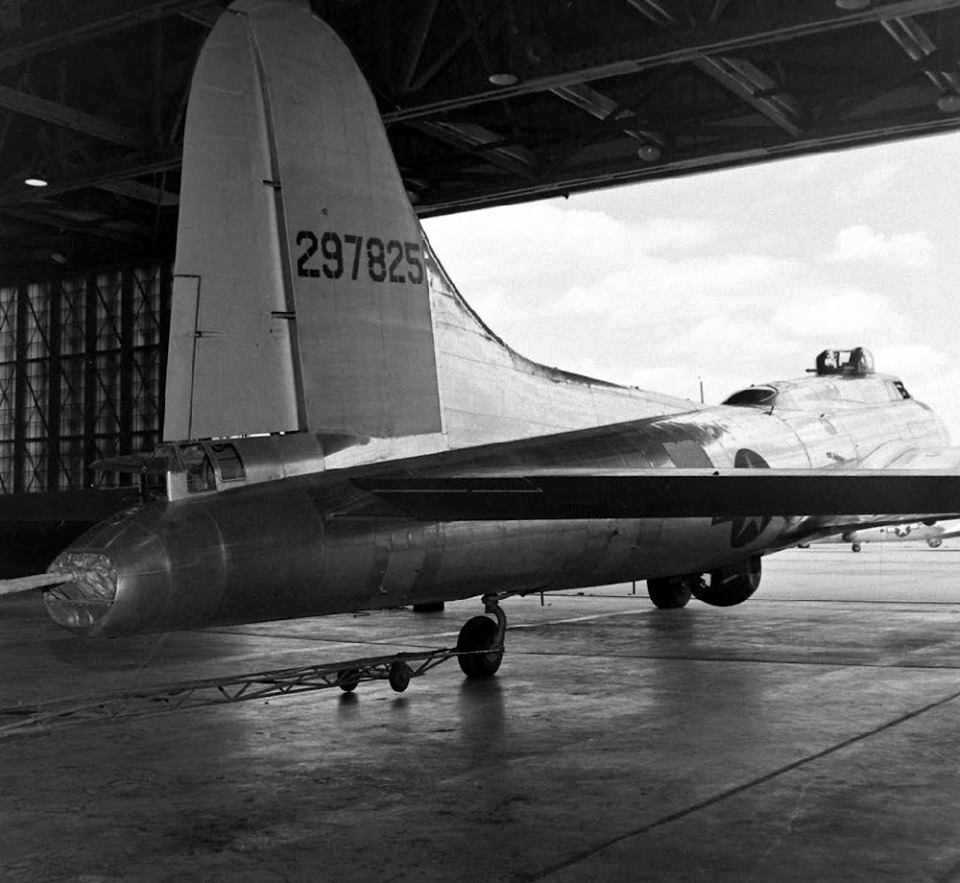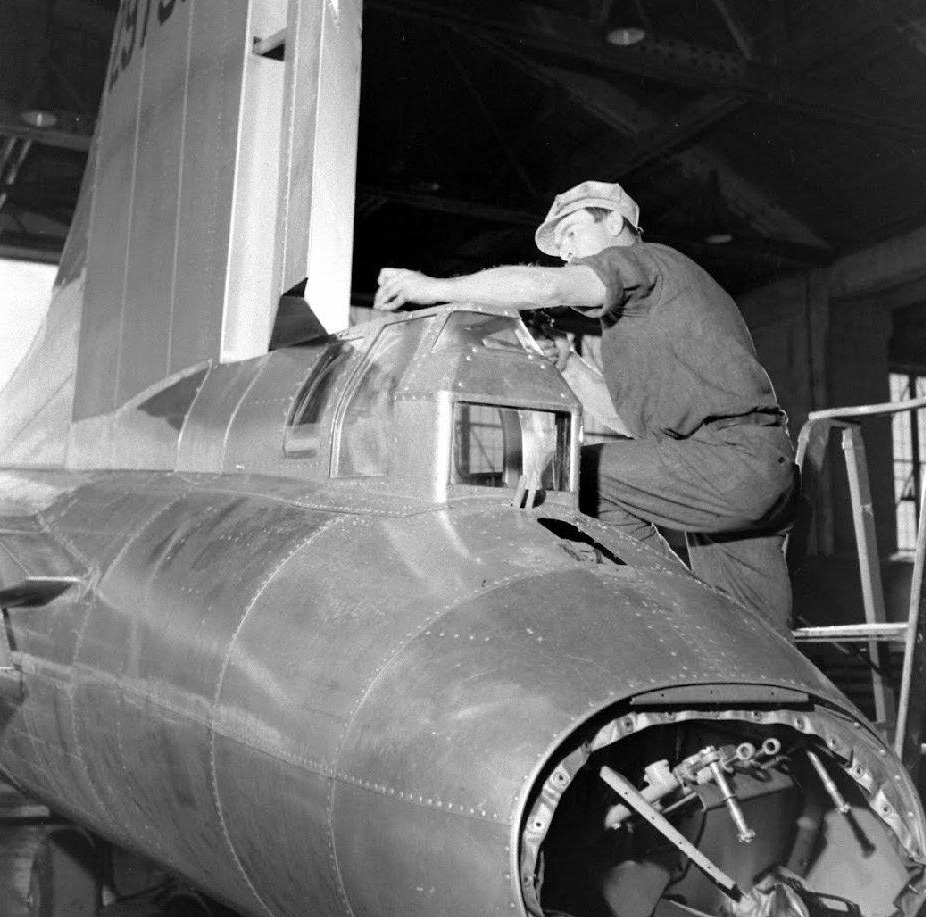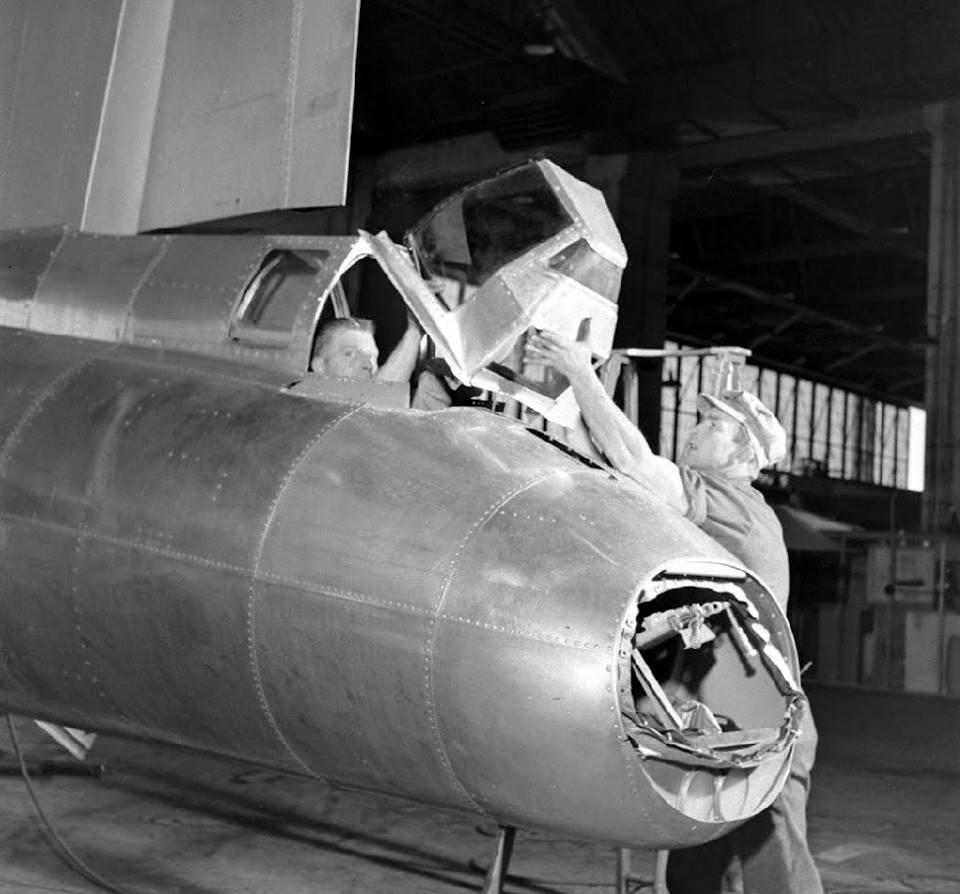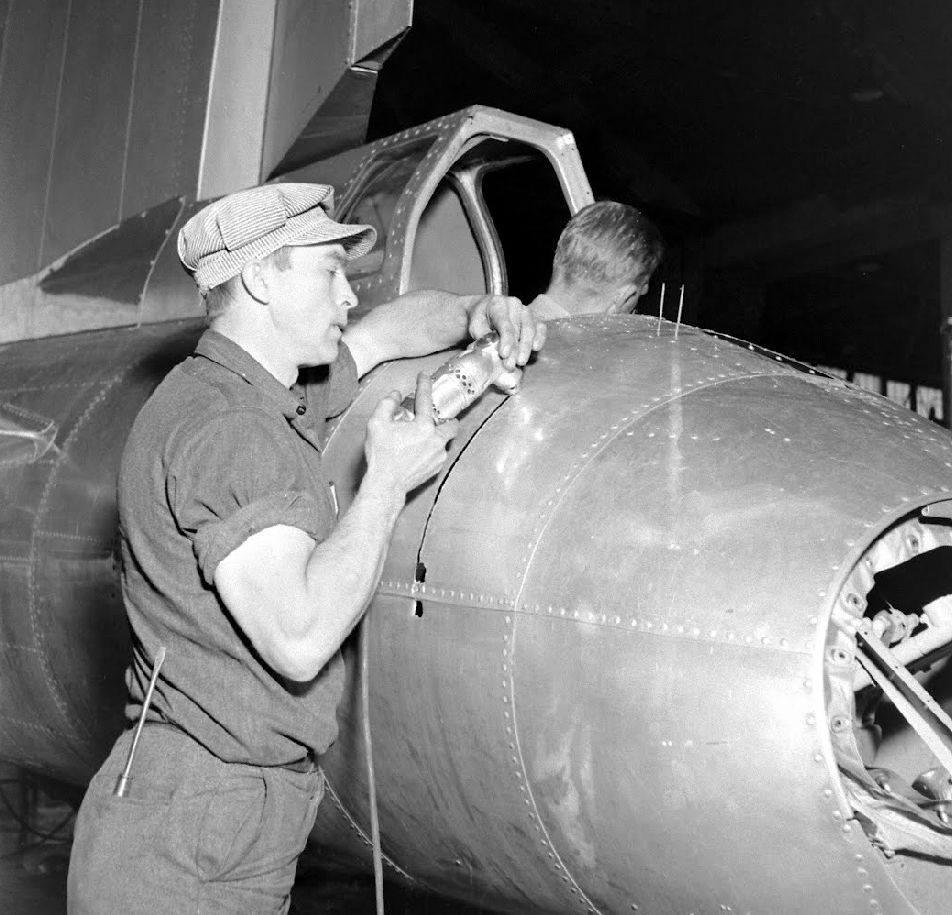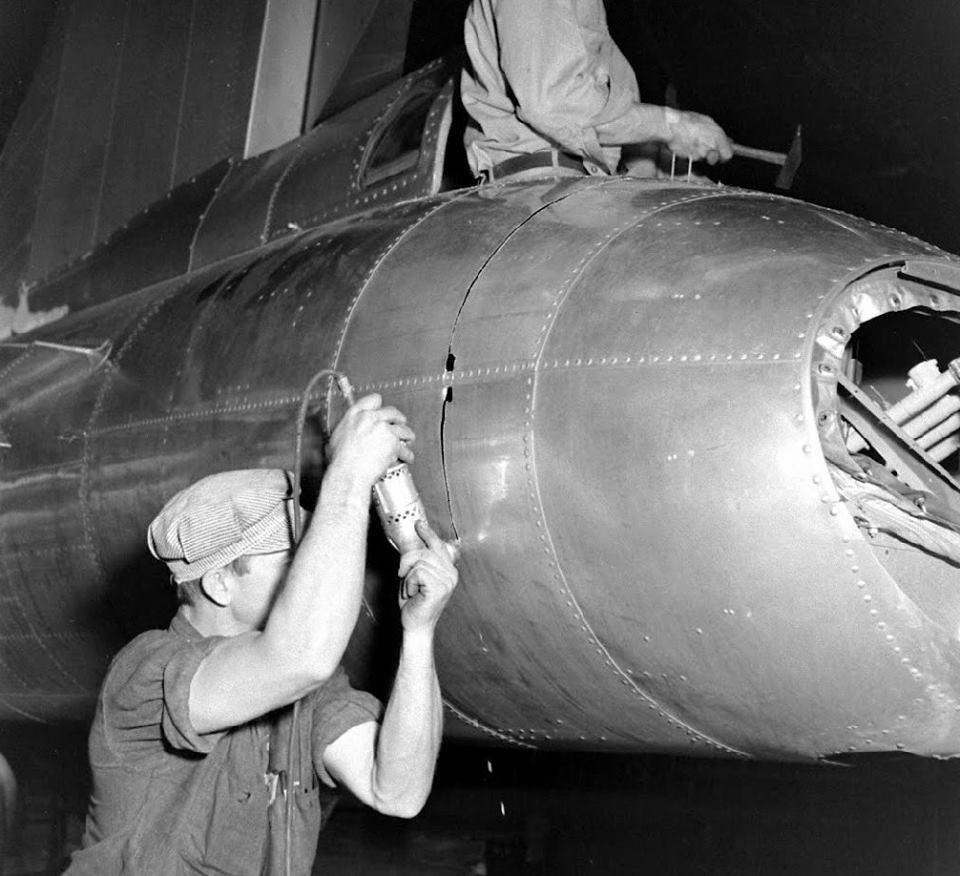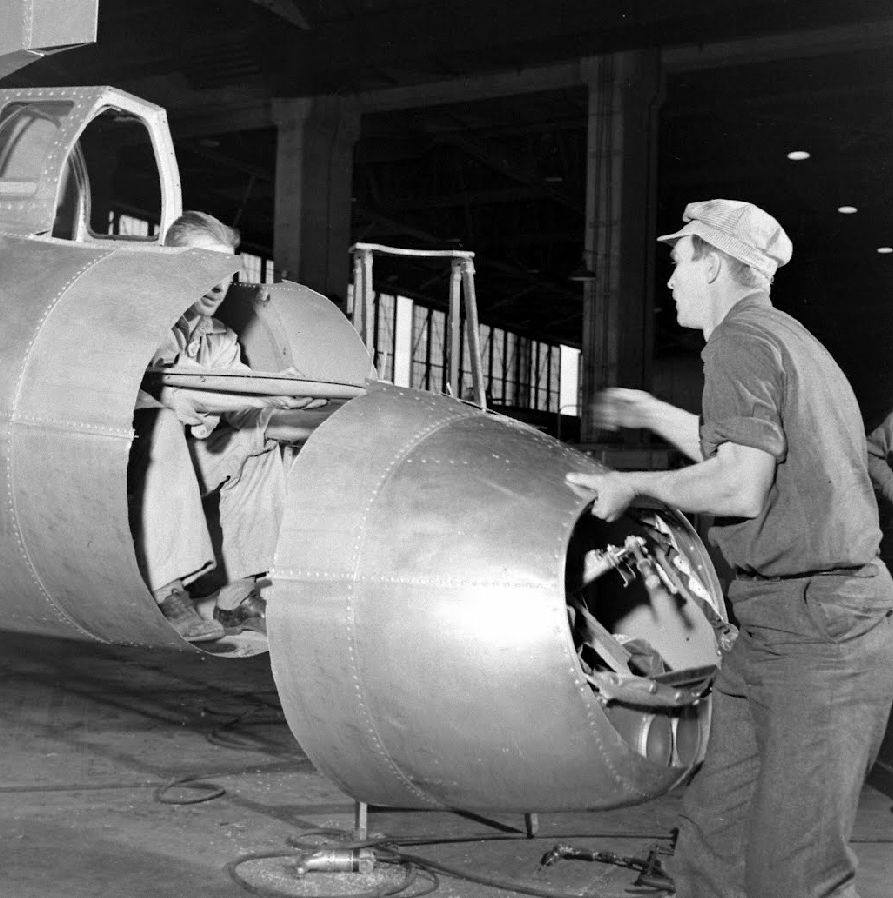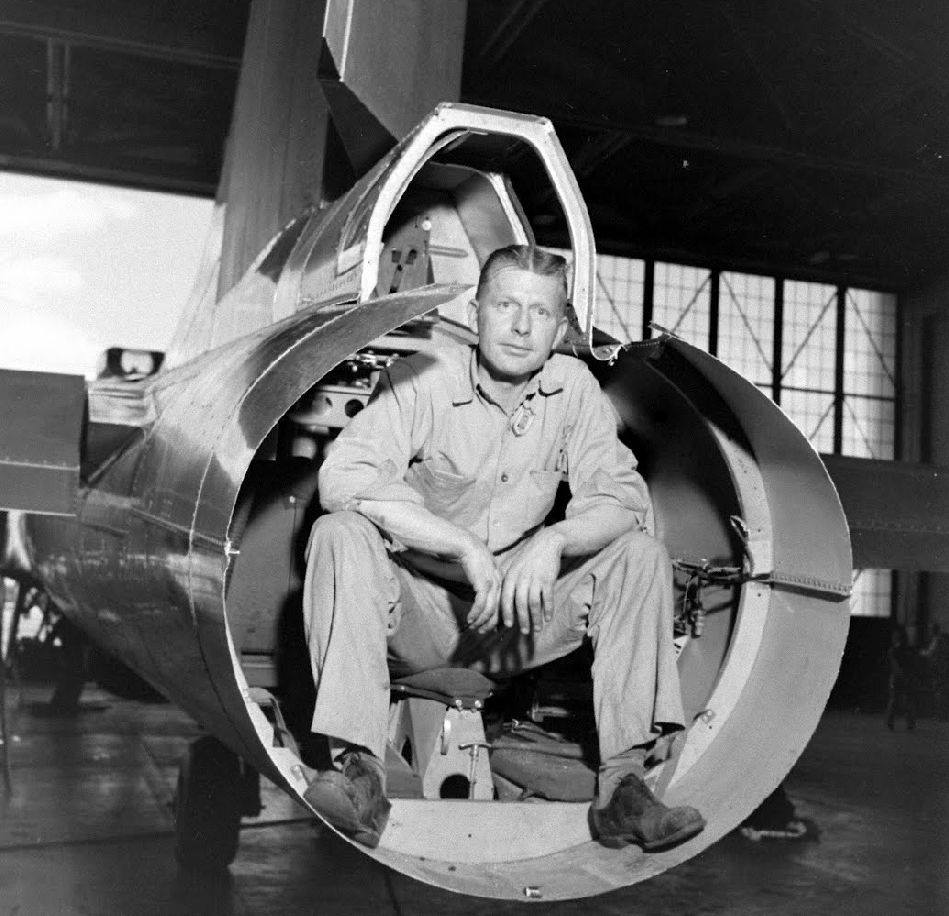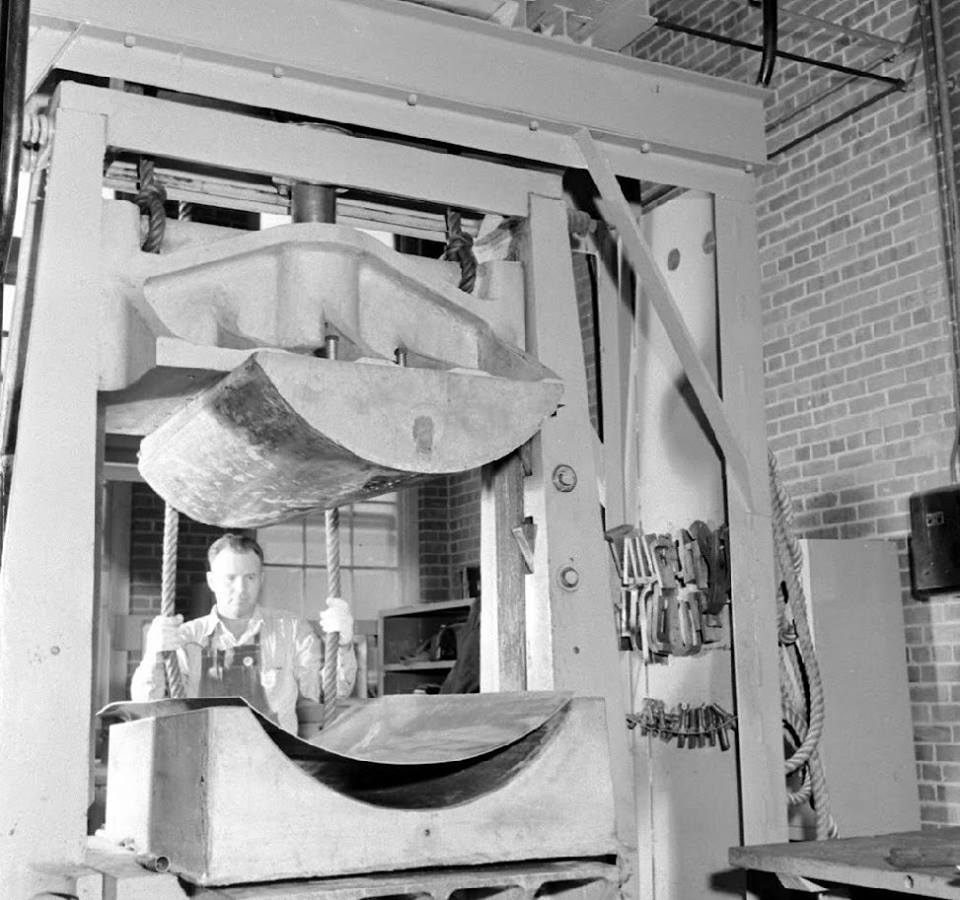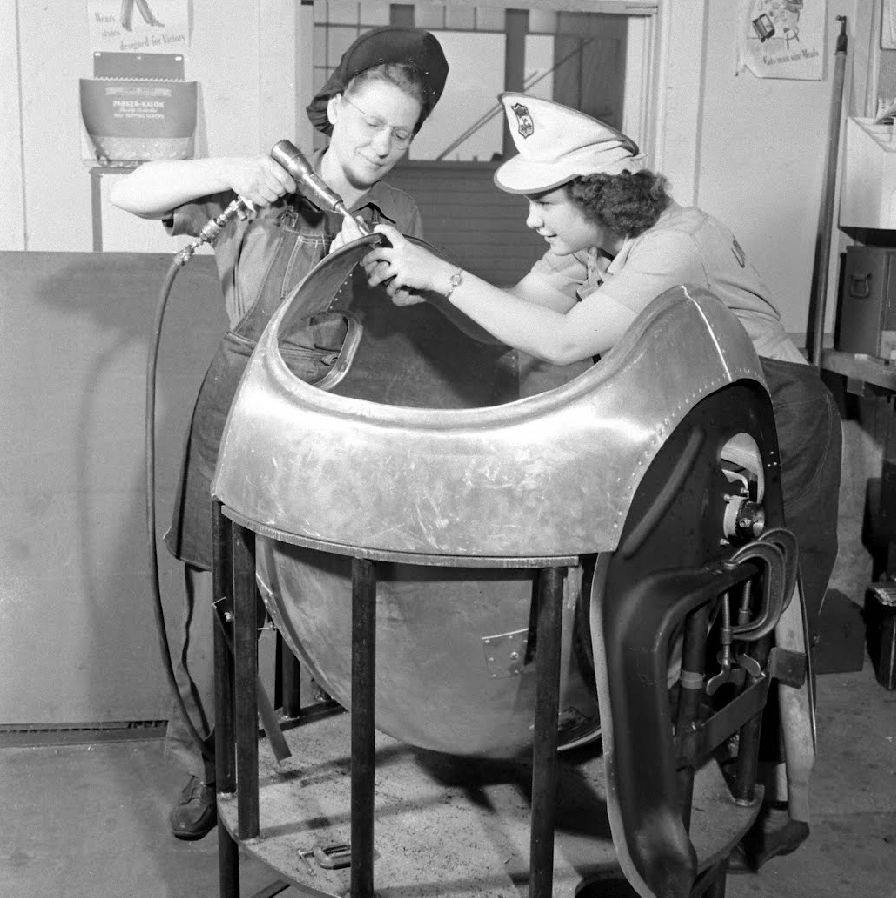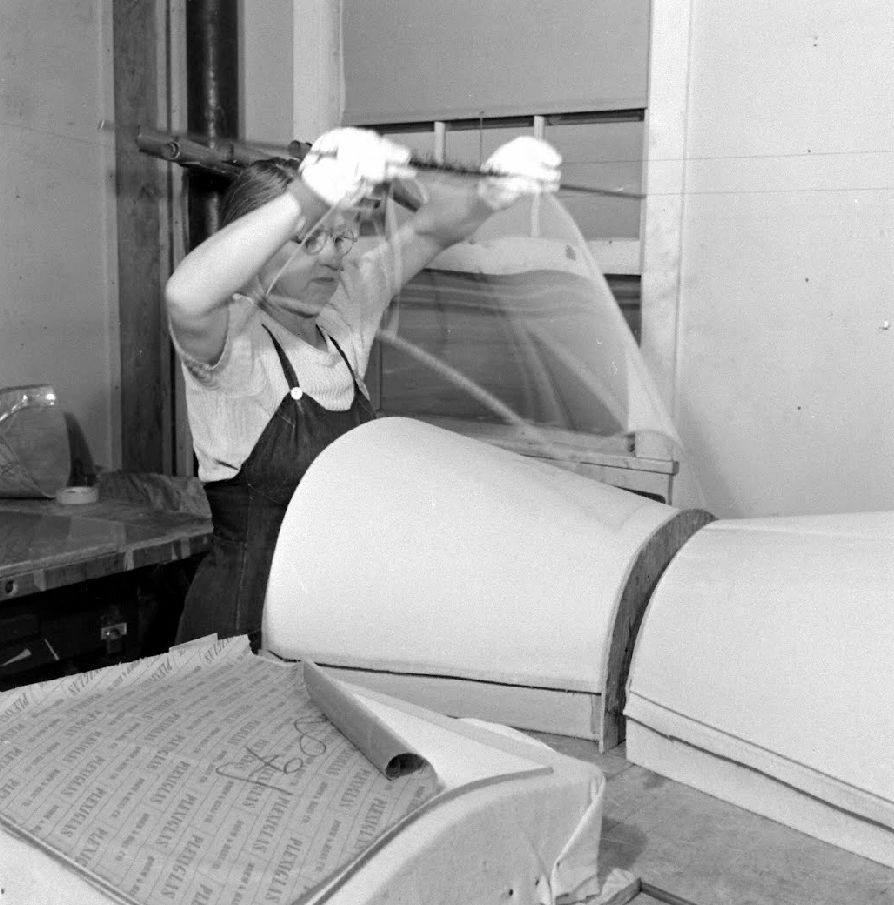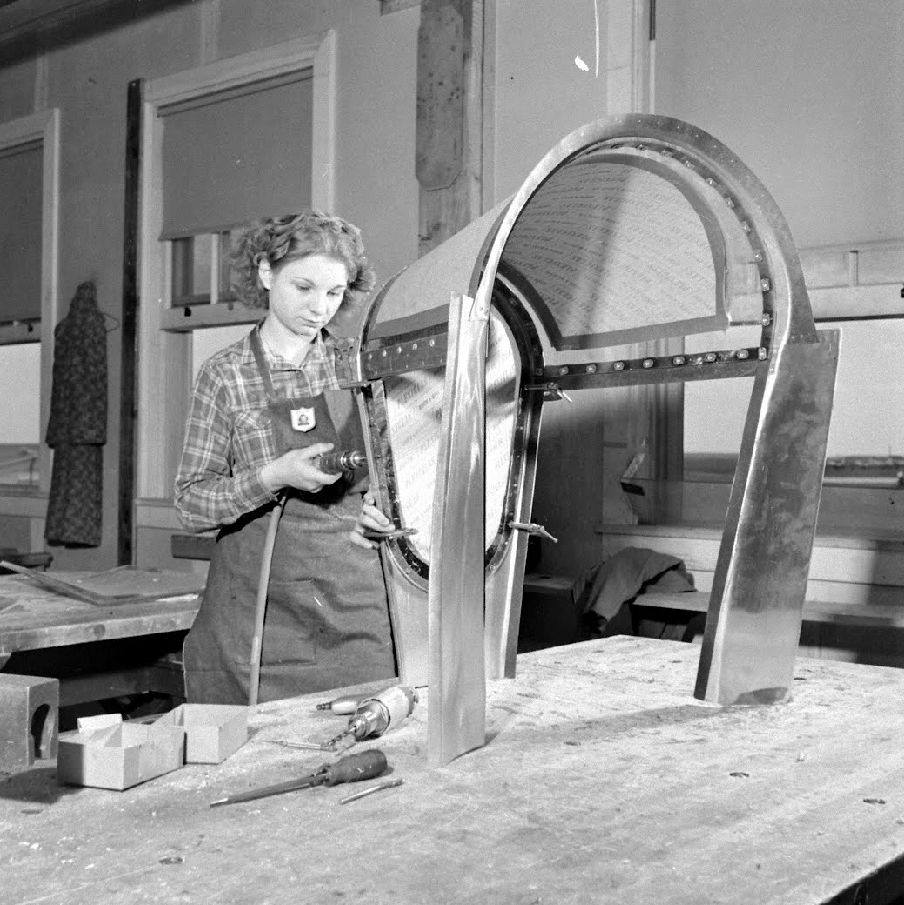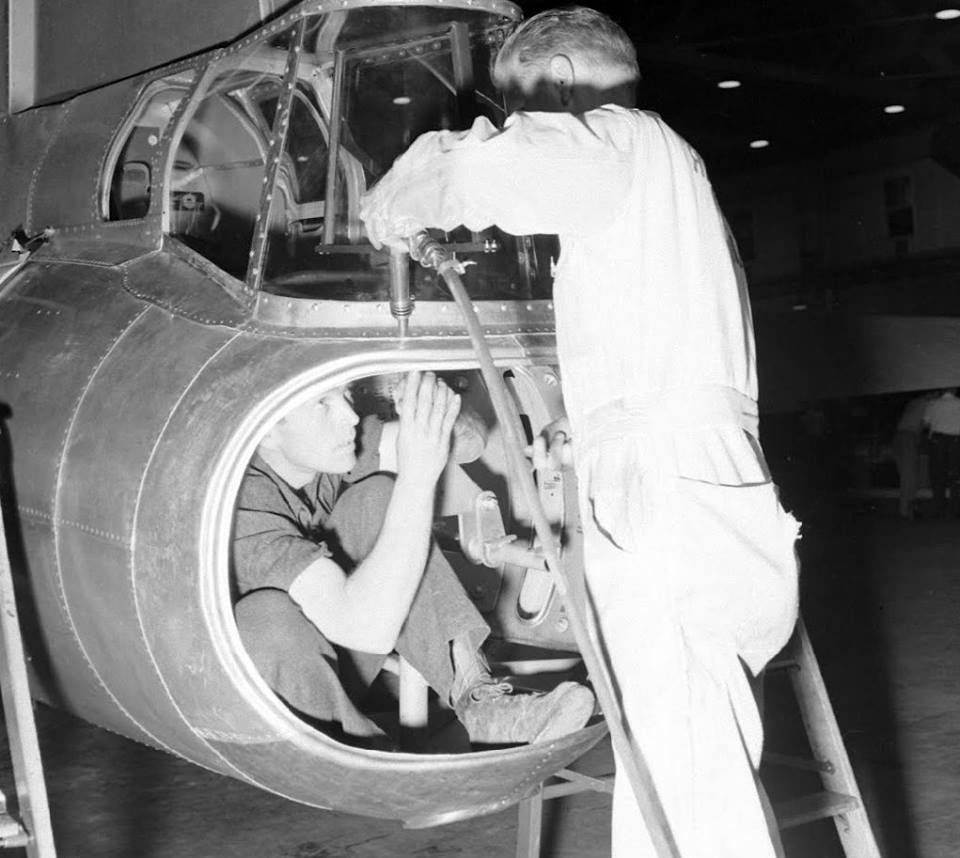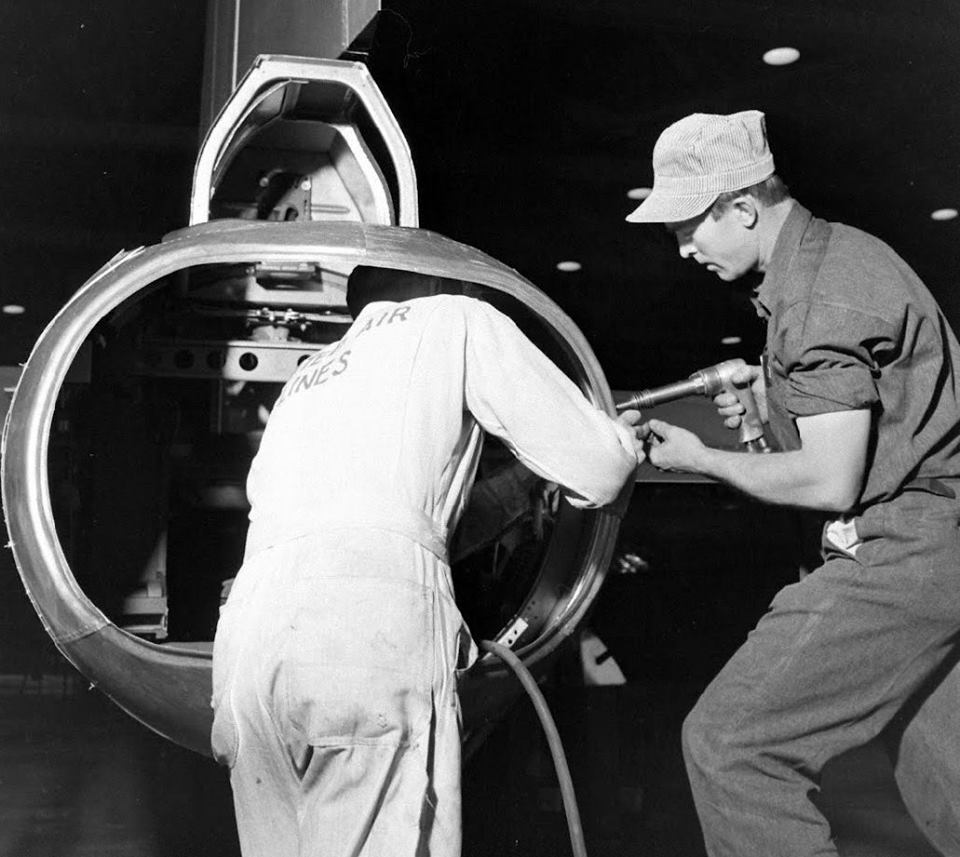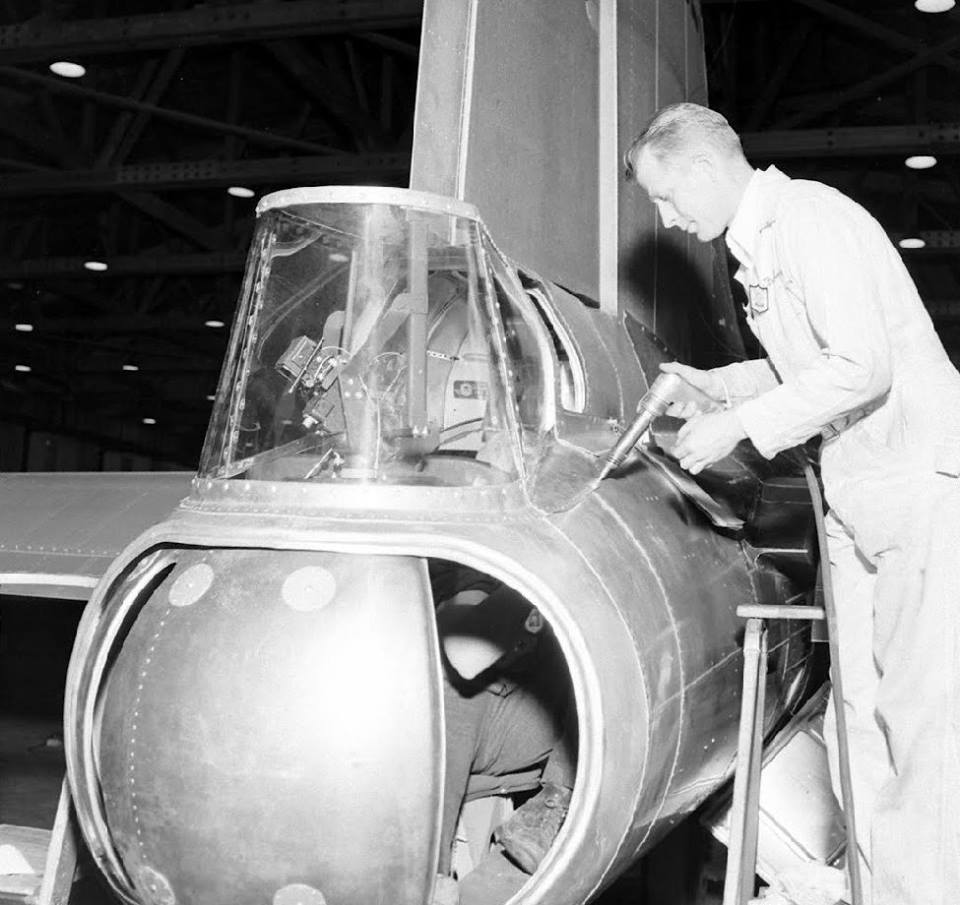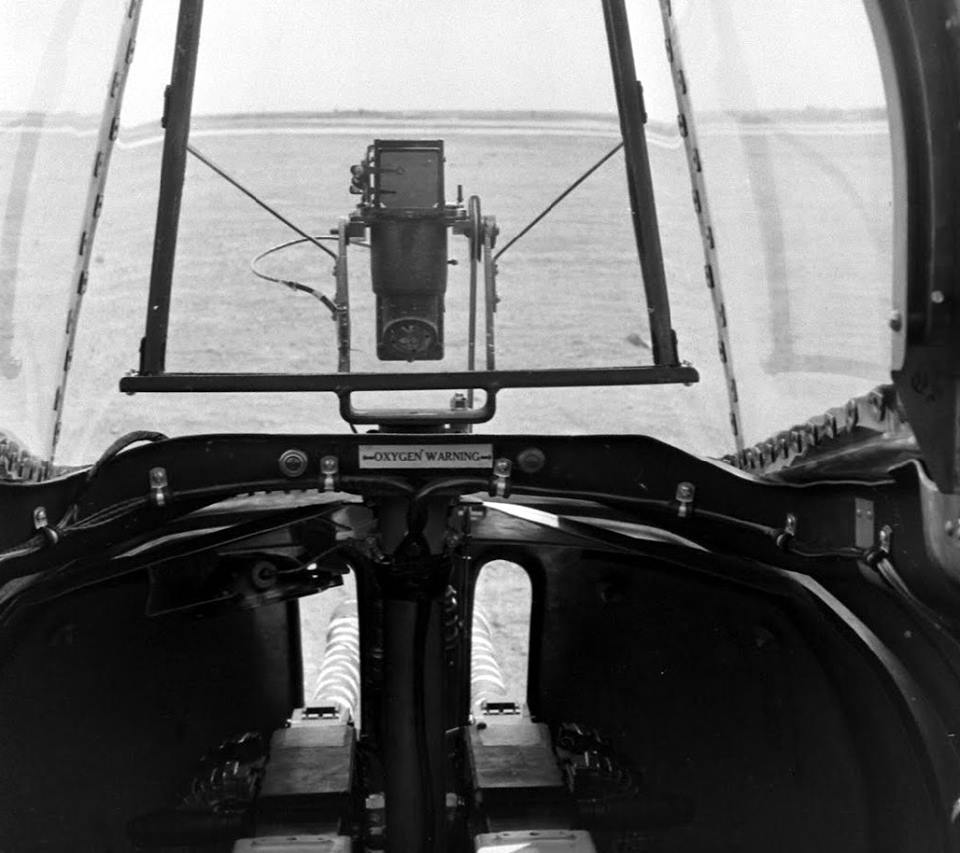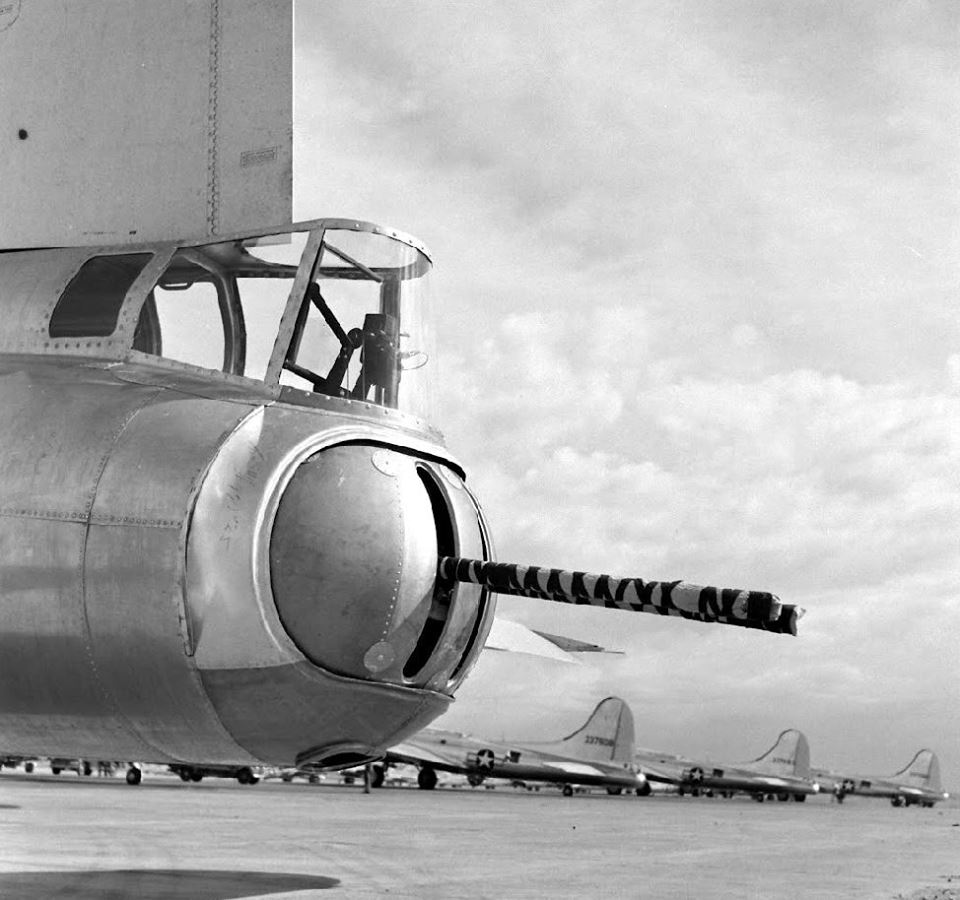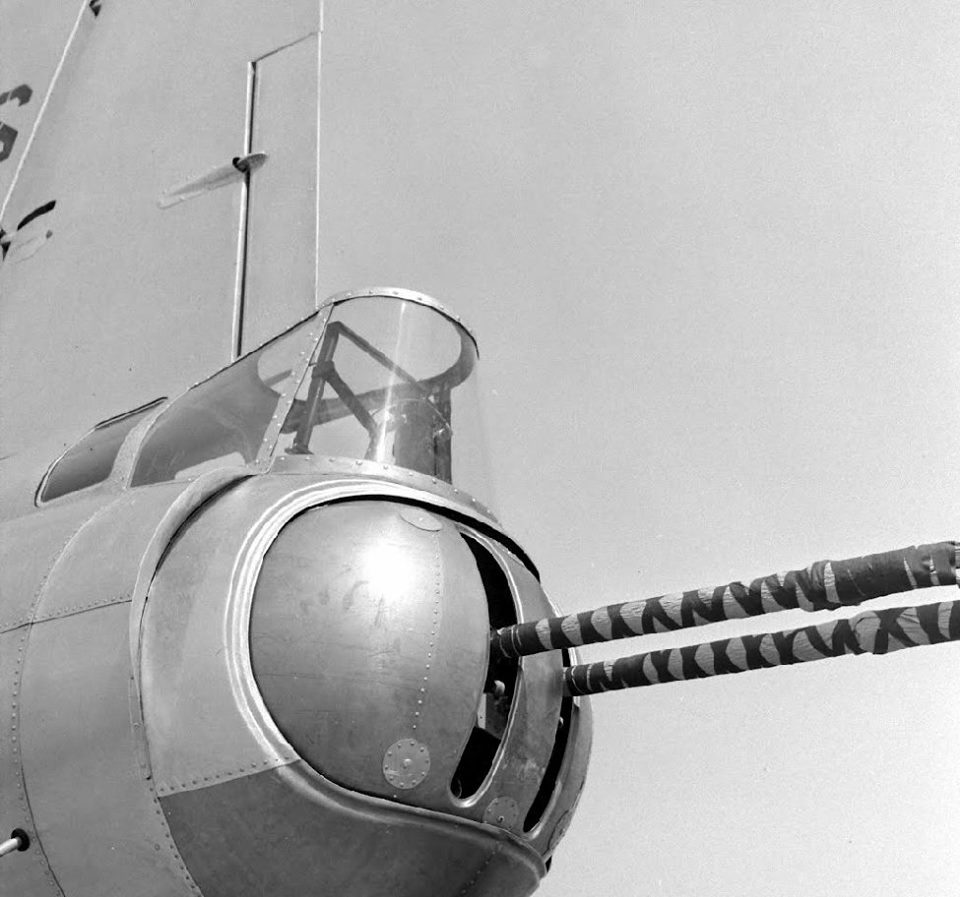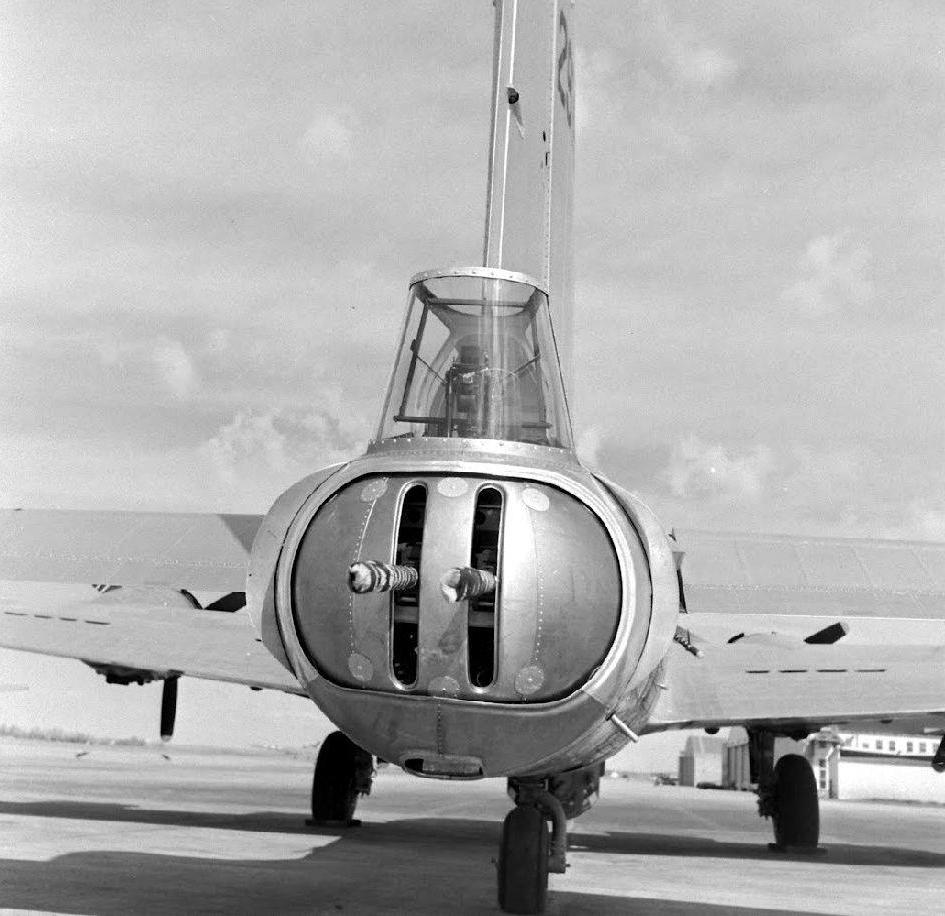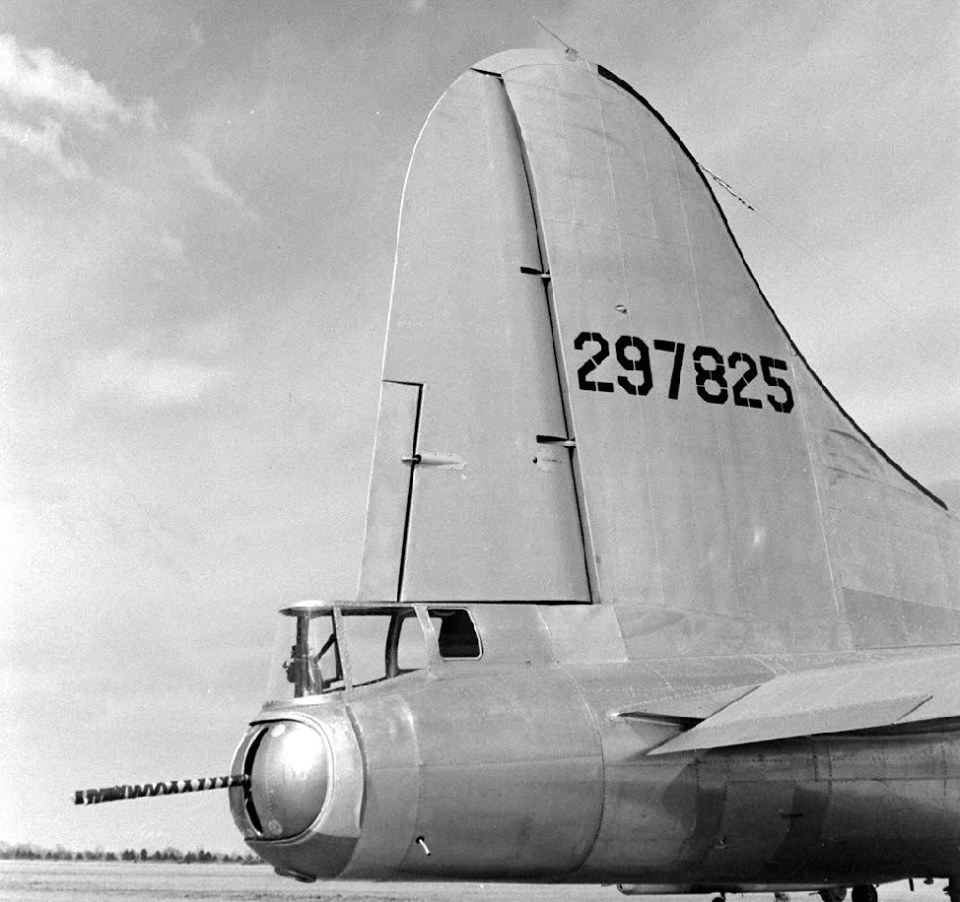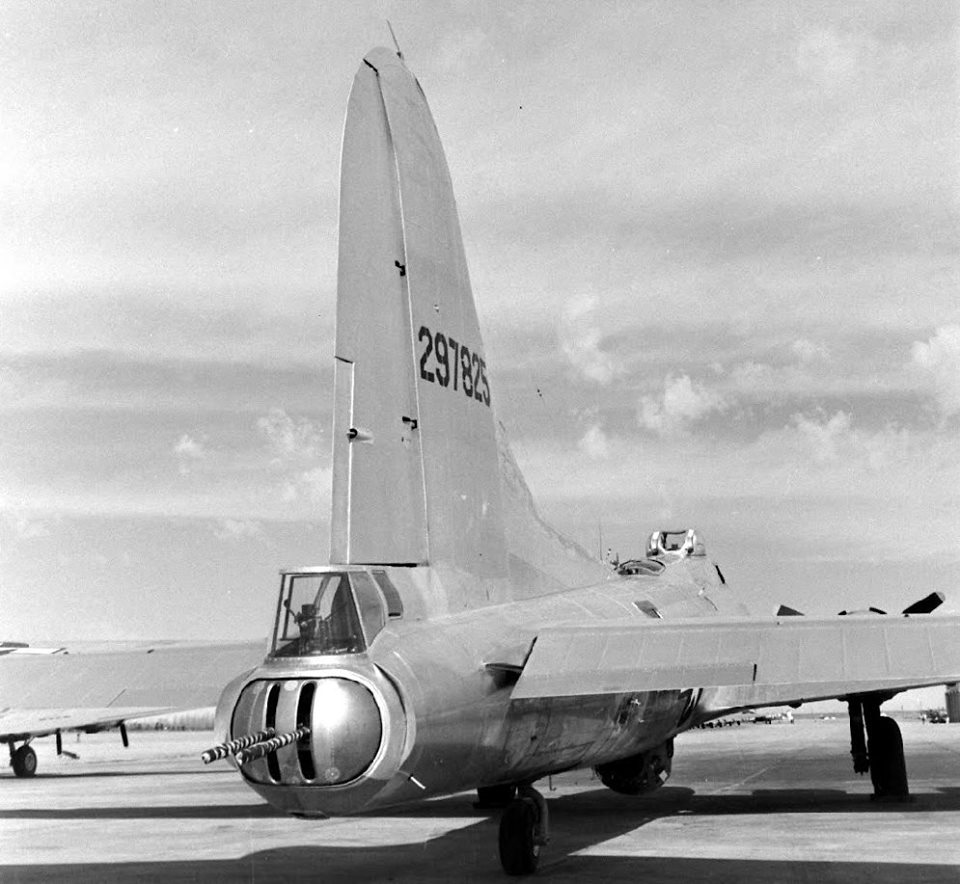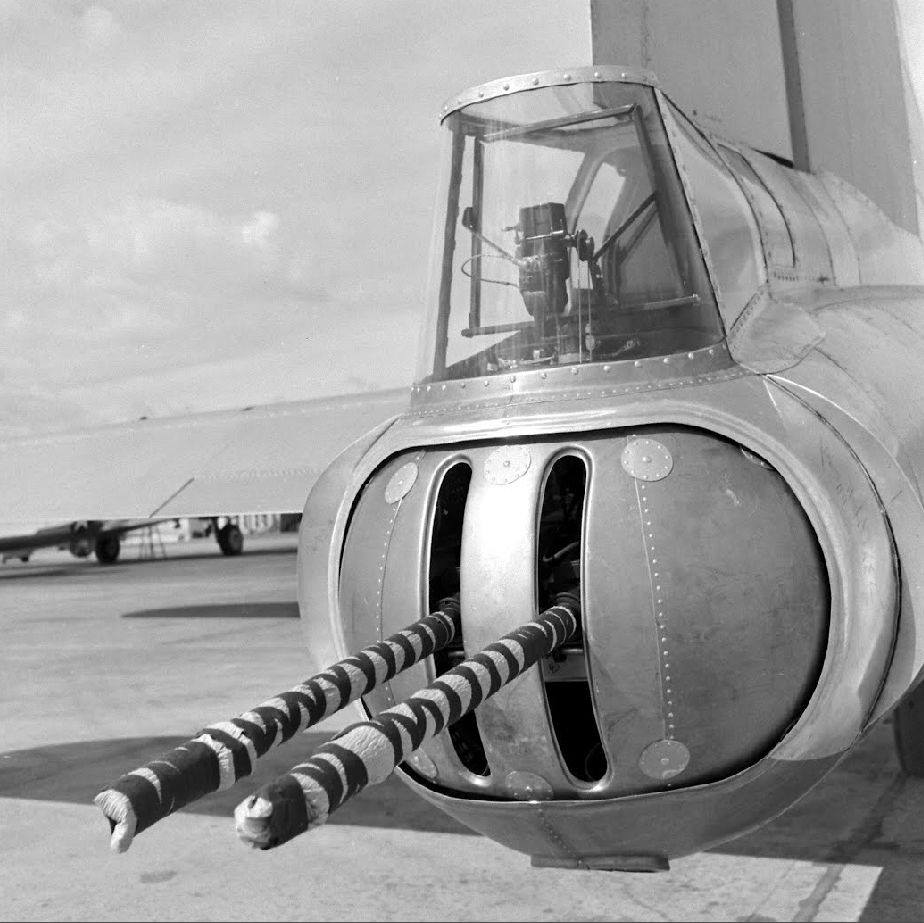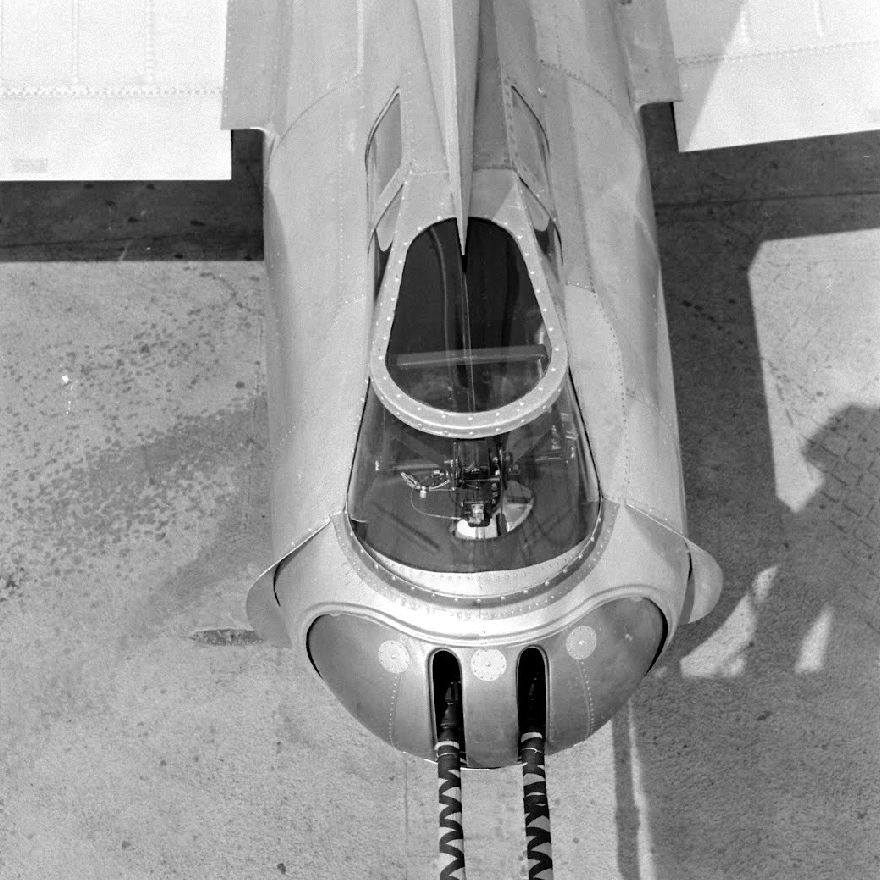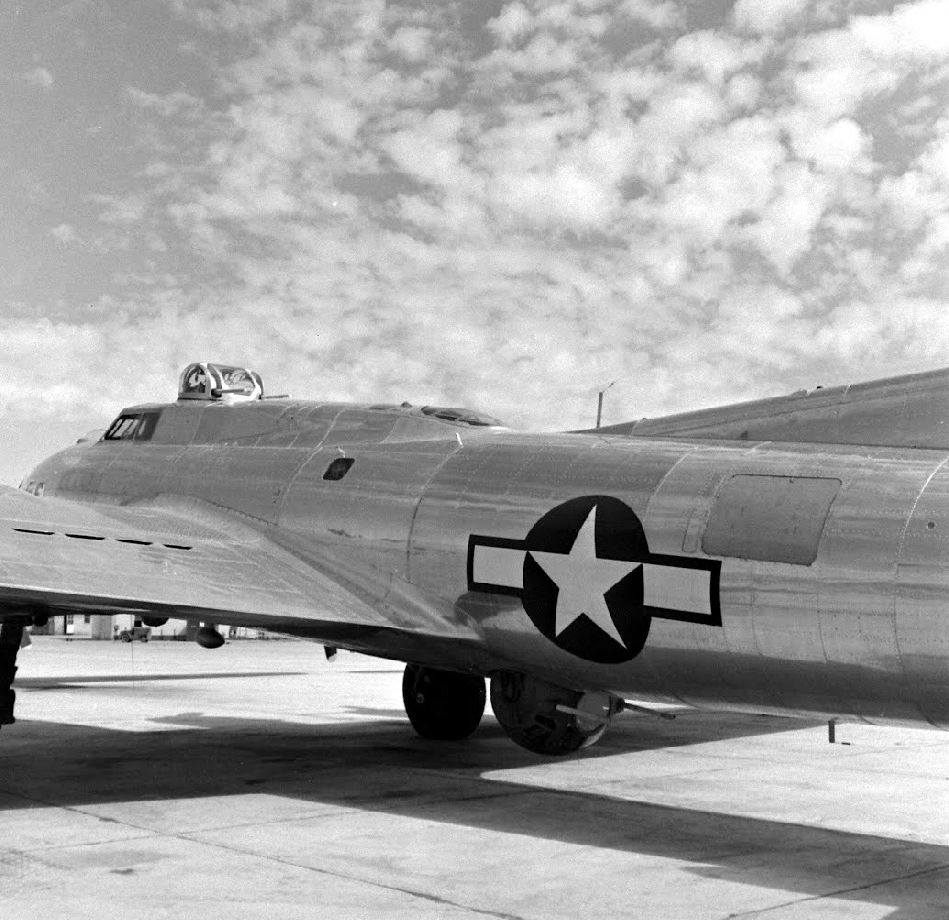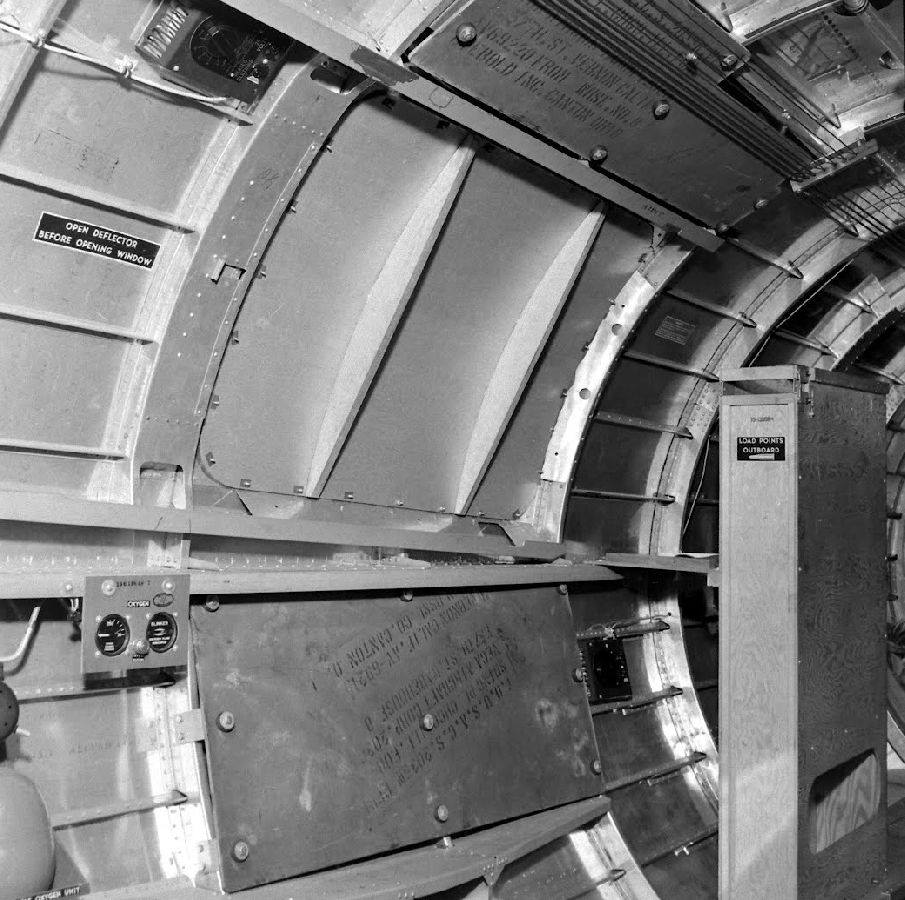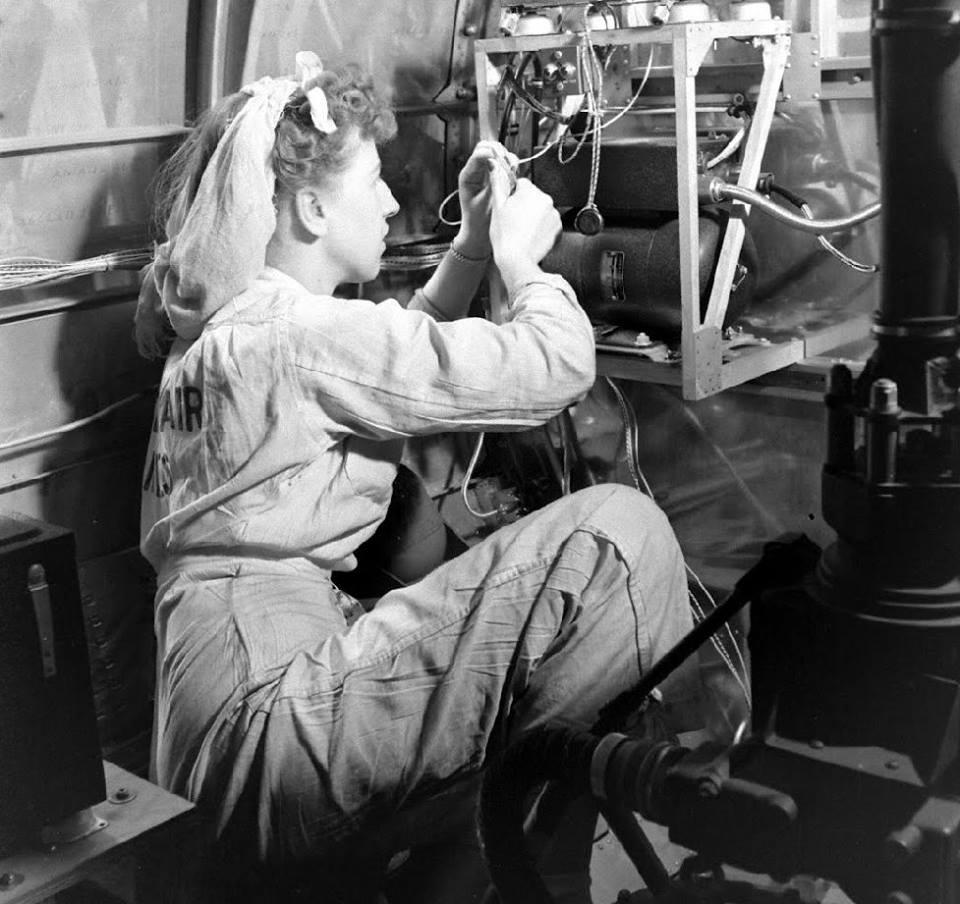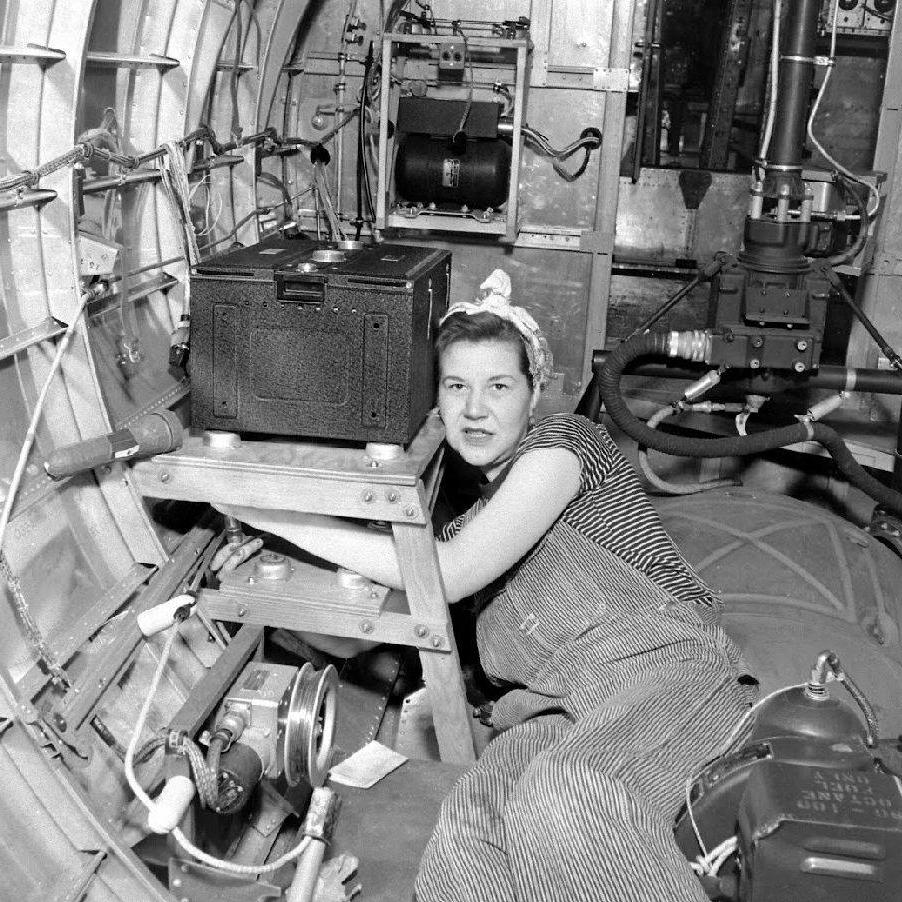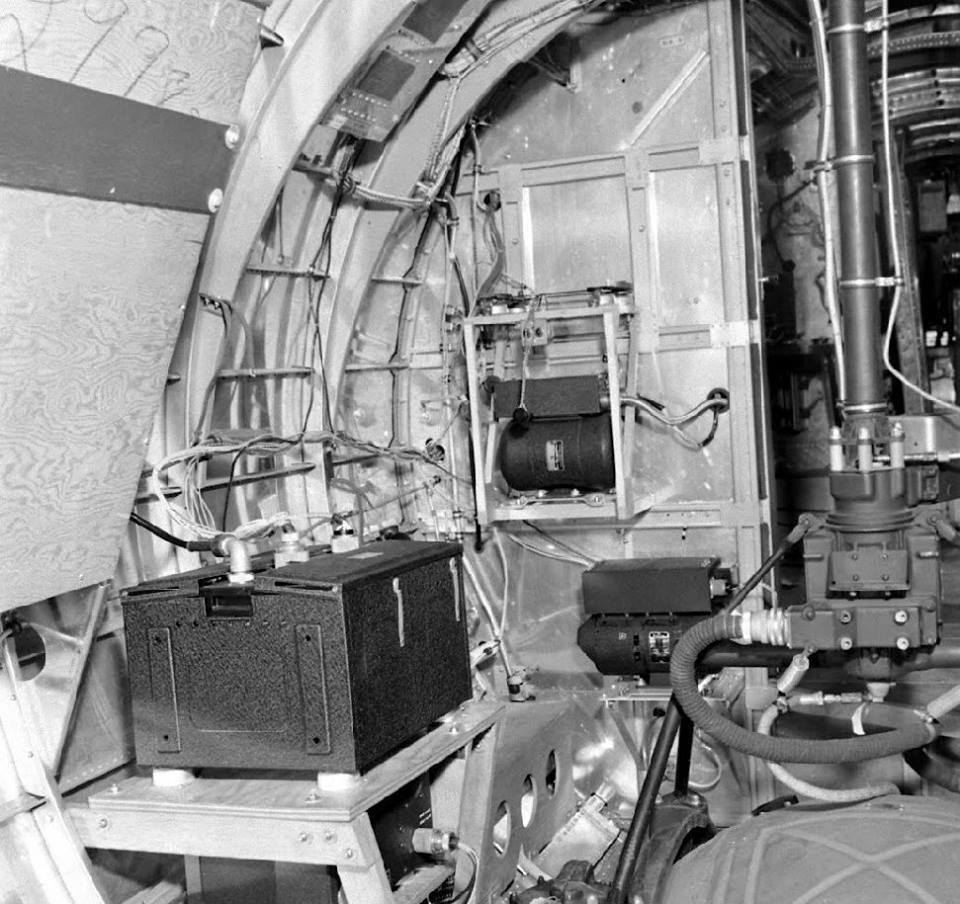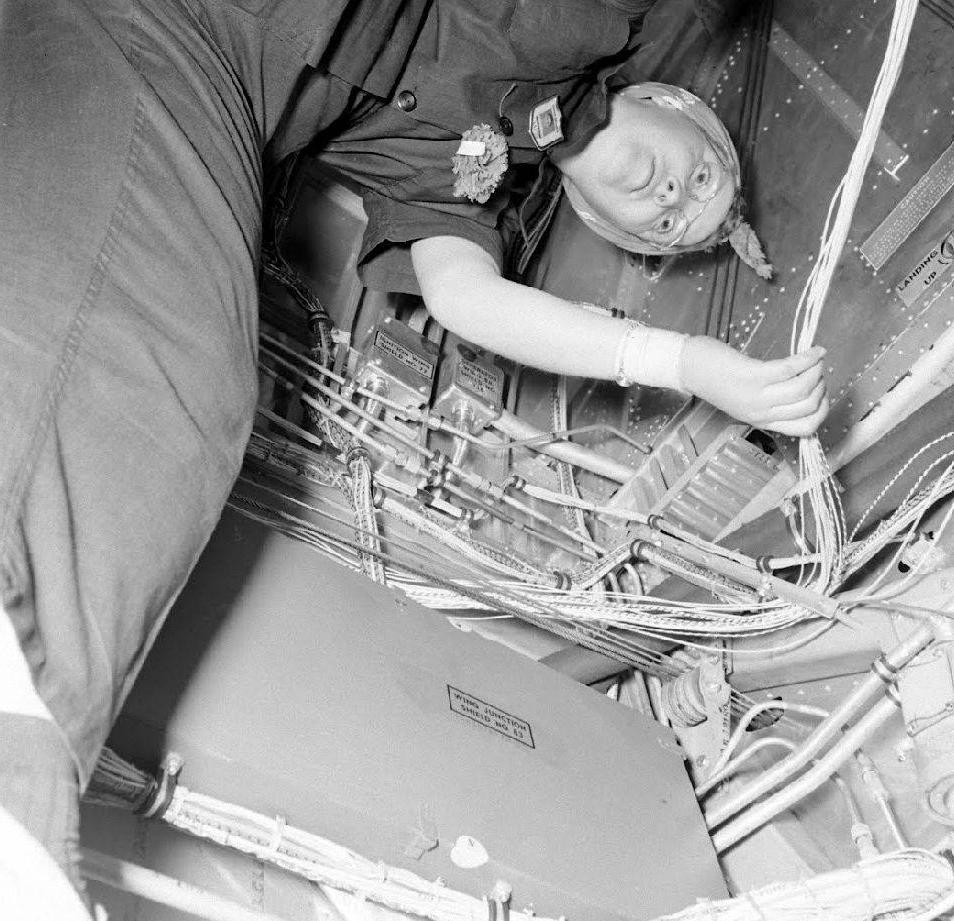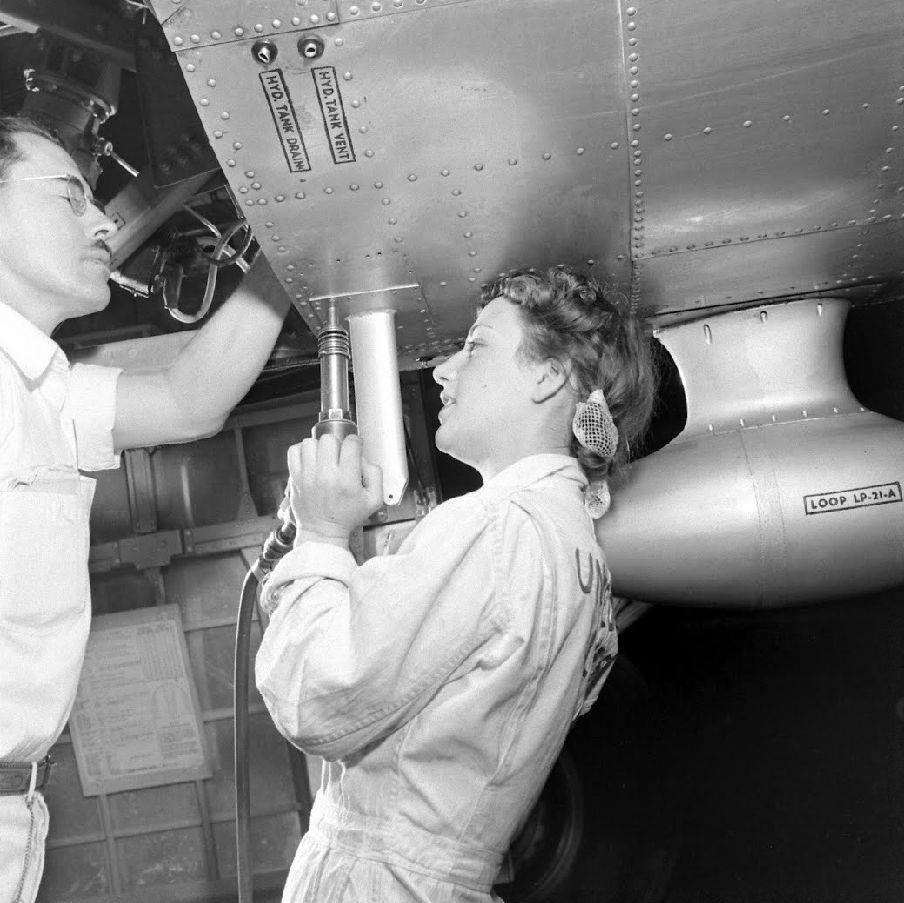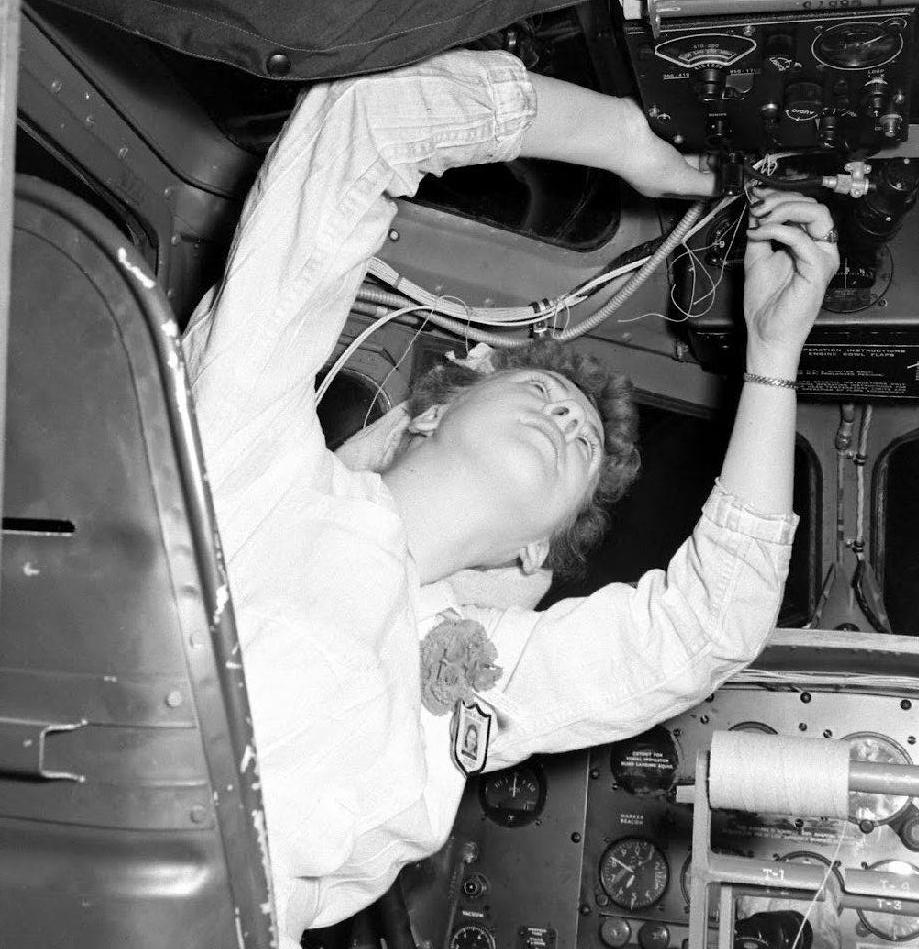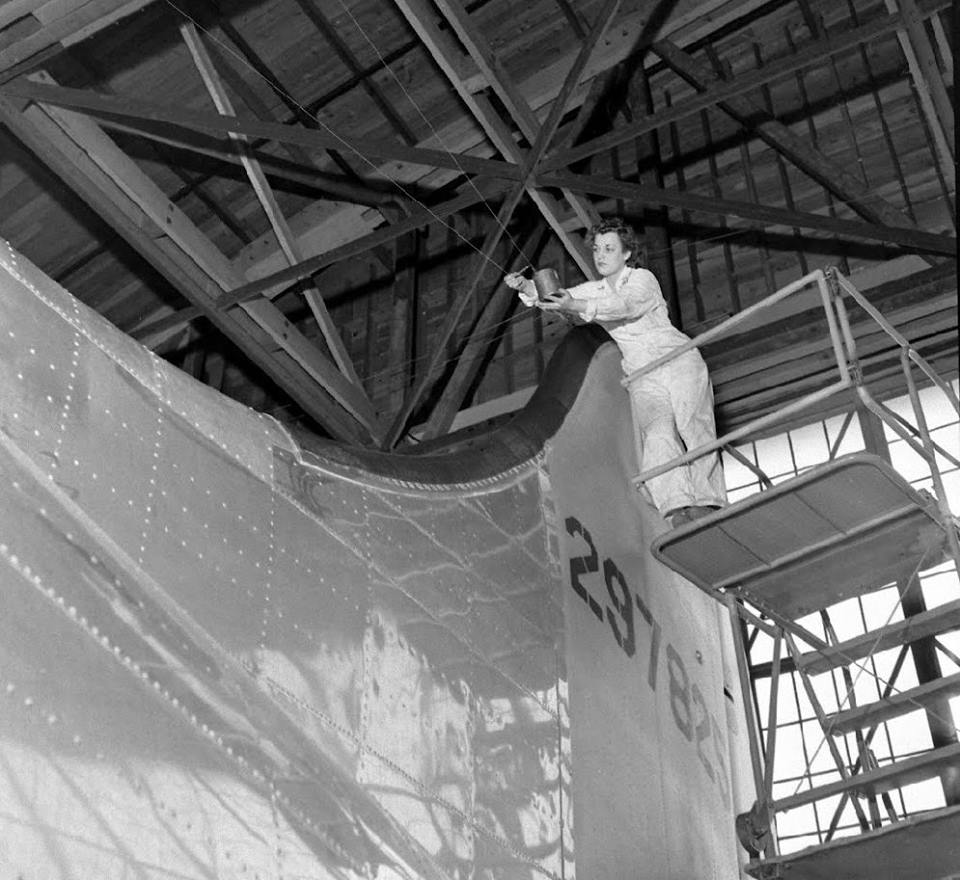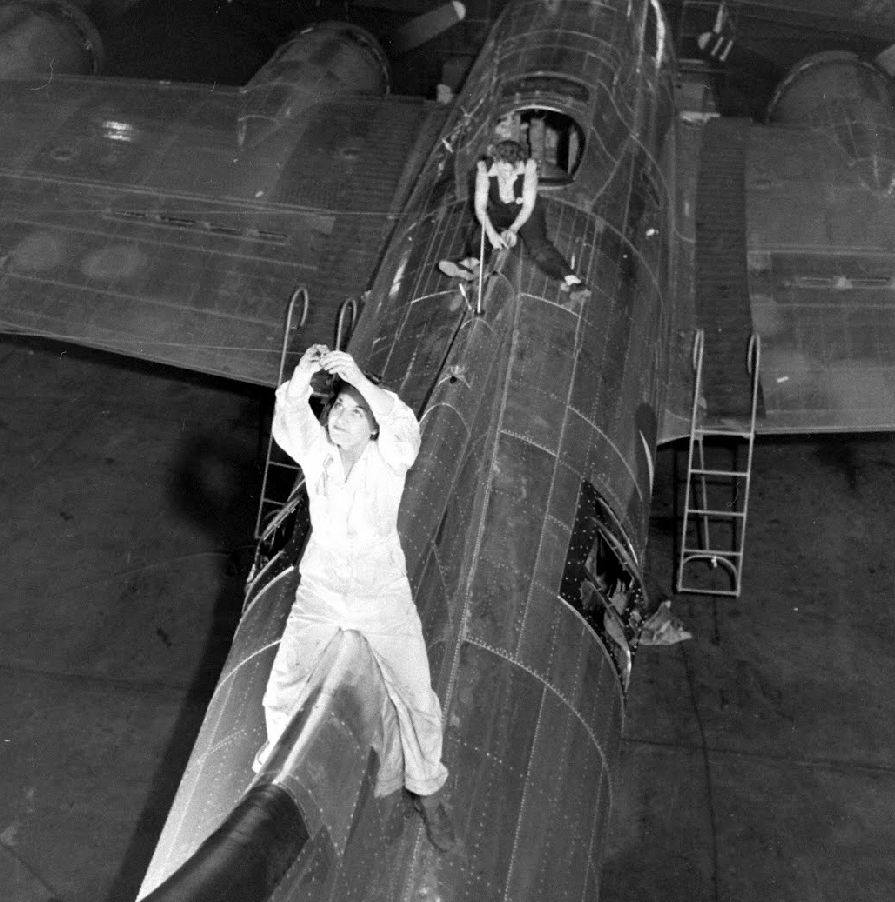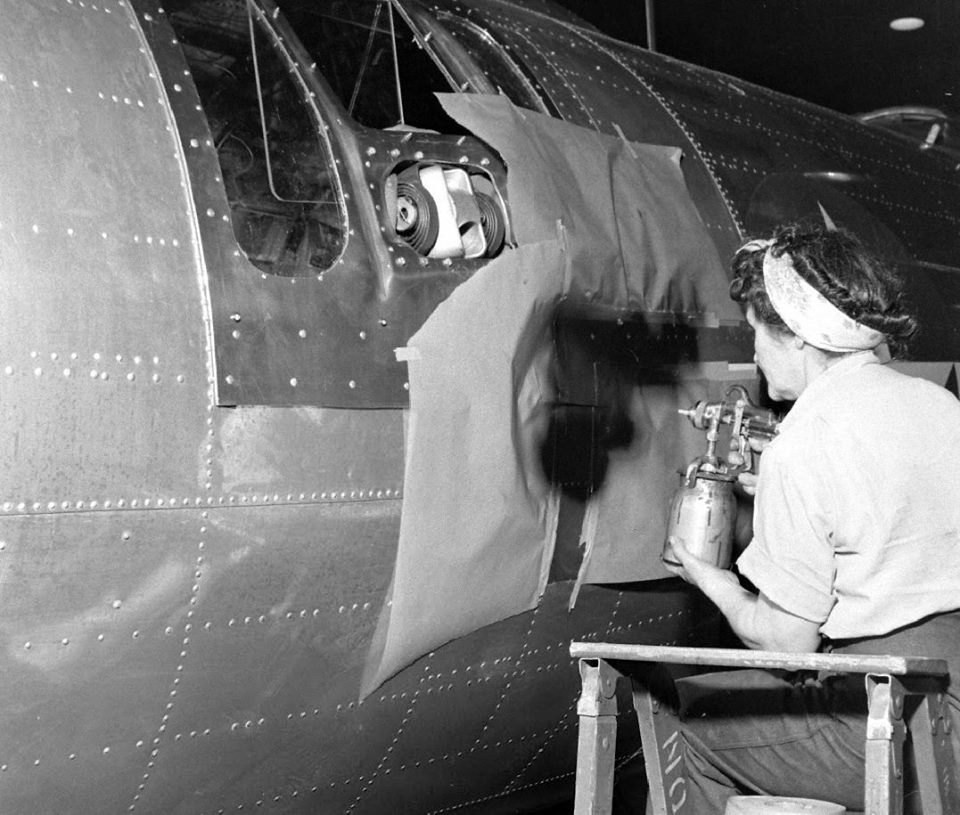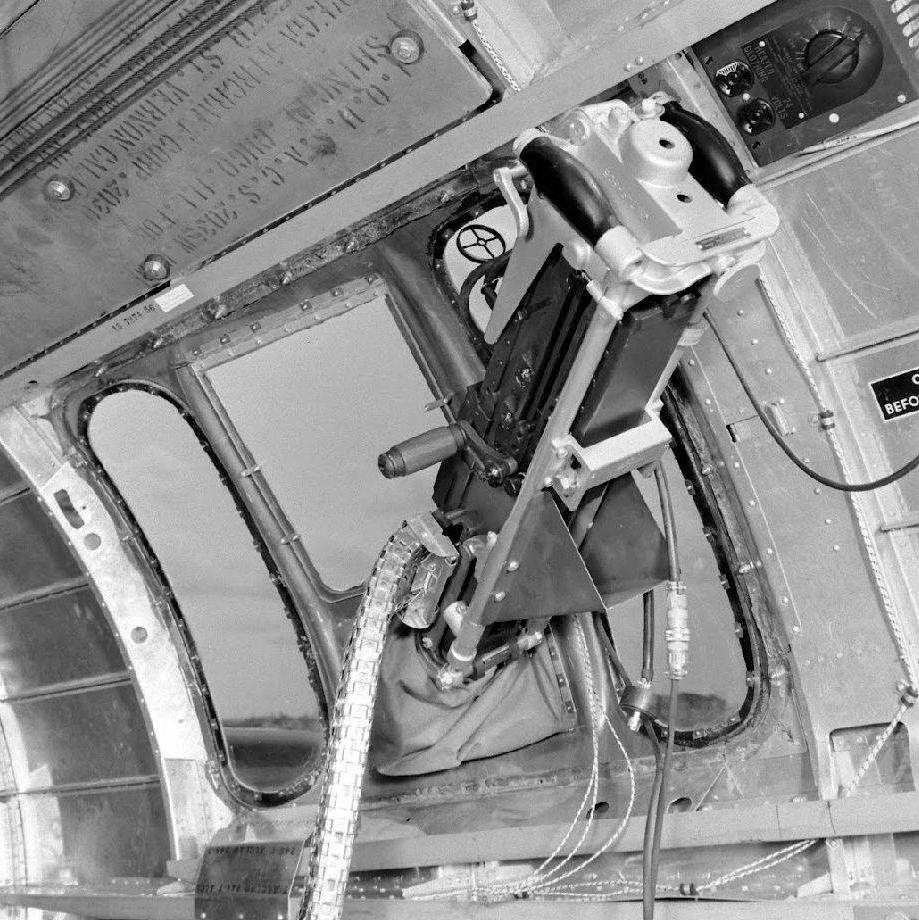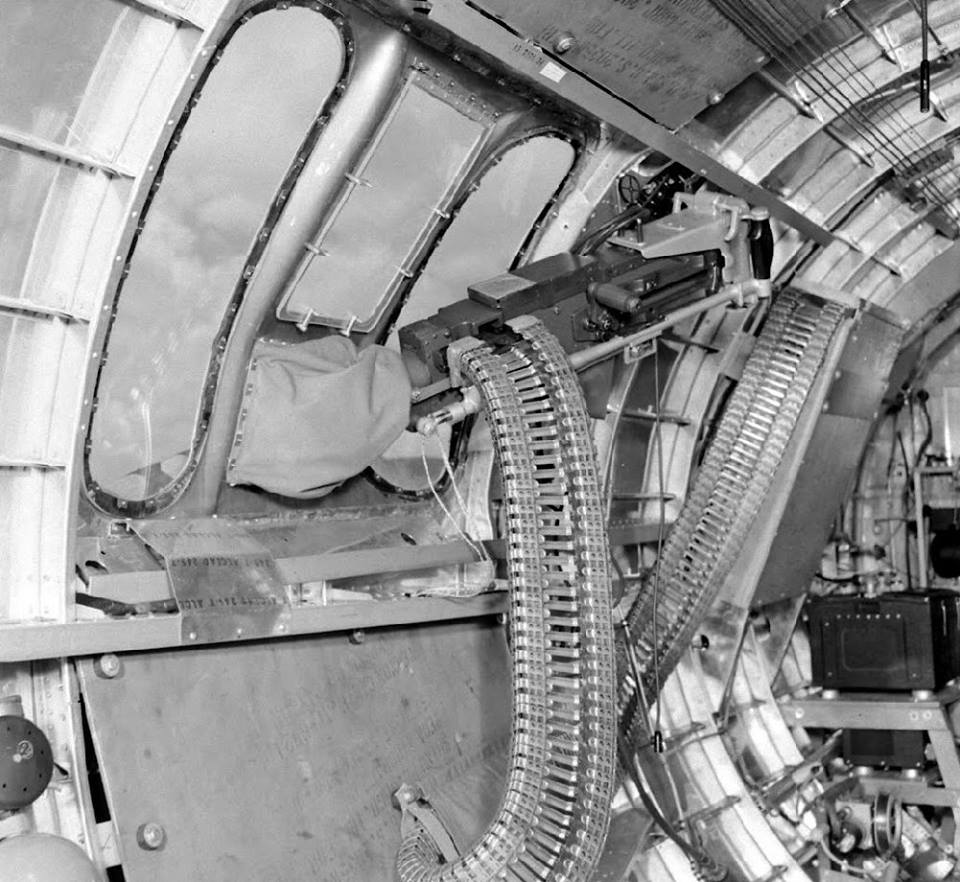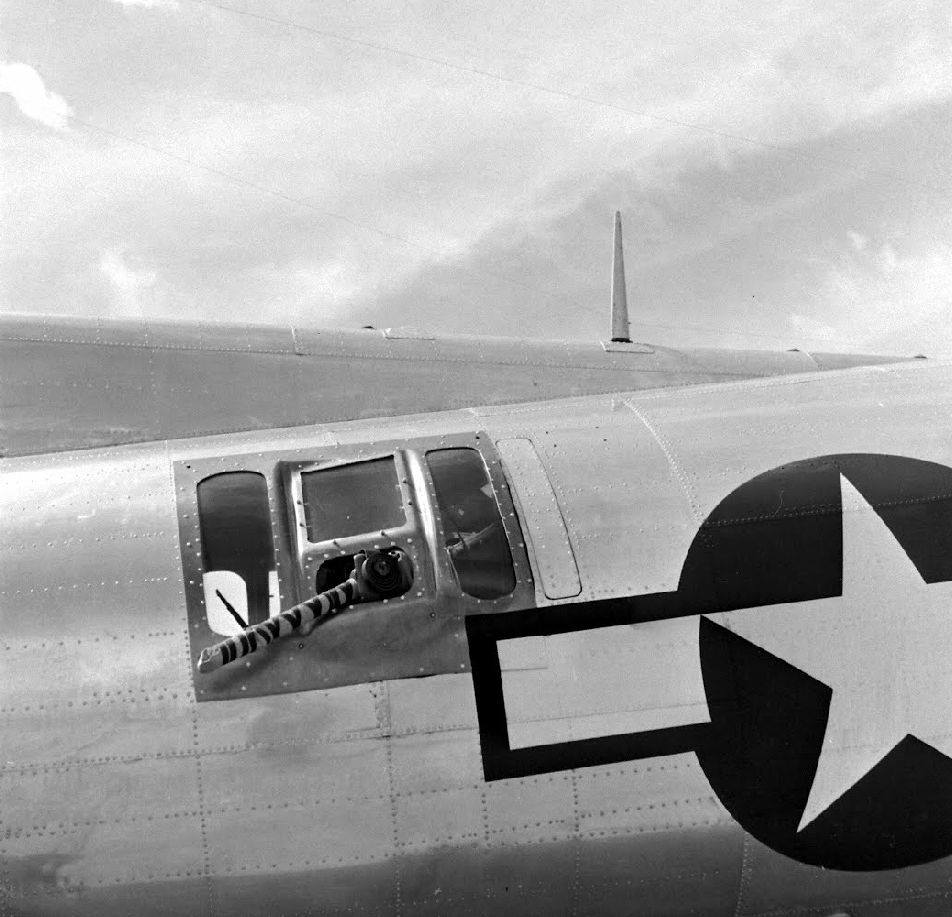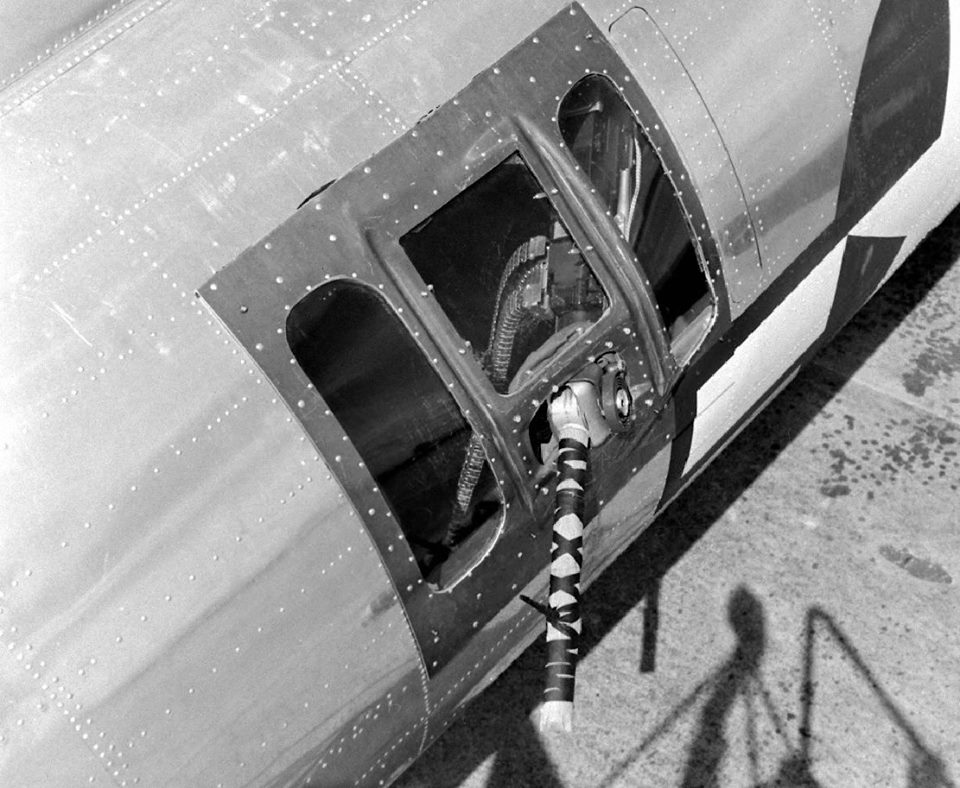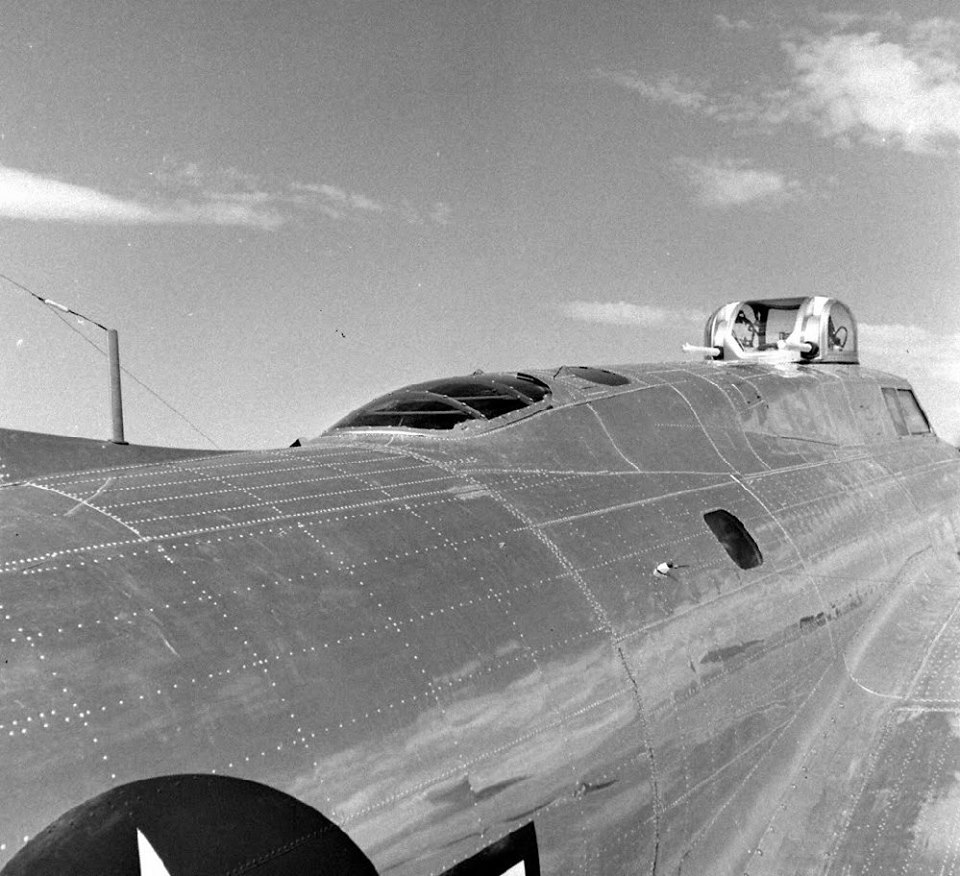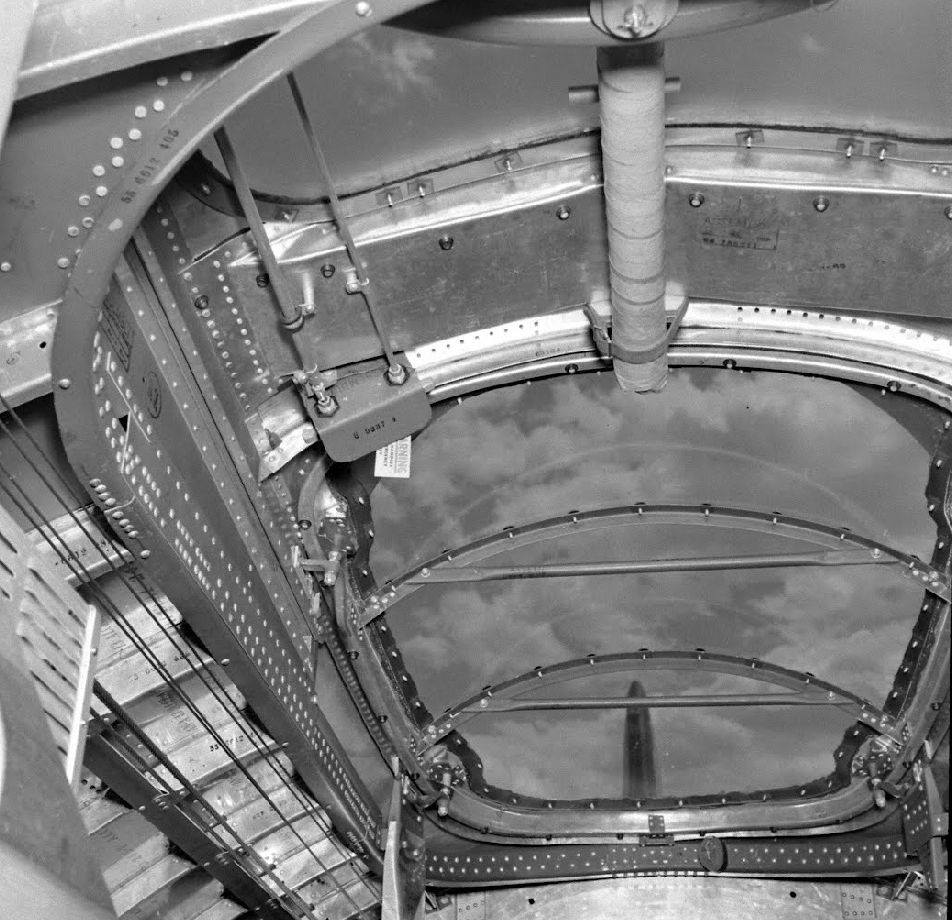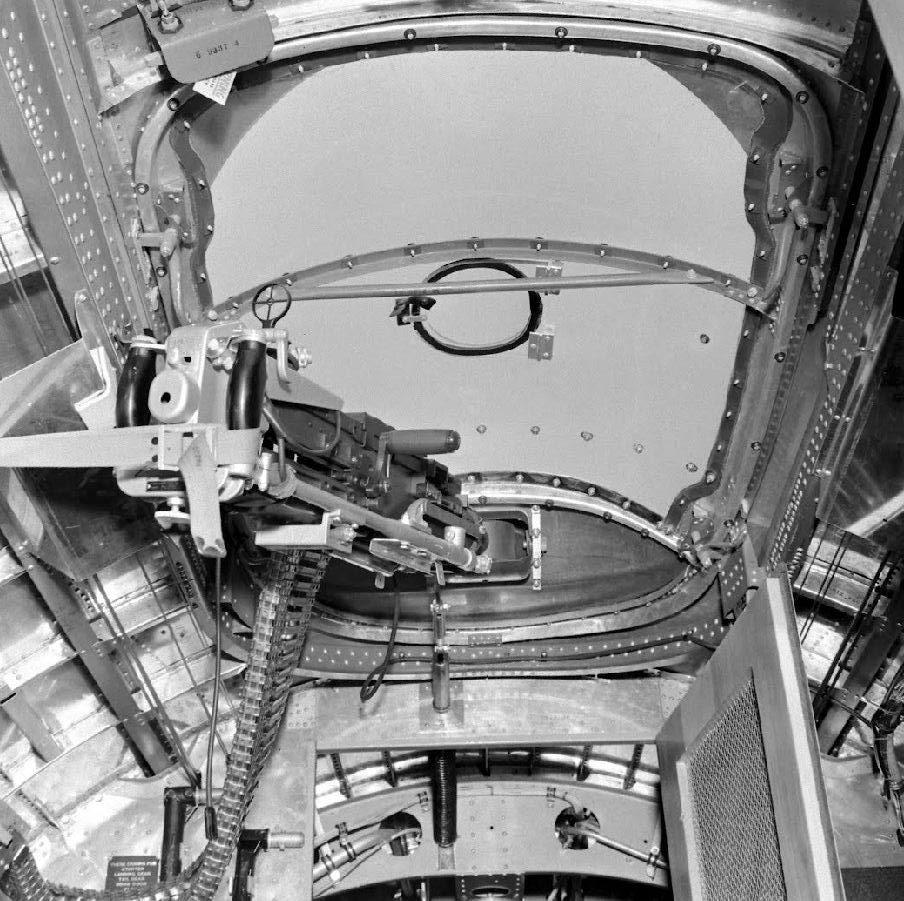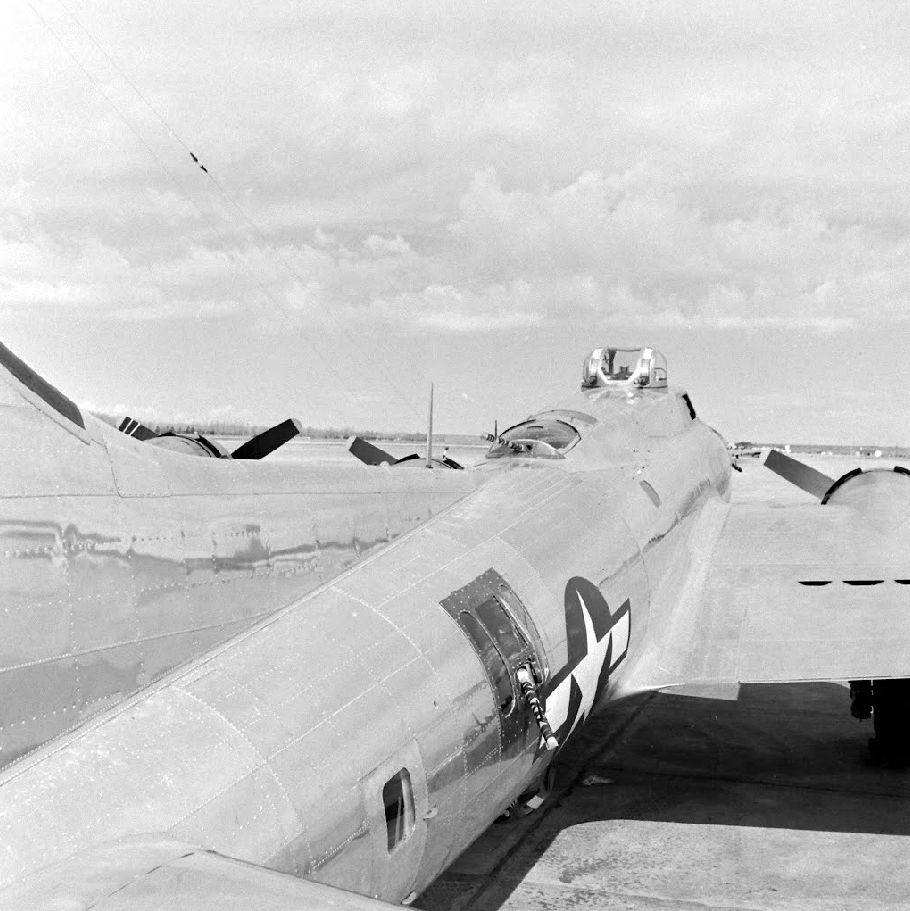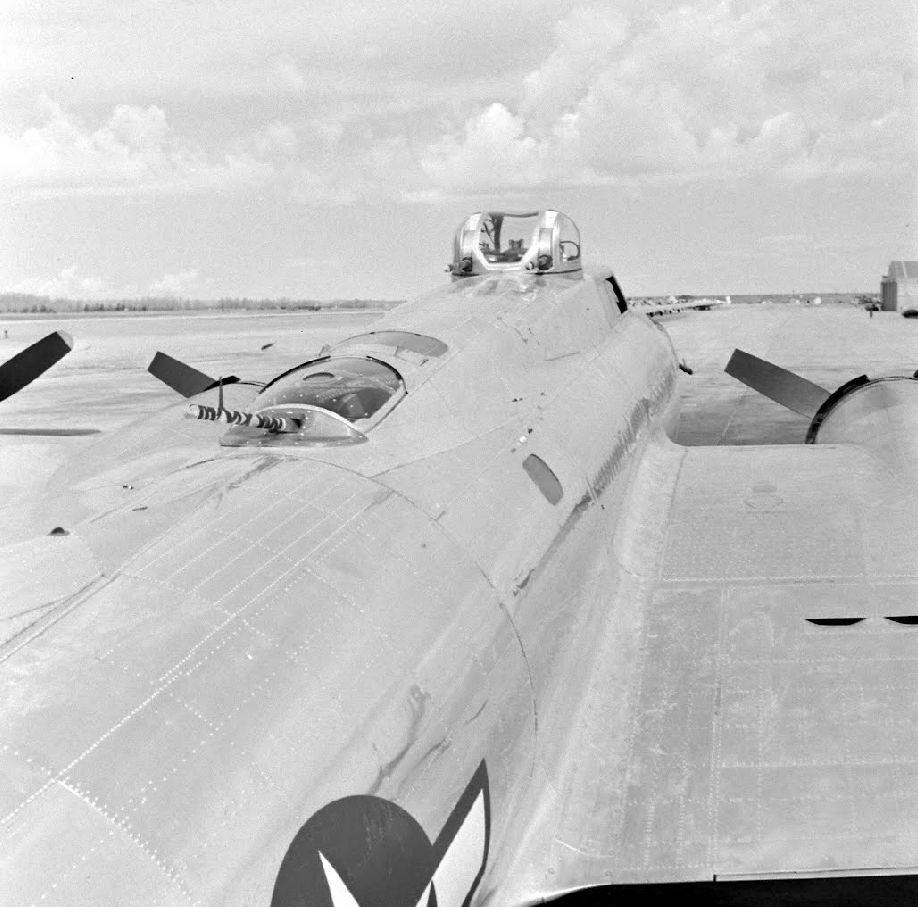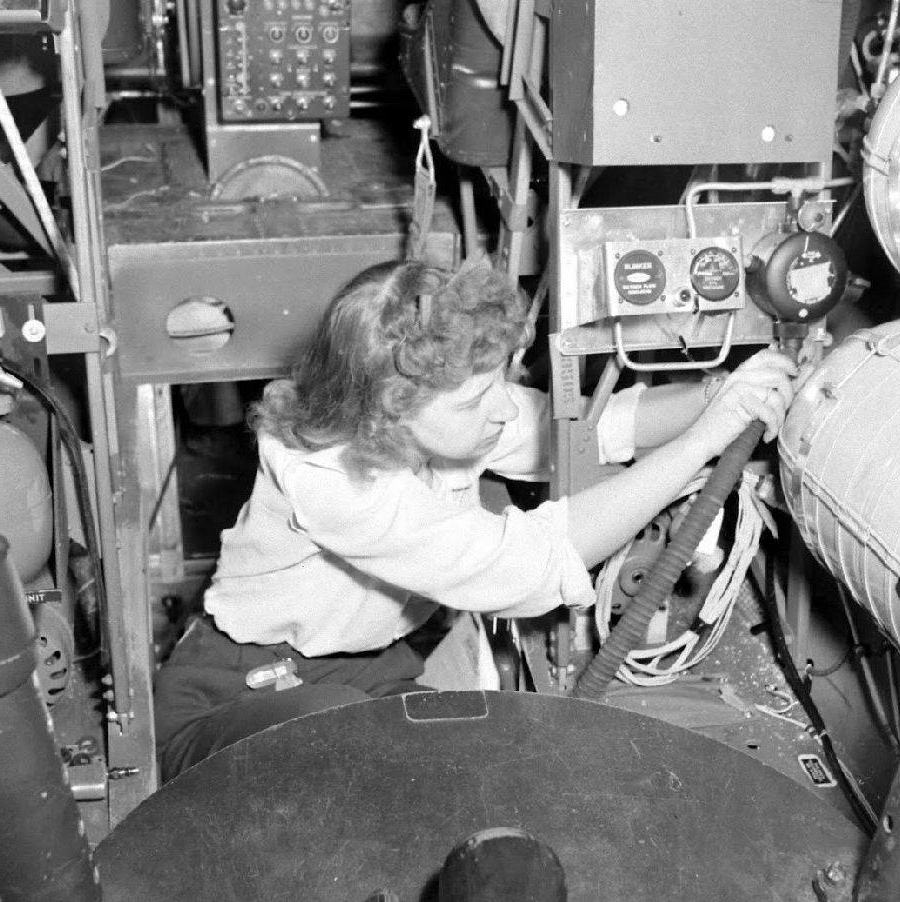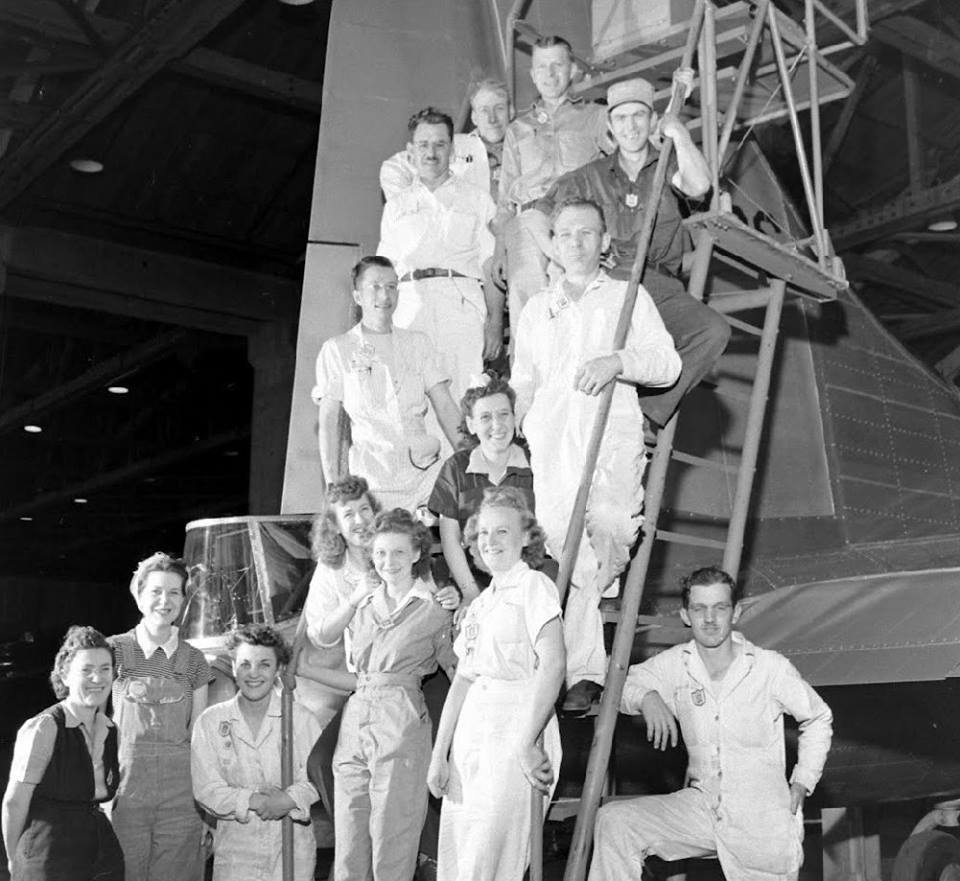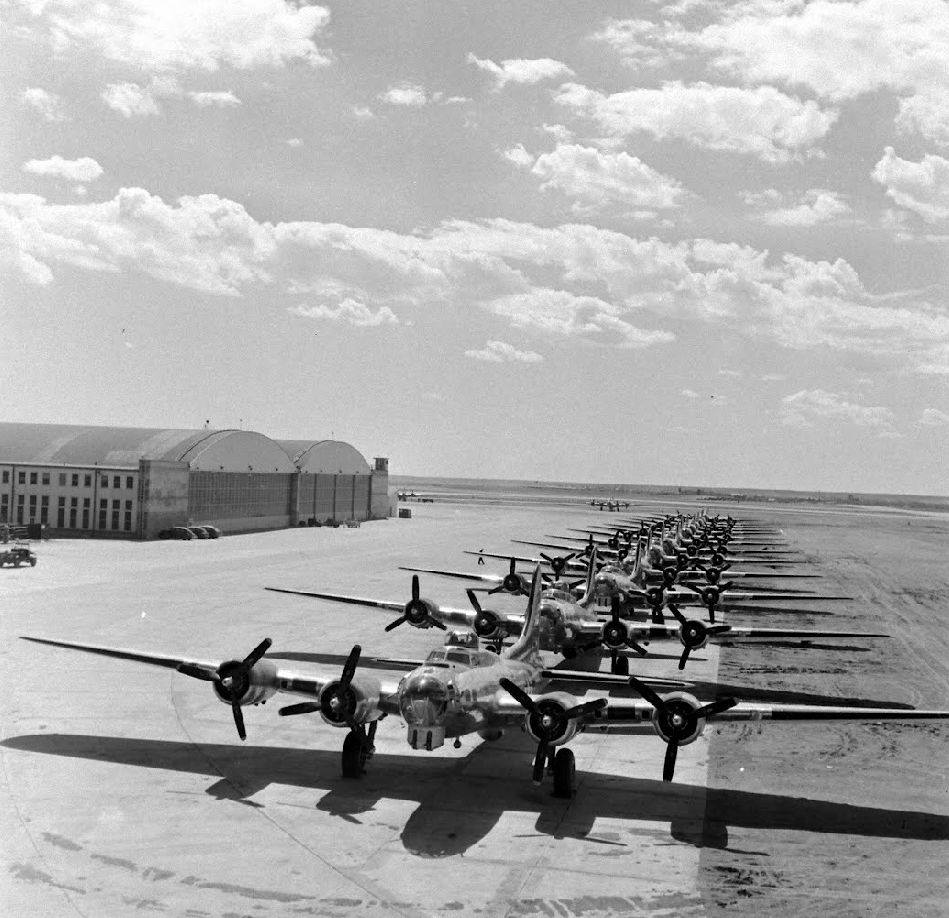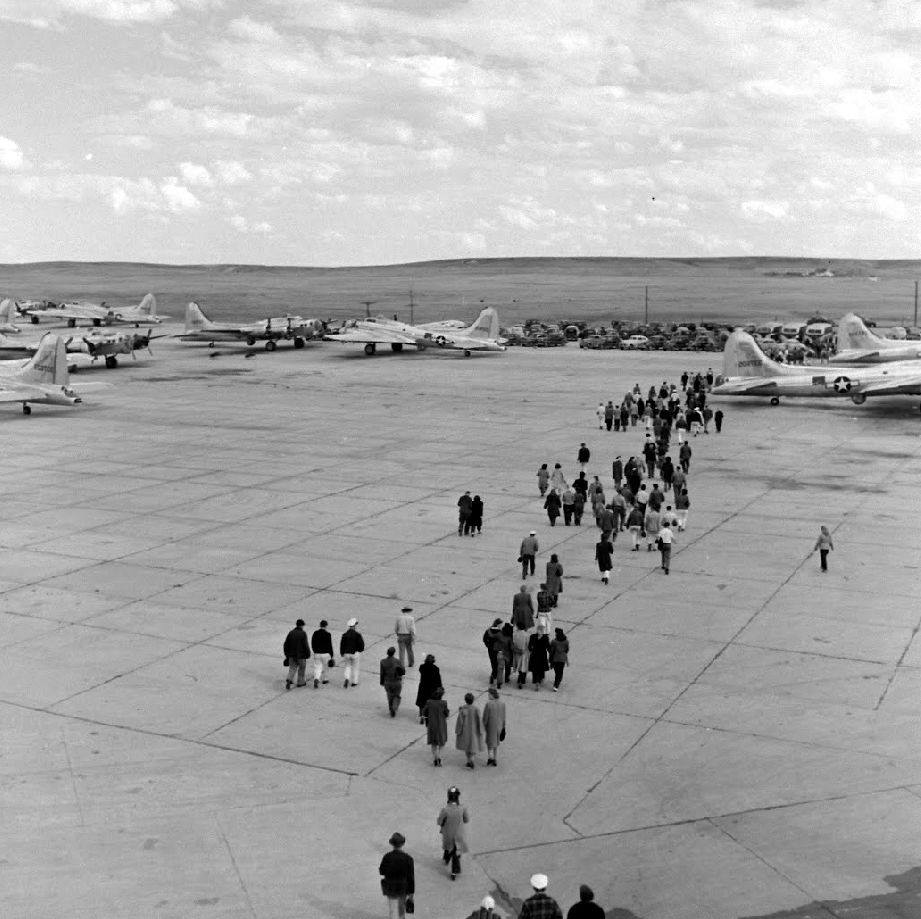
Whenever you see a general history of the air war over Europe, it generally criticizes the US Army Air Forces for failing to develop a long-range escort fighter earlier than they eventually did. While it is true that it took some years for Allied aircraft designers to find a solution to the issue, what is often forgotten is how difficult it is to introduce a new design during a period of war. When the United States entered the Second World War, it threw its entire economic being into it, leaving factories barely able to make alterations in the midst of mass production. Examples of this abound, be it of how the US 8AF turned to Great Britain for droptanks because US development was too slow, or of how the Boeing B-29 was laden with engine issues because its development had been rushed.
This set of circumstances was perfectly applicable to the B-17 – our post on the Navigator’s Table, for example, talks about how many of the most distinguishing changes to the B-17 in wartime revolved around the aircraft’s nose section. US Army aircraft could be altered several times before finally entering combat, be it at a stateside modification center, a theater maintenance depot, or at the actual airbase the aircraft is stationed at. The more in-demand a modification became, the more likely it was adopted into the production line.
Of the various wartime modification centers, none were as large and influential as the United Airlines Modification Center in Cheyenne, Wyoming. In fact, of the 12,677 B-17s built during the war, some 5,736 were altered in some way at the Cheyenne Modification Center. A maintenance hub for United Airlines, Army Air Forces Materiel Command began using it for military purposes in January 1942 before finally entering mass production that autumn.
It was a natural choice, as Boeing had a hand in building the facility before the war. You see, in the early years of the Great Depression, Boeing (like other aircraft manufacturers) had managed to avoid bankruptcy through the success of its subsidiary companies. United Airlines, a partnership between Boeing and engine producer Pratt & Whitney, was key to Boeing’s economic survival because, as carriers of mail, airline companies received generous government contracts. However, this came to a halt in 1934 when a congressional investigation spearheaded by Sen. Hugo L. Black (D-AL) damned the forced conglomerations of mail routes under former Assistant Secretary of Commerce William P. MacCracken, Jr. (R-IL), attacking those companies who had profited from carrying the mail. Since Boeing’s United Airlines was responsible for nearly half of the nation’s mail, it became Congress’s primary target. In the end, a bill was passed which forced the separation of airframe companies from engine manufacturers, air travel services, and other subsidiaries. The scandal so angered founder Bill E. Boeing that he retired from public life, with Boeing suffering to the point that the B-17 prototype (built the following year) had to be financed with borrowed money.
The pictures shown below come from a Life magazine special, providing a timeline of some of the more common changes made to B-17G series. These photos prominently feature Phyllis (42-97825), which arrived at Cheyenne on 1 May 1944, where she was altered for the European Theater of Operations, being assigned to the 379BG on 28 June 1944. Amongst the alterations made to this aircraft, these photos show the installation of cheek guns in the nose, covered waist and radio guns, the aircraft’s IFF, VHF, and Lorenz Blind-Landing systems, and the replacement of the stinger tail with a pumpkin variant. Many of the alterations shown here were actually developed by Cheyenne engineers, with the pumpkin tail gun, for example, being commonly referred to in service as a “Cheyenne tail.”
Some of the alterations shown in this series were also present in the F series. In fact, Lucky Thirteen was one of the earliest examples of a B-17 with monocoque cheek guns, which were designed by W. W. Erickson of United Airlines. Though differently placed than on the G series, they were installed in much the same manner as shown here. Replicating these cheek windows will be difficult, as the only other surviving example of an F model with such windows is Homesick Angel, currently on outdoor display at Offutt Air Force Base in Omaha, Nebraska.
